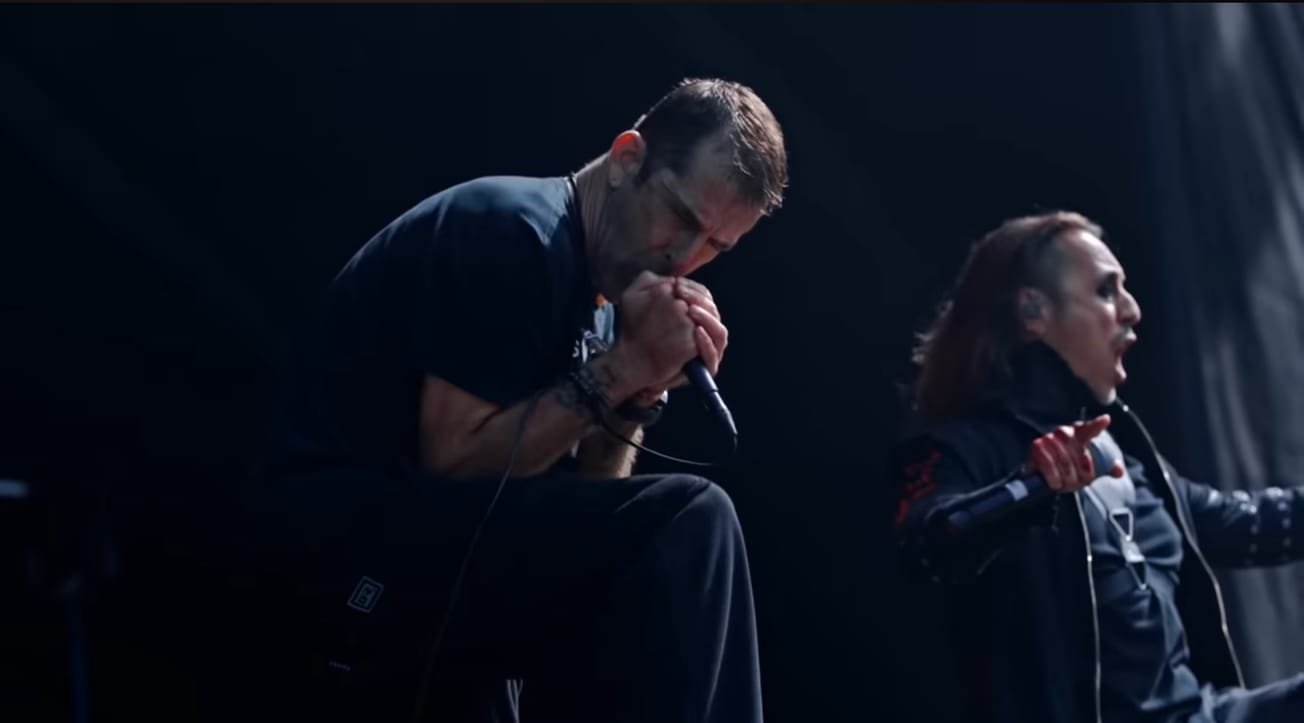The enjoyment of music is simply the satisfaction of recognizing truth. A major scale resolving right on time. A vocal harmony clicking into place alongside the lead. An internal rhyme scheme executed with effortless precision. A lyric so profound it stops you in your tracks. All of these are intangible and incredible truths that decorate our time through music.
But whose truths are worthy of such merit? Here we dip into an excess of honesty; 'cringe.' A withering epitaph for those who spill their guts with no consideration to time and place, no restraint. A word that crops up far too often when considering a certain subgenre of heavy music: nu-metal.
Amongst the most despised genres of music ever, nu-metal is responsible for both the biggest debut album of the 21st century and the fastest-selling rock album of all time, yet its flagship artists are still working to divorce themselves from the genre that they created and created them. Well into the 2010s mainstream music publications continued to find it necessary to strike down young bands that dared to fly the flag while others took great pains to carve out their favorites from the rest of this septicly tainted genre. Lacking in grunge’s tortured genius or emo’s hardcore roots, nu-metal achieved enormous success without managing to free itself from 'cringe.' You can’t just say you love songs like “Last Resort” or “Bring Me to Life,” you have to qualify them as guilty pleasures that ‘you don’t care WHO knows you still listen to.’ Rejected by Generation X as blasphemy, and renounced by Millennials as embarrassing; nu-metal is the bastard child of musical phenomena.
All this rejection has an upside though in that the entire scene and every album it produced feels underrated. Grunge was heralded as historic on impact while 3rd wave emo received its retrospective acclaim but even the biggest nu-metal albums are rarely mentioned outside of specific genre lists. And far be it from some impenetrably difficult music, this shit is basically pop in drop tuning, a musical movement energized by commercial possibilities that swung for the fences as often as possible. Thus, even years deep into a supposed ‘nu metal revival’ the genre still feels like untrammeled ground. Acres of albums cut in million-dollar studios with six-figure music video budgets lost to time in the boom years of a genre nobody much bothered to catalog. It’s why, several years deep into my personal rabbit hole journey I keep discovering new favorites.
It’s also why I’m so excited to introduce you to The Nu Metal Agenda’s 100 Greatest Nu Metal Albums of All Time, expanded from my original list of 50 with the help of an incredible community of writers who believe in this music as much as I do. My highest hope is that you don’t just appreciate the albums you know but discover something new. So please; lace up those Adidas', cinch those JNCOs, pierce that eyebrow, and enjoy our list of the 100 Greatest Nu Metal Albums of All Time. — Holiday Kirk
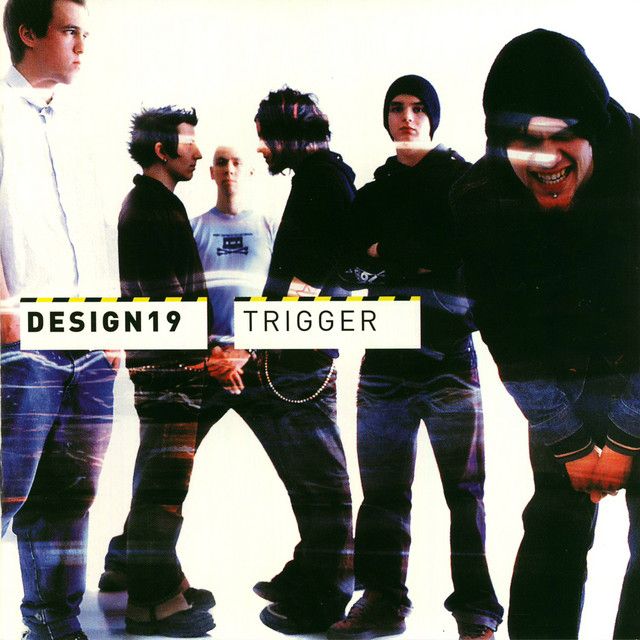
100. Design19
Trigger
[Mercury; 2002]
Like the Oasis to Deftones’ Beatles, Design19 engage in such extensive White Pony worship across Trigger they completely lift a lyric from “Digital Bath” for the chorus of “Downstairs” (“We are downstairs / where no one can see”). But that White Pony devotion - with a dash of Lateralus (“Ars Magna Sciendi”) and Wisconsin Death Trip (“I Go Disco”) - feels fresh coming from an era well before Deftones worship became common enough to necessitate the invention of “nu-gaze.” And when Design19 achieve their own kind of liftoff on the magnificent “FFWD” it’s majestic enough that even Chino might have been a bit jealous. — Holiday Kirk

99. Limp Bizkit
Still Sucks
[Suretone; 2021]
Two decades removed from their commercial peak Still Sucks marks a first for Durst in that it’s musically light, unencumbered with having to shore up Interscope’s quarterly earnings reports leaving him free to enjoy making music with friends. After chasing relevance with the political misfire of The Unquestionable Truth and the unbecoming immaturity of Gold Cobra, Durst’s marketing genius returns as the band settles into old age with an inviting abundance of “Dad Vibes” that attracted new fans and reinvigorate old ones. They had nothing to prove and managed to prove it anyway. And that title? Limp Bizkit Still Sucks? Incredible. Fred Durst, man. Never count him out. — H.K.
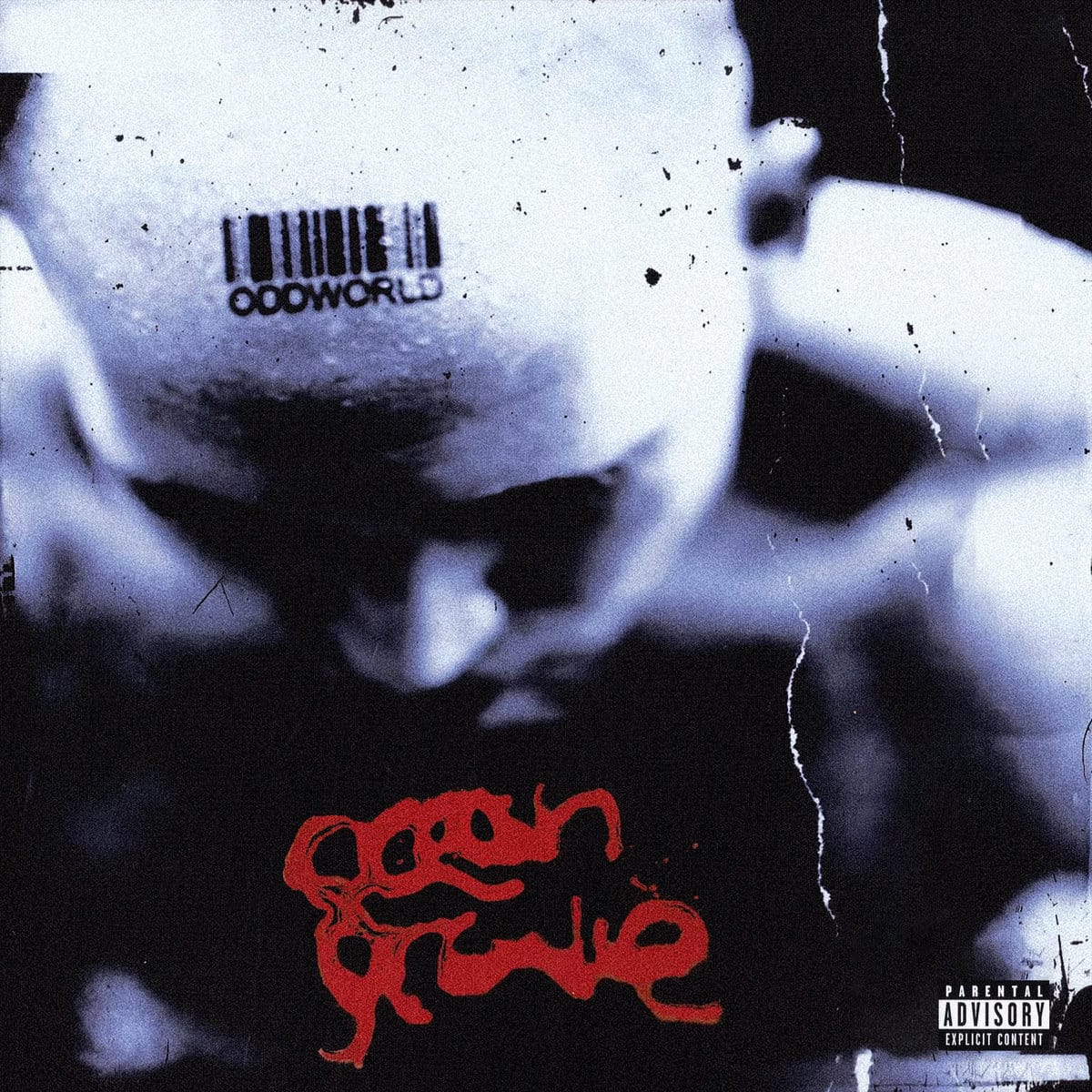
98. Ocean Grove
ODDWORLD
[Sharptone; 2024]
A common criticism of peak era Limp Bizkit is that the hits hit but the albums are way too long. While I believe the sprawl of Significant Other and Chocolate Starfish are integral to their charms I won’t lie, that I can’t deny, both would probably benefit from a little trimming to their hour plus runtimes. If you relate I present ODDWORLD by Ocean Grove, or, exactly what it would sound like if you shaved down the aforementioned to their most essential 25 minutes. And while the Bizkit abounds their closest ancestor would actually be Melbourne neighbors Superheist; another Australian nu-metal act that fused a reckless ‘get the fuck up’ energy with the kind of humid bounce that could only come from down under. Just when you think you’ve clocked this though “LAST DANCE” drops some premium Koi No Yokan worship onto your head and if that’s not a Sevendust reference I’m hearing on “SOWHAT1999” (“Get up… / Get up…”) my ears (and brain) are broken. And it's only 25 minutes. Fellas, it could be a little longer than that. It’s not too late for some New Old Songs. — H.K.

97. Adema
Adema
[Arista; 2001]
The inevitable fact of Adema’s existence is that singer Mark Chavez is Jonathan Davis’ half-brother. Did his family ties to the Korn frontman help his band land their debut album on Arista Records? Probably. Does he spend the duration of that debut singing exactly like Jonathan Davis? Right down to the swapping of every "Me" for a "Moi." But the other big name to note isn’t just Davis, it’s Arista Records then-president LA Reid, who won Adema in a three-way label bidding war. Adema’s relationship with Arista brings to mind the moment grunge meant every label needed their own token grunge band as a matter of policy. Arista needed a nu-metal band, thus, Adema. And while Adema sounds like a can’t-fail major label investment; shiny as hell, ghillied up with trendy electronic accents and a lyric sheet hell bent on ticking off every single cliche in the nu-metal pantheon (even Korn would have thought twice before calling a song “Pain Inside”), it works because Mark Chavez truly embodies the kid brother energy created by the Jonathan Davis' shadow . When the elder Davis sings about “spinning round and round” on Korn's “Falling Away From Me” it’s about the dizzying cycle of parental abuse, when Chavez does the same on “Freaking Out” it’s because his mom and dad say things that make him “mad” and “sad,” respectively. On “The Way You Like It” Chavez strikes a wholly unconvincing, yet fun as hell, big baller rapper persona that culminates in a triumphant “They always said I’d never be shit but look at me now!” sounding less like someone popping bottles at the club and more like the least popular kid in your neighborhood watching his new inground swimming pool being installed just in time for summer. — H.K.
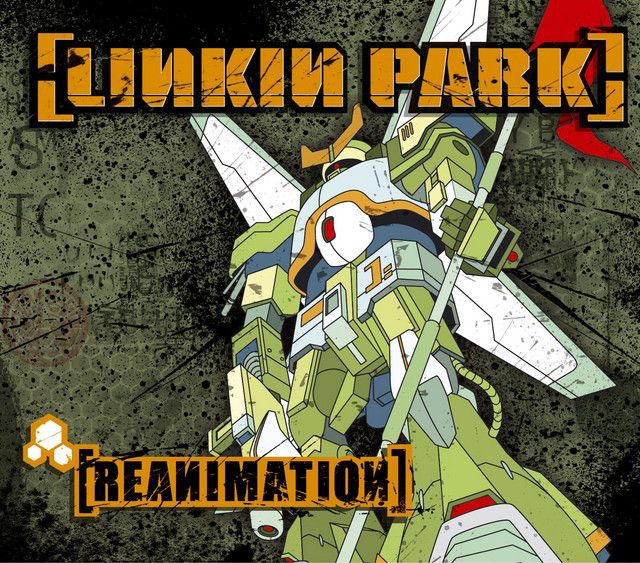
96. Linkin Park
Reanimation
[Warner Bros; 2002]
Between 1996 and 2002, Mike Shinoda had weathered revolving MC aliases (Akira, Kenji), project name changes (Xero, Hybrid Theory), industry-wide rejection of his bands’ demo tapes, record label attempts to replace him, headlined arenas with maybe 50 minutes of material, and now surging transatlantic incredulity as to how his rap-rock band’s (Linkin Park) debut album (Hybrid Theory) rocketed from major label development hell to unsinkable chart juggernaut. As a victory lap, now flush with record industry clout, Shinoda wrangled underground hip-hop legends (including Bay Area rap royalty from Dilated Peoples and Zion I) into shared billing with Korn’s Jonathan Davis and Deftones’ Stephen Carpenter, carving their names onto Warner Bros jewel cases across four hemispheres. God knows how many middle schoolers dove into the discographies of Jurassic 5 and The Roots after first hearing Chali 2na’s and Black Thought’s voices on this album. Principally produced and engineered by Mike on the tour bus between shows, interviews, and gunning for remixes from Björk, Aphex Twin, and PJ Harvey, Reanimation, the fourth best-selling remix album of all time (one spot ahead of no less than The Beatles), is the sound of Mike Shinoda spotting weaknesses in the walls between metal, rap, and pop; accelerating the collapse of genre and rewiring the brains of millions of impressionable Bush-era youth into developing a beginner’s ear for hip-hop. Tracking the many evolutions between Hybrid Theory’s 1999 “Crawling” demo Reanimation's “KRWLNG” - with Bennington joined by Staind’s Aaron Lewis circling the song’s swirling, glitching hooks - and 100 Gecs' 2021 hyperpop deconstruction illuminates how the band saw their songs: as living things, refracting, reacting, forgotten then pushed back together, repeatedly regenerating. — Finchmeister
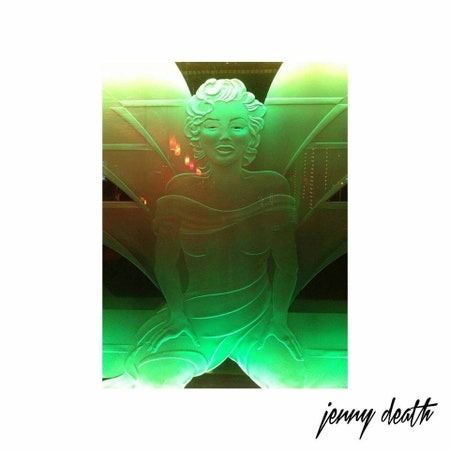
95. Death Grips
Jenny Death
[Harvest; 2015]
When Jenny Death initially came out in 2015, it was released to practically universal acclaim from the Death Grips fanbase, but there was definitely a subset of haters out there that unflatteringly compared this album to nu-metal, at a time when nu-metal’s reputation was firmly in the dirt. Now, 8 years removed from Jenny Death’s release, yeah, this album is nu-metal, and that’s precisely why it rocks. You could stretch the definition of nu-metal and apply it to a number of Death Grips albums for their combination of forward-thinking, experimental hip-hop, and sticky pop songwriting, but Jenny Death hardly requires a reach at all as the band embraces their alternative and progressive metal influences with sex-obsessed borderline jock jam “Pss Pss” to introspective classic rock inverting epic “On GP”, Jenny Death is a slammer of an album that not only deserves its place in the canon for introducing core tenets of nu-metal to brand new listeners, but re-introducing those tenets for lapsed fans of the genre. — Matty Monroe
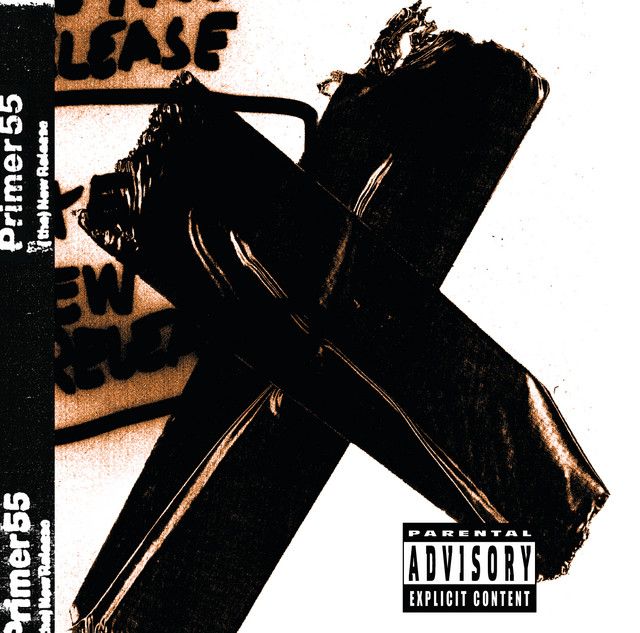
94. Primer 55
the (New) Release
[Island; 2001]
"I don't think we've hit the weeding-out period yet," Concrete Marketing president Bob Chiappardi remarked to Brian Reesman of Billboard magazine in June of 2001, "We've got great new bands that are coming up the ranks [...] that I predict will be platinum plus this year." Of the seven he proceeded to name a whopping one would make it to platinum status (Saliva) while the rest languished far beneath gold. The rest of Reesman’s Sustaining the Success article casts a quizzical eye at an industry that signed way more nu-metal bands than they could break, a roller coaster heading over the peak and getting its first look at the long drop. One of those - Memphis, Tennessee’s Primer 55 - was touted by Island Def Jam as the next Limp Bizkit before topping out around 100k sold for their debut album Introduction to Mayhem, a mammoth disappointment. Only two years after their debut EP Primer 55 were already looking like has-beens. So they hustled back into the studio to crank out (The) New Release; and that’s ‘New Release’ as in new album but also new releases in the form of strip clubs (“Texas”), drugs (“Pills”) and alcohol (“Lou Evil.”) Where these vices were revealed in on Introduction, here they’re seedy and malicious. Unconventional instruments creep into the mix, vibraphones and a brass section that could have been lifted from a Tom Waits album while frontman Jason "J-Sin" Luttrell swaps Introduction’s clownish b-boy styles for a bulldozing howl. It’s an altogether more engaging and promising effort that impresses for arriving so soon after their debut. It didn’t matter. It sold even worse and their record label, following disappointing returns and the 9/11 terrorist attacks, would pull support for the album after a scant two months on shelves. So little attention was paid that not only does lead single - the infuriated, anthemic "This Life" - not have a music video but the live performance that is labeled as 'Official' on the band’s Vevo page features them completely fumbling the song’s breakdown. Another indignity forced on one of nu-metal’s hidden gems from its boom years. — H.K.
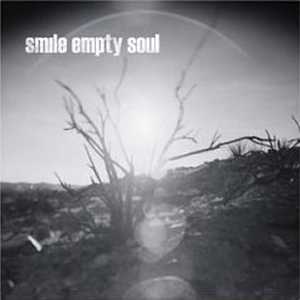
93. Smile Empty Soul
Smile Empty Soul
[Lava; 2003]
Smile Empty Soul’s 2003 debut isn’t special because Sean Danielson wants to be Kurt Cobain - everyone did - or that he couldn’t come close - nobody could - it’s that he’s sincere about it. In the post-grunge power vacuum left by Cobain’s suicide, wannabes like Seether and Puddle of Mudd blew up by filling rock radio’s need for more Nirvana-lite content and while Danielson got his own hit single off, the majestic gutter-punch “Bottom of a Bottle,” his inspirations hemmed closer to In Utero deep cuts (dig those screams on “Radio in a Hole”) than “Come As You Are” knock offs. Even his misses are compelling; as clumsy as the lyrics of “This is War”’ might be (“I drove in a car / I flew in a plane / to kick your door in”) - not to mention some way overbearing string arrangements - its dull, rudimentary observations do a better job of reflecting the real-life struggles of underprivileged kids drafted to die in the Iraq War than, say, the bougie smarm of American Idiot. Buried at the tail end of the album, after 12 tracks of insolent rage, “I Want My Life” suggests nothing less ambitious than “All Apologies” covered by self-titled era Elliott Smith, climaxing with a bridge so tender, so heart-rending, Danielson breaks the chains of influence and soars upon his own updraft for a brief, beautiful moment. — H.K.
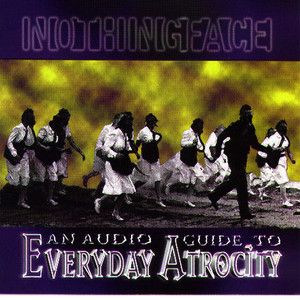
92. Nothingface
An Audio Guide to Everyday Atrocity
[DCide; 1998]
Washington, D.C. natives Nothingface don’t pull punches on their sophomore release An Audio Guide to Everyday Atrocity. Critics and fans alike incessantly compared their first album, Pacifier, to Korn’s early nu-metal style, which seemingly caused the band to switch up their sound. Their second album solidified a transition to a more uniquely 'Nothingface' sound. Radio interludes and other audio samples break up songs while also keeping the album cohesive, in addition to adding a bit of underground spice. “Breathe Out,” the first single from the album, spotlights Tom Maxwell’s speedy riffs and Chris Houck’s sharp, thrashing drums. Matt Holt’s earnest vocals envelop the record, particularly during “The Sick,” where his melodic groans are contrasted with persistent screams. Images of hatred, violence, and fear are painted throughout the record, leaving the listener stricken by Holt's misanthropy. An Audio Guide to Everyday Atrocity is a substantial second release from a band that still had so far to go. — Paris Murrow
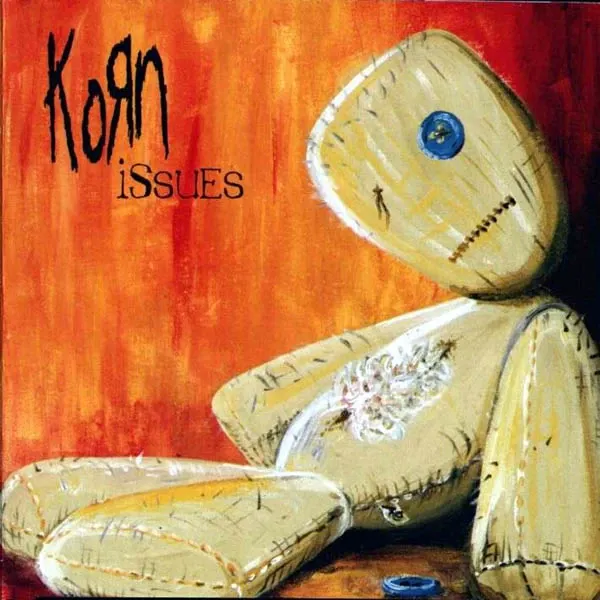
91. Korn
Issues
[Immortal; 1999]
In 1999, Korn had big shoes to fill: their own. The prior year saw the release of Follow the Leader, the emblematic record that saw the band solidify their status as pop culture icons. How could the band follow up to nu metal perfection such as "Freak On A Leash" without disappointing the millions of eager eyes watching? Enter the release of Issues. It can’t be understated how this Korn release impacted music culture of the late 90s and early 2000s; the album’s lead single, "Falling Away From Me," debuted on a South Park episode featuring the band themselves as voice actors, and went on to top TRL for ten days in a row. The album was #1 on the Billboard 200, beating big names like Dr. Dre and Celine Dion for the top spot. It seemed like the United States was Korn Kountry in the late 90s; the band were inescapable on the TV and radio. The disappointment everyone thought would be inevitable was not only avoided, but the band graced fans with an incredible record that has held up over the last 25 years, just like its predecessors. Eerie guitar effects from Munky and Head that make your skin crawl, heavy grooves from Fieldy and David Silveria, and agonizing yet captivating vocal performances from Jonathan Davis come together to create an essential listen for entry-level nu metal enthusiasts; few records capture the essence of the genre quite like this one. — Jasmine
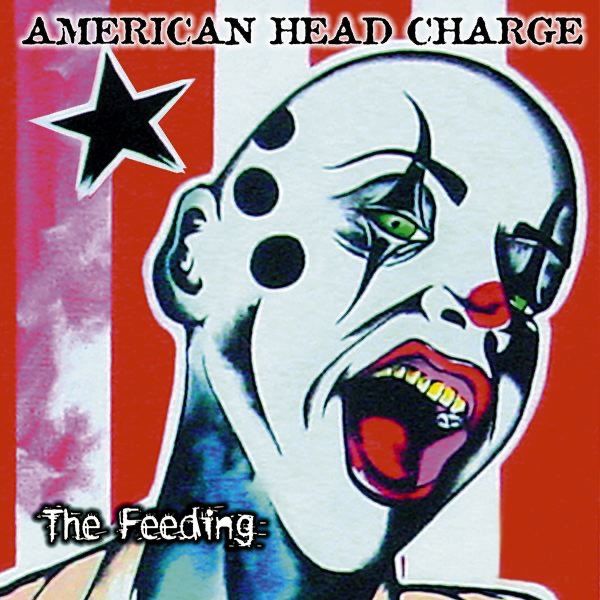
90. American Head Charge
The Feeding
[DRT; 2005]
After traversing the planet with artists like Slipknot and System of a Down in support of 2001’s The War of Art, some personnel changes, and being granted a release from American Recordings, American Head Charge brought a refreshed lineup and sound with 2005's, The Feeding. While once more prominent in their music, the samples became more subtle and the guitars more amplified, but the core of what people loved about American Head Charge remained true: passionate, thoughtful, and aggressive music that will either help assist in getting you a speeding ticket (“Cowards,” “Dirty” and “Pledge Allegiance”) or getting you deep in your feelings (“Take What I’ve Taken,” “To Be Me,” “Fiend.) While this record didn’t get the recognition many still think it deserves for a slew of reasons, to this day it’s highly regarded as a tremendous piece of work. Two music videos were released in support of this album: “Cowards” featuring UFC star Chuck Liddell, and “Loyalty,” starring the band in a run-down hospital staffed by the clown nurse depicted on the album cover. Unfortunately, due to label issues, it’s not available on streaming services, but it’s still worth grabbing the CD (especially if you can get your hands on the version released outside of the USA, as it has the bonus track “Downstream.”) — Shaylarz
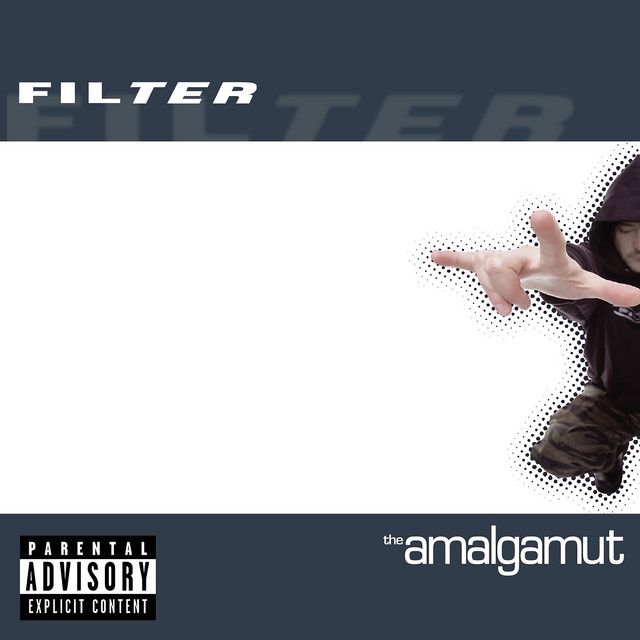
89. Filter
The Amalgamut
[Reprise; 2002]
When Filter's third studio album The Amalgamut was released in 2002, Richard Patrick was spiraling. Deep in the throes of drug and alcohol addiction, the Filter frontman mastermind was rescued only by a trip to rehab that canceled the tour and a furious Reprise, already hundreds of thousands of dollars deep into the project, yanked promo and dropped him from the label. Fittingly, The Amalgamut is a total mess. An engaging mess, mind you, the kind of mess appropriate for the urban blight Patrick had to draw on for inspiration after the Title of Record tour, but a mess only an alcoholic burning through the last of his rock star leeway could make. Its definitive moment comes on lead single and shoulda-been hit “Where Do We Go From Here.” It’s the grand finale of the Filter project’s definitive era, fusing “Take a Picture”'s acoustic stomp and “Hey Man Nice Shot”'s big riffs for the most melancholy send-off to the 90s and the older end of Generation X’s youth we’ve got. It’s the sound of the cultural lens moving beyond your age range, reducing all you hold dear to a nostalgic blur somewhere off camera. In the song’s music video, Patrick and co. find themselves at a teenage party, seemingly by accident and certainly uninvited. The only time any of them seem to exist is when bassist Frank Cavanagh has a vase thrown at his head for interrupting a young couple’s makeout session. They're still there but only because nobody cares enough to say leave. — H.K.
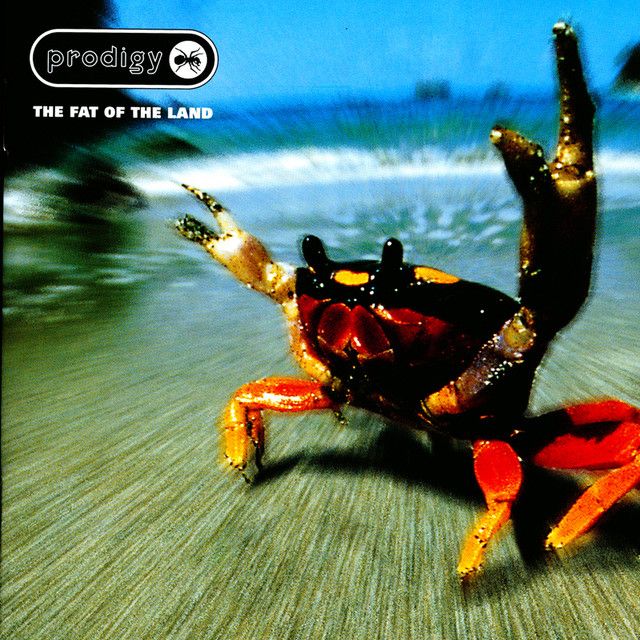
88. Prodigy
The Fat of the Land
[XL; 1997]
Hailed by Metal Hammer in 2019 after resident wildman Keith Flint’s passing as the band who “started a fire under metal that burned so brightly, it couldn’t be ignored,” Prodigy did with Fat of the Land what many nu-metal bands would later attempt to do; bringing together heaviness, pop sensibilities, danceable tunes, and a punk ethos to unite fanbases who previously would have been at each other’s throats. One only has to look at the tumble of electronica remixes and collaborations nu-metal bands would embark upon after Fat of the Land’s earth-conquering success for proof positive. Moving more towards rock than their previous work, Prodigy pulled off a record that defies genre-lumping, but deserves to be mentioned alongside any era-defining nu-metal albums. From the driving riff in “Breathe,” to the intensely drawn out climax of “Smack My Bitch Up,” to Flint’s sneering, scathing vocal delivery on “Firestarter,” the record has the same eager roots in hip-hop, rock, and electronic music that nu-metal did. With ‘97 seeing nu-metal on the brink of taking the world by storm, The Fat of the Land did its part and then some to explode the idea of heavy music as all consuming cultural amphetamine. — Manus Hopkins
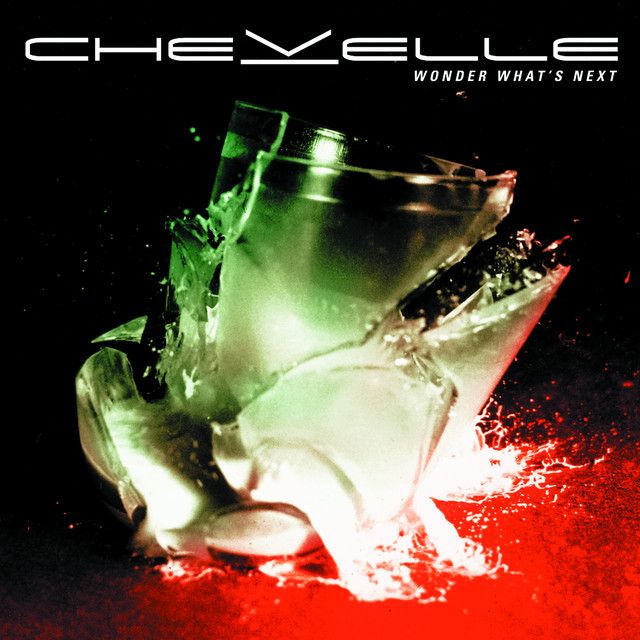
87. Chevelle
Wonder What's Next
[Epic; 2002]
Fans of the band can, and will, argue that Chevelle has done better work since their 2002 breakthrough album (two million plus sold, peaking at 14 on the album charts) – not to mention argue whether they’re alt-metal and not nu-metal (I do not care) but none of, well, what came next for themselves and the countless bands they influenced would exist if it weren’t for the formula perfected here. Drop-tuning, loud-quiet-loud dynamics, a construction of airy space and claustrophobia that alternates between freeing and oppressive, riffs both chugging and melodic, and most importantly for the record’s success, soaring vocal hooks that feel agonized over and casually detached at once. Everyone knows the two big hits ("The Red" went to #56 on the Top 100; "Send the Pain Below" #65) and they are indeed transcendent, earning their spot in the alt-rock radio canon, but almost any song on the first half could’ve put the band on the map. Despite the intervening decades of creative success and widespread influence the band, and this record in particular have had, it all somehow feels criminally underrated. — Luke O'Neil
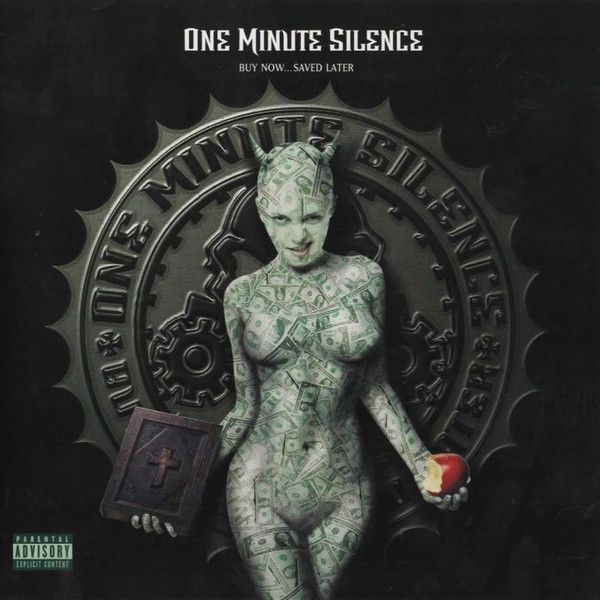
86. One Minute Silence
Buy Now...Saved Later
[V2; 2000]
From Das Kapital to Rage Against the Machine to American Psycho, critiques of capitalism have maintained a special grip on our pop culture as their predictions and commentary only continue to grow in truth. Nu-metal, it must be admitted, participated in capitalist excess more than any genre of rock or metal before it. In a hard right turn away from grunge’s integrity, nu-metal bands threw themselves at their record companies; signing insane deals, ballooning album budgets to seven figures, fronting their own aggressive promotional campaigns, signing each other to vanity labels, happily collaborating with their marketing departments and appearing in television commercials all without a second thought. It was the beginning of rock’s post-sellout period where anything and everything goes.
Released on April 10th, 2000– Buy Now…Saved Later tries to thread the same needle of political integrity and commercial success Rage Against the Machine was passing through but instead of Zach De La Rocha’s righteous indignation, singer Bryan 'Yap' Berry is a nervous mess. Yap isn’t rapping as much as he is panicking on beat. This is political rock as post-punk originators Gang of Four imagined it; aware enough to understand politics is violence, informed enough to be horrified, yet comfortable enough so that all you can muster is a slightly defocused gape at the horror of it all. These aren’t Rage Against the Machine songs— this is the inner monologue of the suit-and-tie yuppie listening to Rage Against the Machine songs. Lyrics flit by like headlines running up your phone screen (“A million dead,” “McDonald's in space” ) while casual aphorisms paper over the nightmare (“Another day another dollar,” “Same as yesterday”). “16 Stone Pig” opens with police brutality and racial profiling (“They say he struggled they say he fell, I say he found himself black in a pig cell”) before drowning it in banalities (“Never know what life's gonna throw at you,” “Based on a true story”) and rapid-fire buzzwords (“Start it stop it fuck 'em drop it pass the popcorn shut the fuck up”) until the whole thing unravels into nothing.
Trading the post-Faith No More wackiness and gated drum sounds of Available in All Colors for an ultra-clean mix, each clean lead is lent a chamber to ring in and every distorted chord a cone to shred. Guitar notes are preserved to the point you can hear the pick flicking against the strings. The bass guitar has a satisfying shine that renders it distinct from the muddy slapping their contemporaries were deploying while the drums effortlessly pop. It’s an auditory delight, so crispy and sharp you’ll want to invest in a better stereo just to get closer to the sound.
In the same way that nu-metal’s capitalistic 'anything to succeed' death drive feels predictive of modern-day hustle culture, Buy Now…Saved Later resonates with our contemporary helplessness; the feeling of understanding things are broken and watching the solutions go ignored or actively worked against. Closing number, “Words,” sounds like something resolved, a fresh start. It opens with misty guitar washes that patiently cohere into Yap’s tentative singing. “For words they fought and words they fell and words alone,” he contemplates. Then for the chorus, he finds his fire again, yelling out “Here we are! Dawn of a new day! Fuck how it looks! Fuck yesterday!” But that optimism is shredded as soon as it arrives. “I’m not saying forget, that’s not what I’m saying,” pleads Yap. “Fuck freedom if I'm not alive to live it / I'll fight for it / I won't kill or die for it / This is a rich man's world / Let the rich man fight for it!” Finally, the uneasy denouement; even after acknowledging that words are all that compel men against each other Yap can’t quite pin himself down, the contradictions won’t resolve. The album’s final refrain, “I tried to see it your way!” is a bayonet thrust into an enemy's chest over and over until it is done. — H.K.
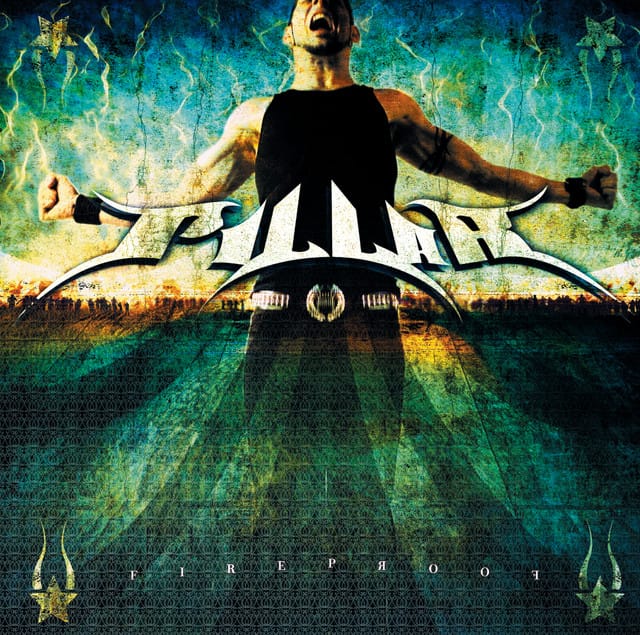
85. Pillar
Fireproof
[Flicker/MCA; 2003]
If you were raised in the church odds are you fear God more than you love him but if you arrived at Christianity later in life you love God. Take Rob Beckley of Pillar, this guy loves God. When Beckley celebrates his triumph over the secular word and wayward, weed smoking friends on “Hindsight” he does so by exclaiming “Can you believe it??” with a zeal usually reserved for Super Bowl winners. This ecclesiastical enthusiasm can be oppressive, downright annoying, in many contexts but for most of Fireproof it is irresistibly invigorating. Five straight tracks this thing just rips; an avalanche of sugar high hooks, endearingly passionate rapping, and more seriously good nu-metal riffs than most bands come up with in their entire career. Beckley’s naivety (“Evolutionists we got love for you too” he intones with deep concern on “Echelon”) is so sincere I can’t help but be charmed by it, rather than thumping a Bible he lets his joyful noise do the evangelizing for him. Unfortunately, when Fireproof comes up short it comes up really short with “Indivisible,” an indigent screed that treats having ‘In God We Trust’ printed on American currency as some kind of divine right and one of the worst songs you’ll find on any album here, but that misstep only highlights how much fun the bulk of this disc is. Fireproof is like being dragged to a Wednesday night Church lock-in against your will only to have such a blast wolfing down pizza and running around the basement you actually start thinking that this Jesus thing might be alright after all. — H.K.
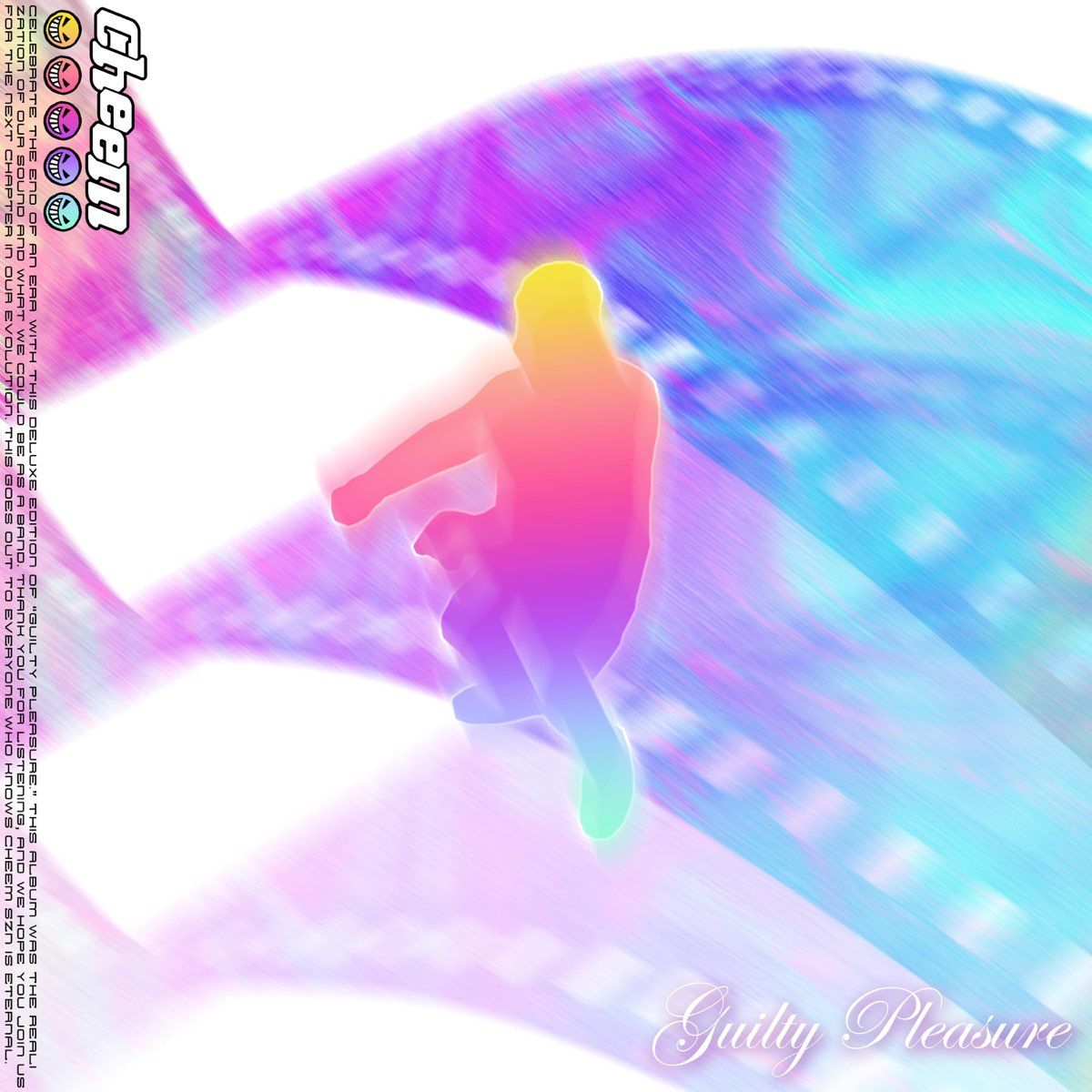
84. Cheem
Guilty Pleasure: Deluxe Edition
[Lonely Ghost; 2023]
Fed up waiting around for pop-punk and nu-metal to get their rears in gears and start evolving again Connecticut's own Cheem grab both by the scruff and drag them forward at once on the nuclear bomb of inspiration and optimism that is Guilty Pleasure. Packing a few albums worth of ideas into 22 minutes; Guilty Pleasure functions both as surface-level pop thrill and deeper metatextual commentary on the impulse to deny yourself the surface-level pop thrill of turntable solos and rap breakdowns in order to satisfy "critics" who "slam your favorites" and "change your mind 'cause you feel like you have to." Songs like "Clueless" and "Cheem SZN" taunt you for standing outside their playground while simultaneously inviting you in, a sweet-n-sour combination communicated expertly through Sam Nazz and Skye Holden's Bennington/Shinoda level connection if the Linkin Park duo were raised in midwest DIY venues. And the deluxe edition - issued a year later with the roaring "Migraine" and the Meteora-worthy "EOE" standing tall as the album proper's new capstones - improves on perfection, looking back at an impressively deep catalog while pointing towards the future of a band with a vast distance left to run. — H.K.
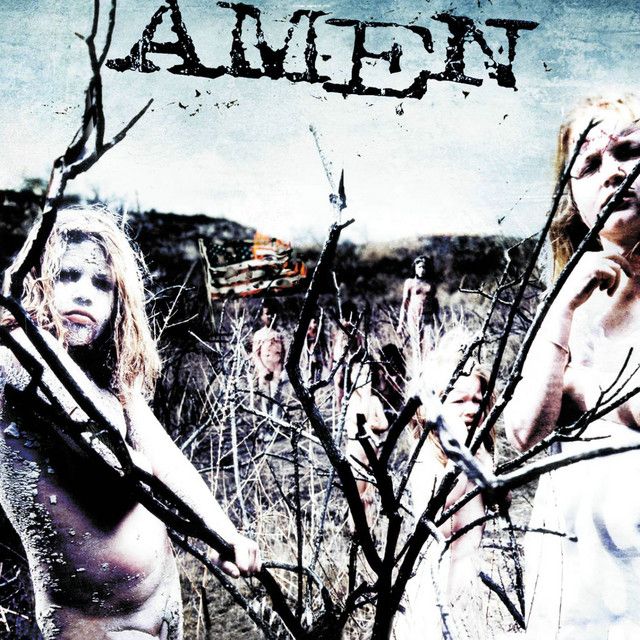
83. Amen
Amen
[Roadrunner; 1999]
After the dissolution of Florida hardcore punk band Disorderly Conduct, frontman Casey Chaos migrated to Los Angeles where he made a brief appearance for one album and several shows with Christian Death before recording an almost entirely solo album called Slave under the name Amen (taken from the title of Disorderly Conduct’s sole full-length release). That led to a collaboration with Ross Robinson, who had already struck gold with the likes of Korn and other nu-metal heavyweights, and subsequent signing to Roadrunner Records. While Chaos and the band vehemently denied that they were nu metal (bassist John “Tumor” Fahnestock infamously wore a shirt reading “FUCK NU METAL” in block letters for multiple tours), in hindsight it’s hard to see this album as anything but. From the opening riffs of "Coma America" and through the angst that absolutely drips off tracks like "No Cure For The Pure" this album has all the ingredients for a classic of the genre. This may qualify as “nu” more than some other bands who leaned more heavily into their punk & hardcore influences, on the basis of having Robinson on the boards and recruiting Tumor and Sonny Mayo of Snot; even if Tumor was against the nu label. By working with the most prolific producer of nu metal, sharing studio space, and touring, with Slipknot, not to mention appearances on the deeply nu-metal Tattoo the Earth tour, they assumed a prominent role in the peak era of nu whether they wanted it or not. — Mark Doubt
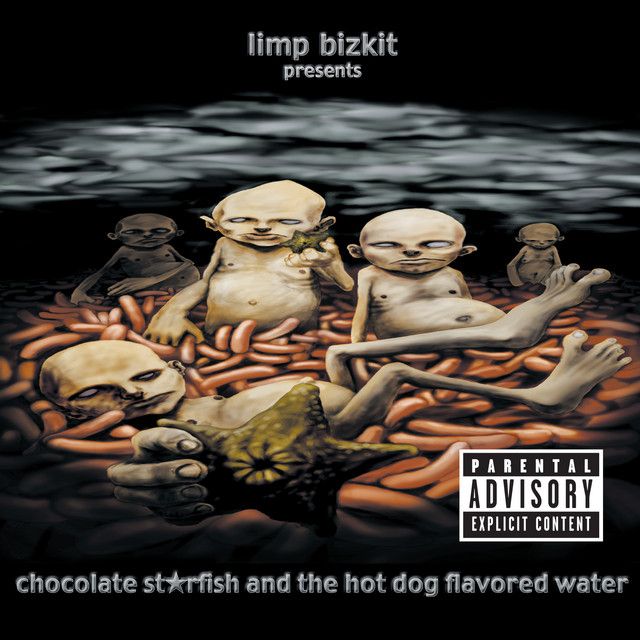
82. Limp Bizkit
Chocolate Starfish and the Hot Dog Flavored Water
[Interscope; 2000]
What a genius maneuver this was. After the worldwide success of Significant Other and being blamed for Woodstock 99’s mayhem bacchanalia made Fred Durst into a household name, Durst beat the backlash by hustling everyone back into the studio and sat this plastic on every FYE, Tower Records, and Circuit City across America less than a year after Significant Other's release, which is how an album named after the appearance of a butthole and a non-sequitur involving a bottle of water Wes Borland saw at a gas station, did a million sold first week. So miraculous was their timing that not only did they avoid the 9/11-induced heavy music downturn they even shot a music video ballin' out of control on top of the World Trade Center almost exactly a year before it would be reduced to rubble, a powerflex on the entire post-Patriot Act future we will now all live and die in. The music therein betrays its rushed origins - “Full Nelson” and “Getcha Groove On” are hasty, yet still potent, re-treads of “Stuck” and “N 2 Gether Now” respectively - but it sounds like a zillion bucks and is sequenced better than Significant Other with singles “Take a Look Around” and “Boiler” coming in the album's 4th quarter. Still, Chocolate Starfish hits hardest for the cultural moment it represents- a snapshot of a guy with a red baseball cap defying cultural gravity for three straight years. — H.K.

81. Poppy
I Disagree
[Sumerian; 2020]
Nu metal has always been about more than just the music; it’s a culture, and also a product thereof. The Y2K internet age can be held responsible for the foundation of nu metal culture in its heyday and Poppy’s artistry and music are a great modern corollary. Before releasing I Disagree, Poppy dabbled in surrealist content on YouTube during the mid-2010s, paving the way for her creativity as a character and integrating a new age of the internet into her music. What makes I Disagree special isn’t that she just jumped straight into making nu metal after a rather prolific pop career, but that she combined the two genres into what we now know as Nu-Pop. For every downtuned riff and double-kick groove, the songs are filled out with lushly produced vocals and catchy melodies. It’s a record that surely has nu metal purists scoffing in dismissal, but undeniably brought new life to the genre. — RJ Martin
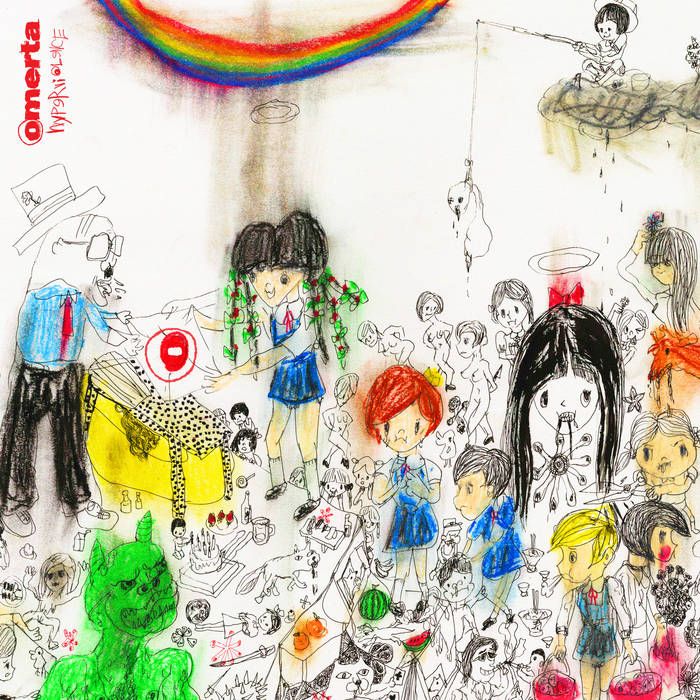
80. Omerta
Hyperviolence
[Self-released; 2020]
Since the early 2010s, bands like Emmure and Of Mice & Men have been experimenting with fusing nu-metal into their more common metalcore and hardcore sounds. However, this fusion wouldn't reach its apex until the Houston-based Omerta kicked the door down with their 2020 album Hyperviolence, quickly becoming one of the most hotly sought-after heavy bands working. From the opening notes of "Payback," Hyperviolence pushes its boot into your neck and refuses to let up. It's a sound faster and more intense than anything nu-metal had seen to date and merely hints at an explosive future yet to come. —RigbyGender
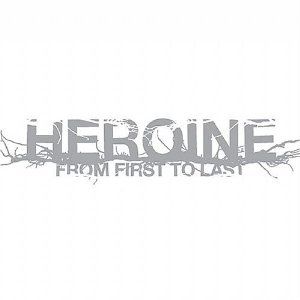
79. From First to Last
Heroine
[Epitaph; 2006]
The connection between post-hardcore and nu-metal is a sort of ‘Yes you are/no I’m not’ sibling rivalry that’s as productive as it is dysfunctional. So while At the Drive-In, Glassjaw, Refused, Blood Brothers, and Thursday will not be making appearances on this list; Tampa, Florida's From First to Last will. Their album Heroine bridged gaps between post-hardcore, emo, and nu-metal with such precise precision that not including them would be perverse. Consider the facts: produced by nu-metal godfather Ross Robinson, featuring Limp Bizkit’s Wes Borland on bass, and fronted by future Korn collaborator Sonny Moore (a.k.a. Skrillex). From First to Last were already showing up with enough incidental nu-metal cred that the chaotic drop tuneage of tracks like “Mothersound” and “Afterbirth” should be, but aren’t, an afterthought. Instead, Heroine rages better than most post-hardcore and bounces harder than most nu-metal, a potent combination yet to be topped. — H.K.
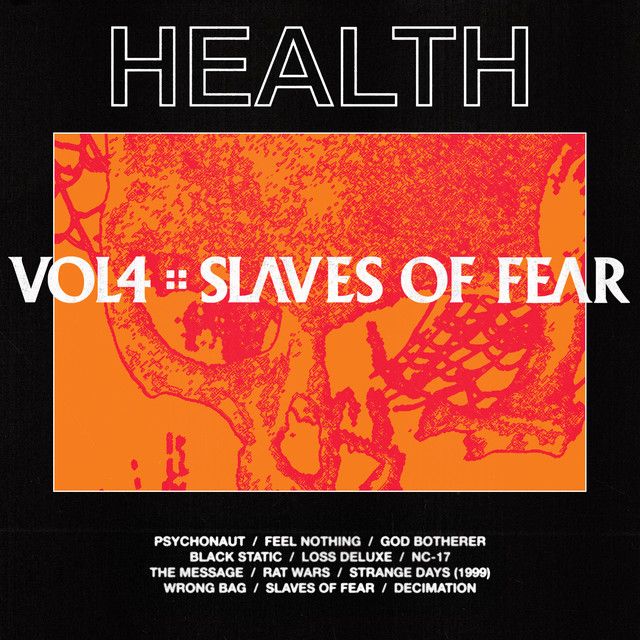
78. HEALTH
Vol 4: Slaves of Fear
[Loma Vista; 2019]
It was the most withering criticism they could imagine: “there’s already a nu-metal track called ‘Numb’.” This was how Pitchfork.com described HEALTH’s VOL 4 :: SLAVES OF FEAR highlight “FEEL NOTHING.” Between the derisive Linkin Park comparisons and the devastating 3.4 out of 10 awarded this was the most vicious judgment they could pass upon their once darling HEALTH in 2019. Five years on, VOL 4 :: SLAVES OF FEAR has aged spectacularly well, sidechaining the ‘noise’ in the band’s ‘noise rock’ to an urgent, eager industrial assault on the ears that sticks around long after the music has been switched off. “BLACK STATIC”’s aggro post-Zombie ‘kroove’, “SLAVES OF FEAR”s sun-shy wallop; all of it points to a future in which post-Trent/Atticus industrial can intersect with accessibility, a future that HEALTH continues to soldier towards. Retrospectively, Pitchfork’s Linkin Park comparisons feel complimentary, not harsh, the mark of a band ahead and a publication behind the times. — H.K.
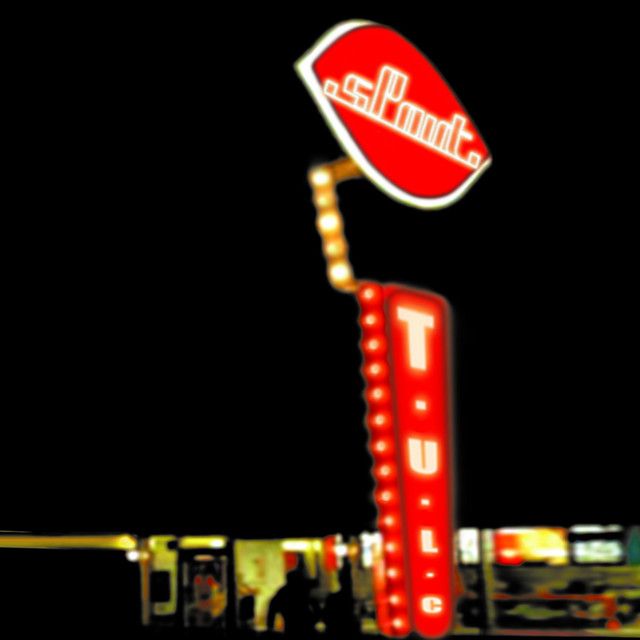
77. .sPout.
TULC
[Pate Records; 2002]
In much the same way that Andrew W.K. replaced hair metal’s slavering misogyny with zen koans about partying, .sPout. trade nu-metal’s scowling misanthropy for goofy grins and... well, zen koans about partying. TULC (short for The Ultimate Love Connection) is filled with songs like “Do You Wanna Dance” and “Sicksong” that leap about with tongues a-flop and positive vibes to spare as front-man Stefan Unterweger - who raps like a 12-year-old kid half remembering and half inventing the lyrics to "Nookie" on the school playground - circles, circles again and double underlining his ideas until they become almost profound. From opener “It’s Time to Rock”; “No tick tock tick! Timeless is my tactic to rock! It makes me sick! To hear a ticking clock!” If it clicks with you, you’ll achieve enlightenment; the past was yesterday, the future doesn’t exist yet, “our backpacks are full of six-packs” and right now it is time to rock. It’s all so adorable that when Unterweger drops the b-word on “Go Ahead” you’ll want to wash his mouth out with soap. — H.K.
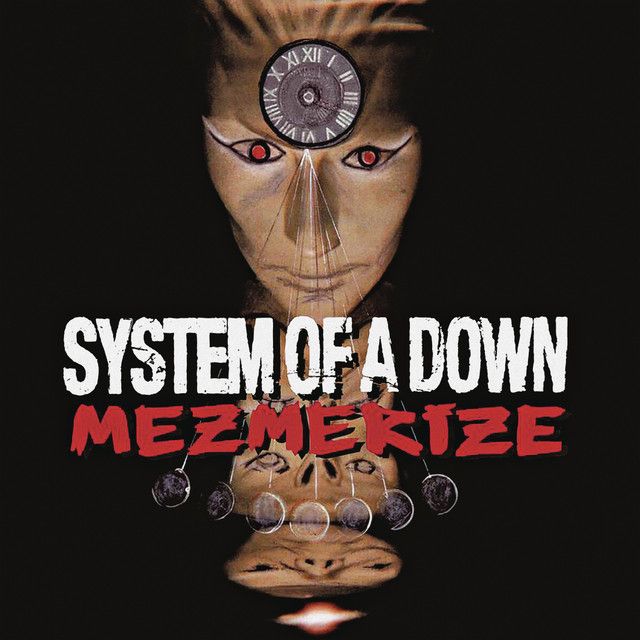
76. System of a Down
Mezmerize
[American Recordings/Columbia Records; 2005]
For a certain subset of Americans, the second half of the aughts was looking bleak on multiple fronts. Fresh off a second George W. Bush election win, the United States continued its seemingly endless occupation of Iraq and Afghanistan while high-ranking members of government lined their pockets off the 'War on Terror' with a never-ending battery of cost-plus contracts. Against this backdrop, System of a Down’s Mezmerize hits like the first gasp of someone realizing they may not be drowning after all. Following the somber "Soldier Side - Intro," first single “B.Y.O.B.” is a dramatic return to the in-your-face politics of Toxicity-era System. “Why do they always send the poor,” screams Daron Malakian right out of the gate, blasting the American military machine and the public’s willingness to turn a blind eye and party on while it keeps grinding. Yet this represents the peak of Mezmerize's Michael Moore-style pop politicking as the band almost completely abandons them for Dadaist dick-measuring contests (“Cigaro”), bemused meditations on their own success (“Radio/Video,” “Lost in Hollywood”), even a poignant reflection on human mortality (“Question!”). And we can’t forget “Violent Pornography,” a resoundingly silly track where the band expresses their not-quite-convincing disgust with a particularly brutal porno. Ultimately, Mezmerize feels like a band with a lot to say, questioning whether anyone’s still listening, and doing their best to have fun making music with each other in spite of it all. — Gabi Brown
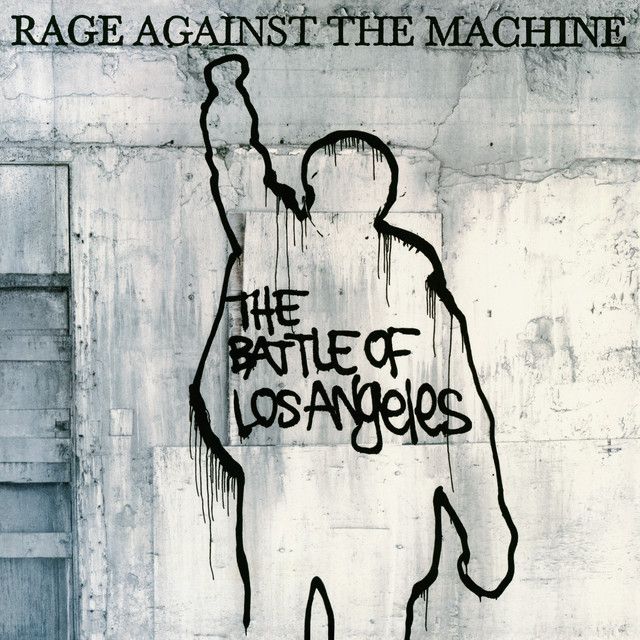
75. Rage Against the Machine
The Battle of Los Angeles
[Epic; 1999]
By the end of ‘99, the metal landscape that Rage Against the Machine has ascended looked completely different than when they debuted. Emerging and rival acts had warped the band's strident leftism into pedagogical angst, but instead of throwing in the towel and throwing stones from on high, The Battle of Los Angeles proved those emerging and rival acts still had a ways to go before being able to challenge RATM for their throne. The Battle of Los Angeles attempts to balance their political convictions - “Voice of the Voiceless,” an ode to Black Panther Abu Mumia Jamal - over tracks accessible enough to be heard blaring from the soundtrack of video games like Madden 10, and Tony Hawk's Pro Skater 2. You wouldn't expect the message of such a staunchly anti-capitalist act to reach the masses via best-selling video games or pre-game tailgating sessions. But as "Testify" and "Sleep Now in the Fire" achieved the kind of MTV heavy rotation that nets you enough cultural clout to hold court on TRL and throw a tantrum at the VMAs - over losing an award to Limp Bizkit of all things - it began to be increasingly difficult to separate the band's rage from capitalism's double platinum embrace. One covers album later and Zach would walk while the remaining lineup collapsed into Audioslave. It's impossible to say what the 2000s would have been like had they held it together but it's easy to say this list wouldn't exist if they had never arrived. — Jordan_T729 and H.K.

74. LOK
Naken, blästrad och skitsur
[Sonet; 1999]
At the turn of the millennium LOK was an inescapable force of nature in the Swedish musical landscape. Having graduated from local heroes (Partille represent) with a limited run EP out, they catapulted themselves into music video programming mainstays on the strength of swedish language Rap Metal singles (a scarce commodity even at the time) like "LOK Står När De Andra Faller" and "Skrubbsår." Where this album succeeds most is in its ability to sound stripped down yet never simplistic; occasionally the crunching riffs will end to let era-typical processed lead guitar lines play out alone over the punk influenced drums and heavy bass grooves. It's a distinctly live inspired sound with little overt studio trickery going on for most of the record. At times it sounds like the instrumentals are about to outpace Martin Westerstrand as he raps, screams, and snarls at the moment just before falling behind the rest of his band. Even for non-Swedish speakers leaping the language barrier reveals a youthful, aggressive, and attitude-filled collection of songs falling stylistically between hardcore, rapcore, and nu metal that will satisfy the appetite of anyone hungering to party like it's 1999. — Young Bukowski
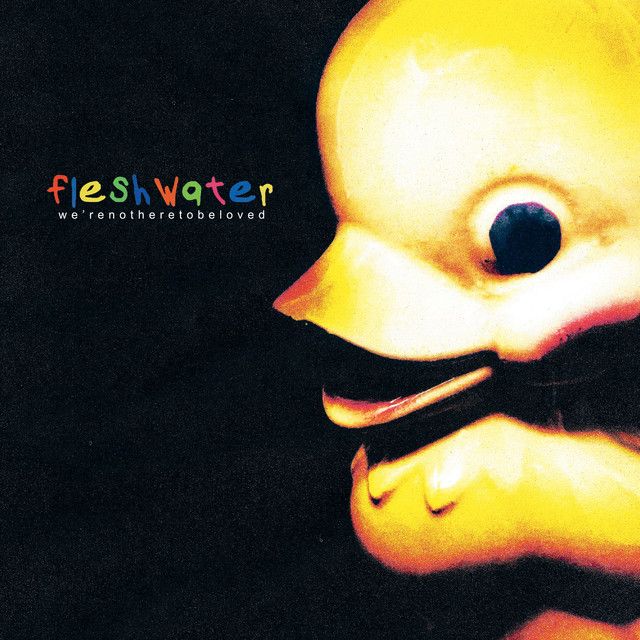
73. Fleshwater
We're Not Here to Be Loved
[Closed Casket Activities; 2022]
When you hear the name Fleshwater, you’re probably expecting some sort of death metal band with an unreadable logo and blood and guts album artwork, not sidewalk chalk font and a rubber ducky. Fleshwater was the side project, now main it seems, of a few members of popular hardcore band Vein.fm alongside Marissa Shirar, creating a historically minded yet forward thinking blend of grunge, shoegaze, post-hardcore, and nu-metal of the nineties. Tracks like “Baldplate Driver” and “Foreign” have their shoegaze elements on full display while “The Razor’s Apple” and “Kiss The Ladder” have that more aggressive grunge-hardcore. “Woohoo” and “Closet” are very apparent with their nu-metal/alternative metal. And for the pièce de résistance Freshwater connect the dots between Bjork and nu-metal with a raging cover of "Enjoy." They're not here to be loved but are loved regardless. — xgottsegenx
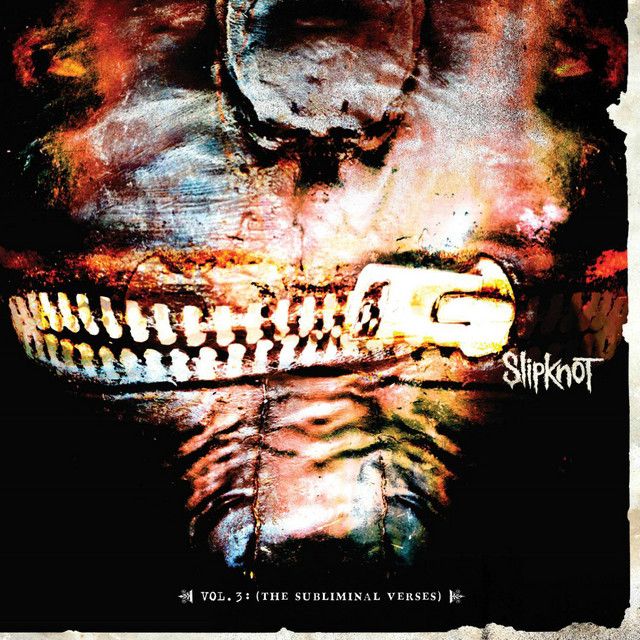
72. Slipknot
Vol 3: The Subliminal Verses
[Roadrunner; 2004]
We arrive at the inevitable Serious Album. In which, like Green Day before and Linkin Park after, a band previously dismissed as featherweight invites a superstar producer into the studio and sets about proving they have something to say. Blessedly, since nu-metal was still being disparaged in its entirety, for Slipknot that project never rises above ballads, none of which work for me— Corey is an effective frontman, not a 'lead singer.' Still, Vol. 3’s pleasures are hearing this band blowing 100% of the assumedly massive budget from Roadrunner as they replace Ross Rob with Rick Rube, trade Indigo Ranch for Houdini’s Mansion, and pack this thing with all kinds of requisite studio excesses. This absolutely does pay dividends - “Before I Forget” is a firecracker of a Grammy-winning hit single and if you catch me on the right day I’ll swear “Duality” is the greatest nu-metal song of all time - but by album’s end it’s clear Slipknot are reaching their limitations. But what an incredible ride it was getting there. — H.K.
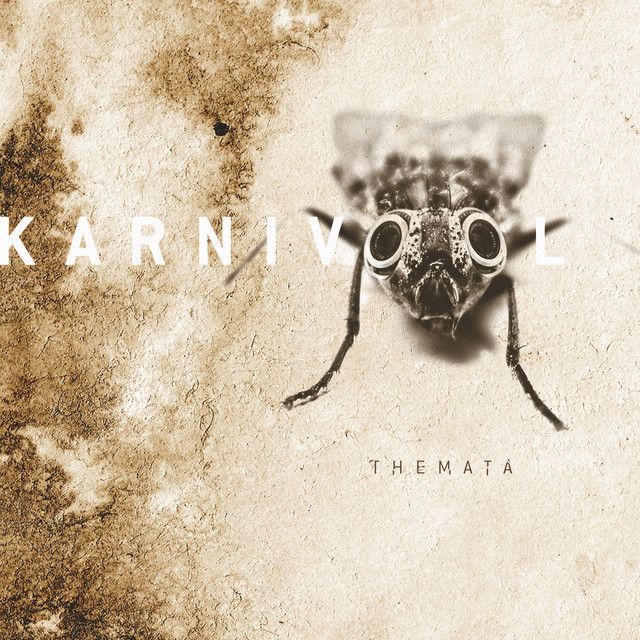
71. Karnivool
Themata
[Independent/MGM Distribution; 2005]
There was a clear demarcation in the global metal scene before and after the release of Meshuggah’s 2002 album Nothing. The djent sound is ubiquitous now, but it was a rare nu-metal band that incorporated djent’s signature rhythms into their sound while it was still relatively fresh. Karnivool got their start covering Nirvana and Carcass songs around their home city of Perth in Western Australia, but 2005’s Themata is the birth cry of something stunningly unique. Multi-instrumentalist Drew Goddard lays down a dizzying mix of bounce riffs, jazz chords, and rapid-fire licks over syncopated drum patterns that range from driving and catchy to downright mind-boggling. The album hits its stride at the third track, “Shutterspeed,” an upbeat djent-tinged anthem catapulted to the top shelf by Ian Kenny’s soaring vocals, and kicking off a sequence of songs that aren’t quite nu, aren’t quite prog, but are all undeniable. By the time we hit “Scarabs,” a chaotic math-metal assault, Karnivool have firmly established themselves as a band that can do anything and knock it out of the park. Later albums would see them take a page from contemporaries Cog and lean into their progressive instincts, but Themata remains as an exciting glimpse of a road nu metal could have taken if it had been a little braver, a little less obsessed with depressive navel-gazing, and willing to get a little starry-eyed looking toward the horizon. — Gabi Brown
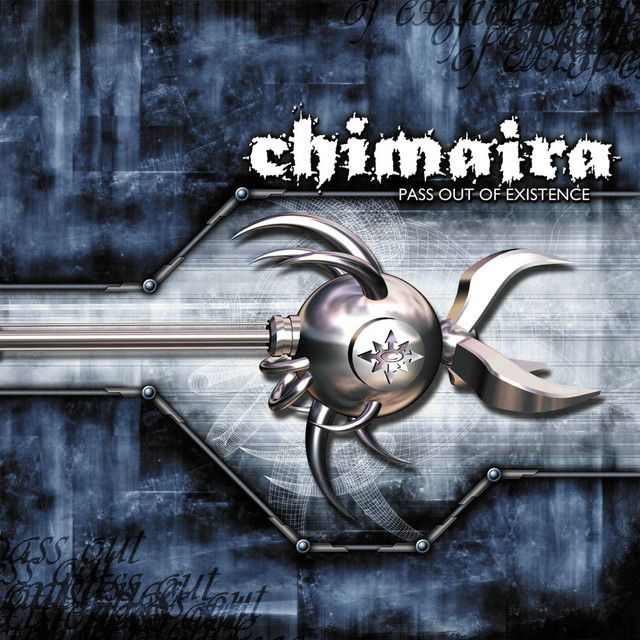
70. Chimaira
Pass Out of Existence
[Roadrunner; 2001]
Pass Out of Existence, Chimaira's 2001 Roadrunner debut, stands as the band's singular foray into pure-nu. Tracks tend to lean more heavily into the metal side of the spectrum such as the stuttered d-beat of “Let Go”, the double bass and chugging riffs on “Severed." A guest appearance by Stephen Carpenter of Deftones on “Rizzo” cements the bizarre riffs laid down by Rob Arnold and Jason Hager as the off-kilter timing makes everything sound like the band was in the process of being abducted by a UFO while recording. Mark Hunter's rampant insecurity and vitriol for his former partners is on full display in a lyrical outing that Jonathan Davis might consider oversharing. Hunter’s tendencies to call for violence and graphic fantasies involving self-harm can also be downright misogynistic at times but what earns this album a place in nu history is also what Chimaira fought to move away from going forward (2003 follow-up, The Impossibility of Reason, was essentially a death metal album.) Pass Out of Existence stands as what Hybrid Theory might have been if Mike Shinoda grew up on Slayer. Dirty, murky and downright weird, this album encapsulates what 2001 was about for aggressive nu metal, and it wasn't always pretty or radio-friendly. — Cranfather
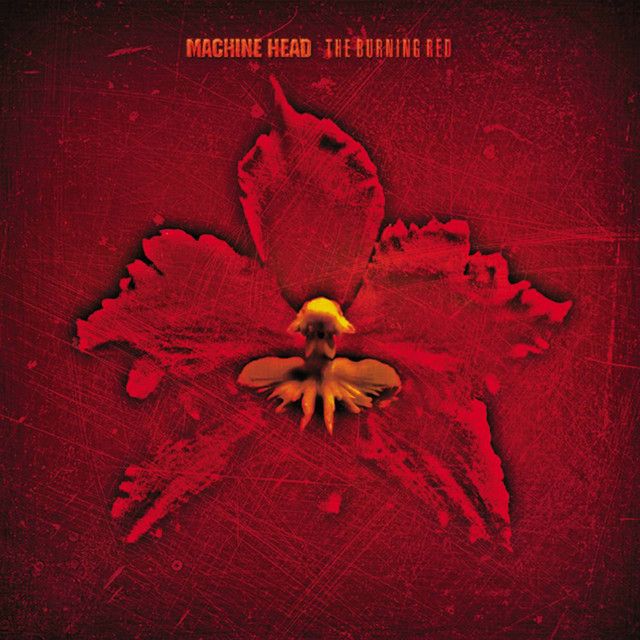
69. Machine Head
The Burning Red
[Roadrunner; 1999]
Shortly after departing from legendary Bay Area thrash outfit Vio-Lence, Robb Flynn formed what would become Machine Head in an Oakland warehouse. Following the departure of founding guitarist Logan Mader in 1998, Ahrue Luster joined on lead guitars, and as a contributing songwriter. Their third studio album, The Burning Red, saw them work with Ross Robinson, by then already renowned for having produced Korn and Slipknot. While few today would consider Machine Head a nu metal band, there is little question as to whether The Burning Red is a nu metal album. From the first track following the instrumental intro, "Desire to Fire," it's obvious Robb is enthusiastically embracing the emerging subgenre with bits of rapped vocals and a bouncing disco drumbeat. Responses at the time were certainly mixed, with some fans disliking the use of hip-hop influences or otherwise finding fault with Robinson’s production and their departure from the more groove metal sound of their earlier albums. Flynn said in 2012 regarding the backlash “If all that people got out of [The Burning Red] was rap-metal, then they didn't fucking listen to it." Fans who disliked the album were apparently a vocal minority; it stands as their second best selling release, surpassed only by their debut Burn My Eyes. In 2023 we can look back with over two decades of hindsight to see that Machine Head was ahead of the curve in adapting to new trends in heavy music. The Burning Red showed Flynn and his cohorts not only could run with the newer crowd, but continue to influence multiple subgenres of metal going forward. From this day, one can hardly help headbanging and/or grooving to this one. — Mark Doubt
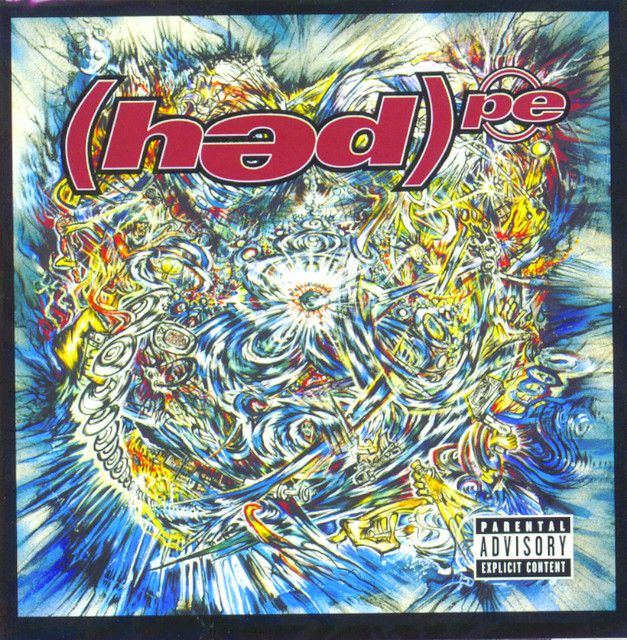
68. hed(pe)
hed(pe)
[Jive; 1997]
Back in 1994, a young-ish SoCal beach bum named Jahred Gomes took some mushrooms and headed to a benefit concert for imprisoned activist Leonard Peltier. The lineup was amazing — Rage Against the Machine, the Beastie Boys, Cypress Hill, and L.A. punk band X — but for Jahred it was tantamount to a religious experience. “That just made me go, ‘Oh, this is what I want to do,’” he relayed to the Garza Podcast nearly 20 years on. “And by this, I mean ALL of this. I want to rock like Rage, I want to rap like fucking Cypress, I want to get down like the Beasties and I want to be punk like X.” This epiphany resulted in (hed) p.e.’s ramshackle debut, which dropped 12 days after Limp Bizkit’s more ballyhooed Three Dollar Bill, Y’All. Jahred spun fanciful tales about government cover-ups of alien visitation, but also touched on racism he experienced growing up – and the music largely sounded great. But without a fluky George Michael cover up their sleeve, they didn’t sell enough copies to even pay back their advance. (Not to mention, even if he was doing it purely for shock value – Jahred’s contention – there’s simply no justification for songs like "Ken 2012") Regardless, over the years, (hed) p.e.’s style became steadily more jaded and subversive, their questionable lyrics harder to overlook with Jahred's descent into 9/11 conspiracy theories and the like. As such, (hed) p.e. is generally one of the more maligned nu-metal era bands and yet, there are Reddit threads filled with people for whom those early albums meant a great deal, and Jahred seems to have mellowed into an affable dude who claims to eschew most of his old conspiracies, conquered his addictions, and dotes on his wife and two kids. He also still loves making music, though thankfully like Jahred himself, his tastes have evolved significantly. — Bryan Horowitz
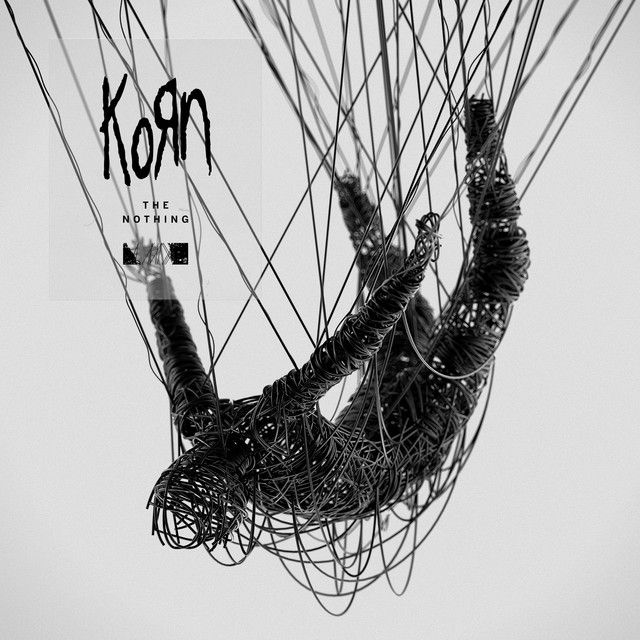
67. Korn
The Nothing
[Roadrunner/Elektra; 2019]
After decades of articulating the pain inside Jonathan Davis found himself having to wrestle with something new; grief. Written in the wake of the deaths of Davis' wife and mother the bagpipes and funeral tempo of opener “The End Begins” mirrors Issues intro “Dead” but it's closer "Surrender to Failure" that answers the call of “All I want in life is to be happy” with a wracked, despairing "I failed." Korn were a band that blew up their tribulations into nine-million-megawatt scale sound but when "You'll Never Find Me" ends with a quiet, modest, final refrain of "I'm not doing fine" it'll puncture your heart as accurately as any "Falling Away From Me" or "Freak On a Leash" could. Clocking at a trim 44 minutes, The Nothing overcomes its Octane-radio-core production with the most committed vocal performances from Davis in over a decade and some truly vicious riffing that makes the polished chorus hooks soar. It's a late-career win wrought from the worst of circumstances and, in the process, becomes something triumphant rather than defeated. — H.K.
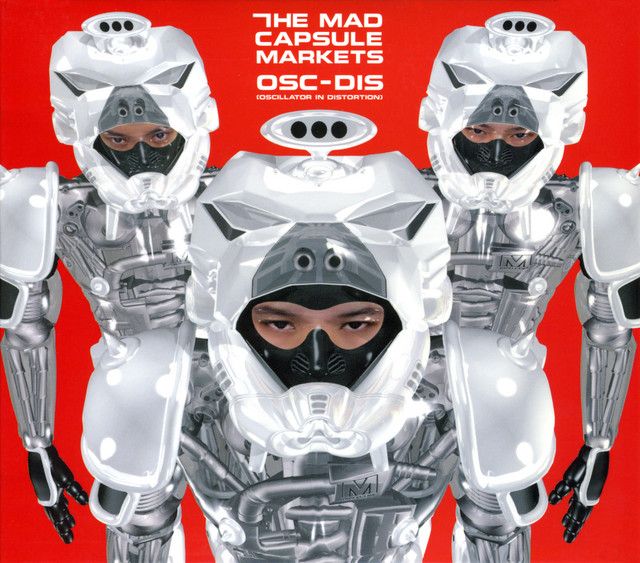
66. The Mad Capsule Markets
OSC-DIS
[Speedstar; 1999]
Former Megadeth guitarist Marty Friedman once said the difference between American and Japanese pop music is the fact that Japan enjoys less than perfect singers for the vulnerability and personality it adds to the music. Mad Capsule Markets vocalist Kyono’s raps are barked and his singing is shouted in both Japanese and English, lending the kind of personality Japan could appreciate, while Americans were left confused. From their humble roots as an underground hardcore punk band, the boys from Yokohama evolved their sound by adding industrial elements, rapped vocals, and experimentation with the English language lyrics, finally coalescing into the 1997 release Digidogheadlock, the album that started the sound they would eventually perfect in their 1998 digital hardcore masterpiece OSC-DIS. OSC-DIS is a relentless yet varied attack of amen break loops, bass-centric riffs, and heavily distorted vocals all tied together by hooks you can’t help but sing along with no matter what language is being spoken. From the surf punk vibe of “All the Time in Sunny Beach” to the atmospheric aura of “Step Into Yourself” to the hard-hitting rap metal of opening track “Tribe”, the album switches up styles while maintaining its identity. Promotion for the album followed a similar pattern of diversification; DVDs of the four music videos came bundled with the album for the US release and a video game based on their mascot came bundled with one of the CD singles. Additionally “Pulse” appearing in Tony Hawk’s Pro Skater 3 brought the band well-deserved attention overseas, perfectly fitting the futuristic Tokyo park used for the final competition. While “Pulse” is by far their most known song in the West, the closing track “Midi Surf” sums up the album perfectly; rapping Japanese vocals over a Helmet-like riff showing off the band’s harder side before transitioning into four pop chords with Kyono slurring out some positive encouragement; “I’m stoked this fine day”. — Smoothie

65. 100 gecs
10,000 gecs
[Atlantic; 2023]
It seems like the primary objective for Laura Les and Dylan Brady's major label follow-up to their hyperpop breakout 1000 Gecs was to do the absolute most in the least amount of time. In 26 minutes and 53 seconds we get a perky ska song with ribbits on the 2s and 4s ("Frog On The Floor"); a turntable backspin slicing up the THX deep note ("Dumbest Girl Alive"); digital distortion ripping the robo-phrase "one million dollars" to shreds ("One Million Dollars"); and most importantly, the undeniable zest of nu-metal. It's there on the ill-tempered "Billy Knows Jamie," which aligns with the fine nu-metal tradition of writing a song about a scary dude who wants to murder you ("Jamie's gonna make your ass one with the Earth / But first, he's gonna make your ass one with the hurt.") It's there in the elastic bass and harmonic whine of junk food banger "Doritos & Fritos." And it's certainly all over album highlight "The Most Wanted Person In The United States," a smart-alecky rap number that exalts a sample of "Insane In The Brain" by Cypress Hill through verses about killing someone's dad, taking his money, and then having Anthony Kiedis sucking on your penis. All of it is perfectly dumb, perfectly dark, perfectly silly, and none of it would work in the slightest if it weren't so goddamn catchy. — Molly Mary O'Brien

64. Bleed
Bleed
[20 Buck Spin; 2025]
30 seconds. That was all you got. Long before streaming handed you full songs for virtually nothing, iTunes offered just 30 seconds to determine whether or not “Your Body is a Wonderland” was worth the 99 cents. While this ancient method of song selection may be long gone, Bleed's self-titled debut is built for it. Simply put, if you like any random 30 seconds of this album you will like the whole thing. Where other albums, even great ones, have peaks and valleys, Bleed is like a freshly paved NASCAR track where the first lap is as satisfying as the 10th. That consistency owes a lot to a Bob Clearmountain worthy mix that forsakes trendy metalcore ‘heavy’ presets for an FM radio crispness that paints each octave chord in electric red and yellows. When Olli Appleyard of Static Dress comes careening into “Enjoy Your Stay” his mania counterpoints just how composed and confident the rest of Bleed really is. This isn’t an album of chaos, it’s one of control, where Ryan Hughes’ voice shimmers like the sunlight upon its album cover. Speaking of 30 seconds, if you were concerned which side of ‘nu-gaze’ Bleed falls upon you’ll be relieved to hear a turntable within the first 30 of the album and you’ll hear a lot more before it’s over. A nu generation finally has a classic to call its own. — H.K.
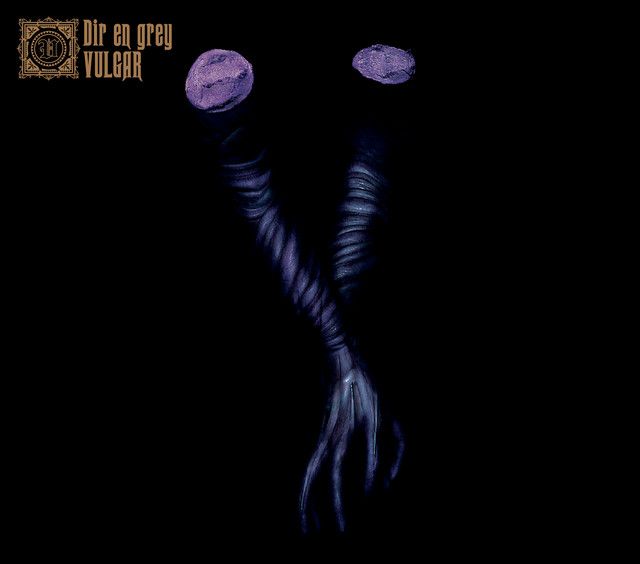
63. Dir En Grey
Vulgar
[Firewall Div.; 2005]
2005 may have been past the initial peak of nu metal in America, but Japan would deliver some of the zaniest, most forward-thinking, and sharply distinct nu metal of the era. Slowly shedding the glitzy, visual kei inspired image of their early career, Dir En Grey set out for dominance with their fierce, and at times deeply disturbing Vulgar. Released in the winter of 2003, the ringing metallic percussion of the intro "audience KILLER LOOP" lulls you into a false sense of security before the tone of the album properly bursts into your face, with all of its dark, raw and blown-out production. It smacks you clear across the face with its energy and doesn't let up from the moment it ends. The album's most well known track "OBSCURE" embodies the ethos of this album perfectly, with its bouncey as all hell with Drop A riffs that will make you want to run face first into a wall. Creepy, heavy, at times sorrowful yet still beautiful, and a sorely underappreciated gem. — Orion
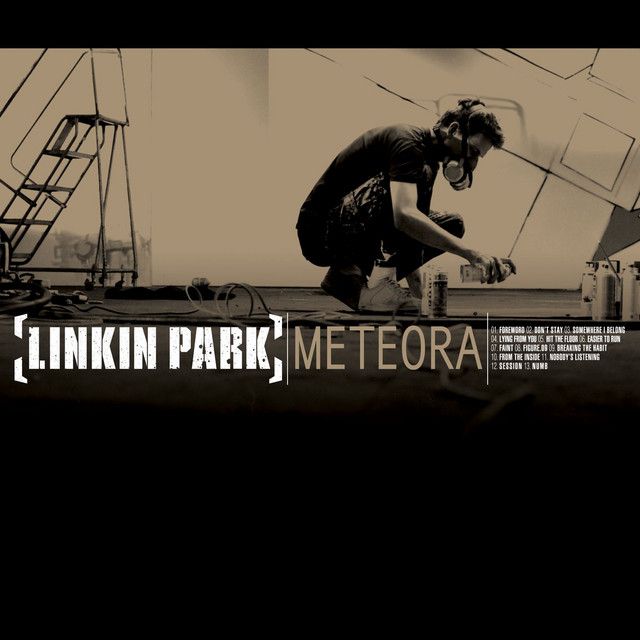
62. Linkin Park
Meteora
[Warner Bros; 2003]
It wasn’t just other rock bands that couldn’t figure out how to top Hybrid Theory, Linkin Park couldn’t do it either. Instead of attempting Linkin Park’s big evolution, Meteora finds new formations in the formulas, expanding rather than transforming. Thank god, no band before or since put the pieces together quite like Linkin Park and we should be thankful they gave us one more album of hyper-consistent nu-metal to enjoy before the anti-nu metal propaganda got to them. As the Bad to Hybrid Theory's Thriller, Meteora is heavier (“Don’t Stay”), poppier (“Numb”), more hip-hop (“Nobody’s Listening”), and more instrumental (“Session”) in pursuit of further world domination. Through and through, Meteora is an effective, accomplished follow-up to an impossibly high peak. It’s also where the story of Linkin Park, nu-metal band, comes to an end. Where would they have gone if allowed to expand upon something like “Breaking the Habit”— deftly fusing the band’s tight melodies and electronics to something that charts a way forward they ultimately couldn’t take as the pressures to betray the soon-to-be passe nu metal scene for designer sunglasses and Rick Rubin took hold. Linkin Park’s run as nu-metal’s definitive band was short, but rock music is still living in the impact crater they left behind. — H.K.
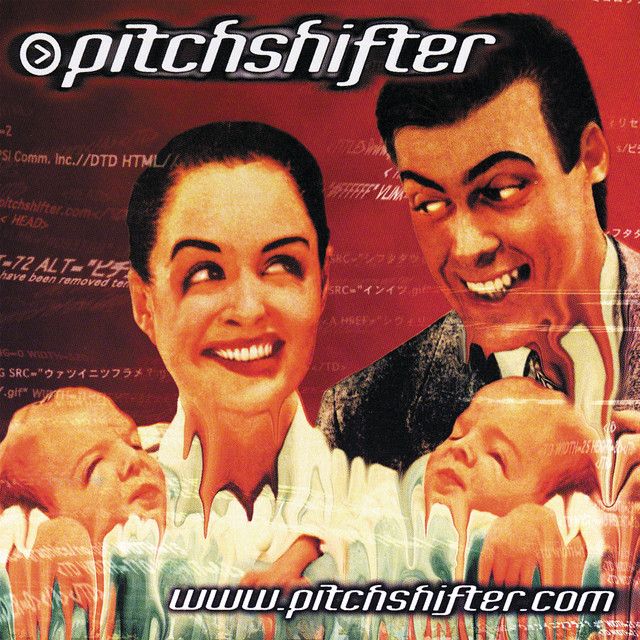
61. Pitchshifter
www.pitchshifter.com
[Geffen; 1998]
There's something deeply, bitterly spiteful about Pitchshifter’s www.pitchshifter.com. On one hand, it's a Godflesh clone going junglist massive at the height of the genre. It's snotty and quick when there once were growls and metallic dirges. However on the other hand, contrary to the metal elitists at the time (and still to this day,) this album, their first major label release, goes above and beyond the level of Pitchshifter’s previous output, to the point of intentionality. It's openly political in a crass, anti-authority way, while deeply respectful of its own allusions to early jungle, in both lyrics and praxis (what other nu metal album has a track filled with one-shot snares and beats?) It's filled with proto-DnB breaks and synth stabs, the kind of big beat bombast you’d hear on the Matrix soundtrack. It's filthy, grimy, and if you don't like it, it’ll kindly tell you to toss off before pushing you in front of a speeding London Underground train. — Cleo T
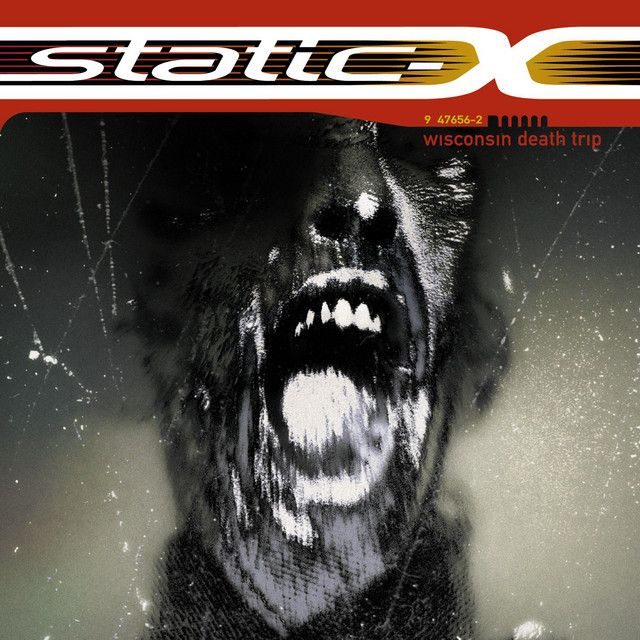
60. Static-X
Wisconsin Death Trip
[Warner Bros; 1999]
When bands like Ministry and Nine Inch Nails incorporated mechanical components and harsh vocals to their songs in the early nineties, nu-metal's rise demanded a poppier counterpoint to satiate the masses. Thus, Static-X's Wisconsin Death Trip went platinum within two years, an indisputable testament to its addicting sound and replayability. In a 2019 interview, producer Ulrich Wild shed some light on how Static-X achieved their characteristic industrial sound despite small budget and short production time; custom drum triggers rigged from pieces of wood and microphones generate the relentless, chugging drum-machine sound without employing a drum-machine, and cymbals are played overtop. Guitarist Koichi Fukada provided the synth lines using the earliest model of a groovebox–a new technology at the time. The band’s creativity and technical skill outshone any limits of funding or equipment and resulted in a compelling use of amateur equipment that sounded partially mechanical but still contained distinct traces of personality. The unique setup really shines in “December” and “The Trance is the Motion,” where frontman Wayne Static's vocals start out softer and the beat is a bit slower than the rest of the album allowing the drums and mixing to come forward. In other songs, the beats are faster and the members use audio samples, vocal layering of Static’s voice, and simple but fast-paced guitar riffs, creating tracks like “Push It” and “I’m With Stupid” that are easy for fans to dance and sing (or shout) along to at home or in concert. — Yumi
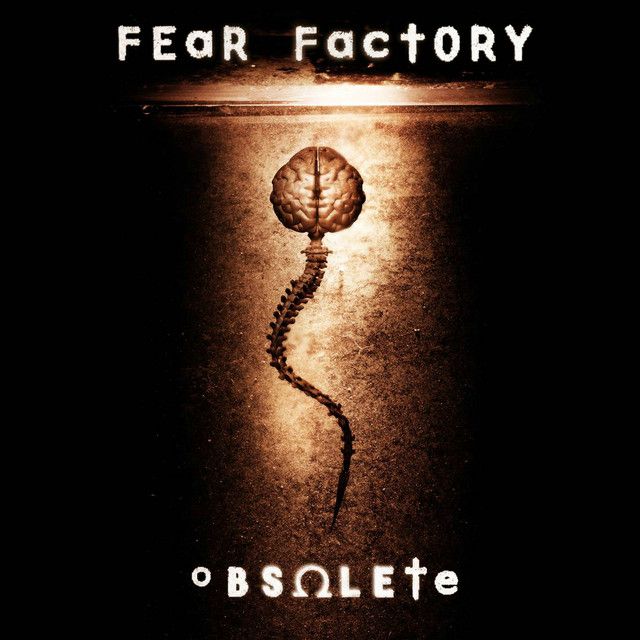
59. Fear Factory
Obsolete
[Roadrunner; 1998]
Released in July of 1998, Obsolete saw Fear Factory removing any self-imposed limitations and fully inspired to make a legendary genre album. Already a successful touring band with a certified classic under their belts (1995's Demanufacture), they turned to a story written by vocalist Burton C. Bell to inspire a full concept album that ebbs and flows with the tales of a world controlled by machines and the humans that struggle with existence as a result. A record like this could have very easily been a cold or calculating affair with the spectacularly controlled performance of Raymond Herrera behind the kit. However, Obsolete is bursting with the organic energy of a live show. Their cover of “Cars”, later added as a bonus track and featuring Gary Numan himself (who also appears on the title track) catapulted the album to its gold status, remaining their best-selling record to date. The lineup that recorded Obsolete is very likely never reuniting due to in-fighting, and only guitarist Dino Cazares remains a member. It’s a real shame because, to many fans, Obsolete remains the crown jewel in the Fear Factory catalog. — Cranfather
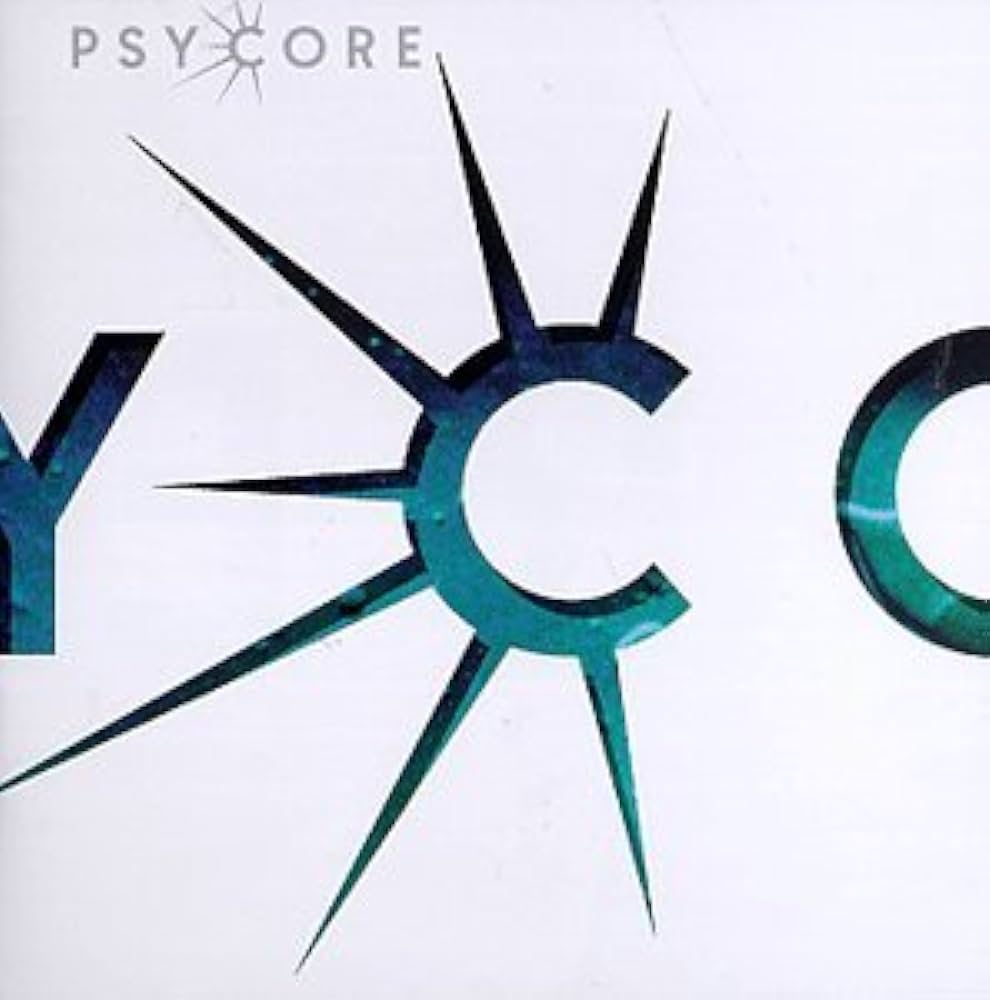
58. Psycore
Your Problem
[V2; 1998]
“Love is a helmet / and there’s a war outside” is a versatile lyric, as easy to imagine wailed by a pop diva as shrieked by an emo chanteuse. But how about dryly intoned by a conspicuously bearded Swede over some nu-metal? Markus Jaan gravely speaks his verses like a worn-down salaryman ashing his cigarette behind a bar, someone who has been there done that and wants you to do a little better than he did. His naked voice is the first sound on the record, a tensely muttered “I can never be / what you want me to be / I can never do what you want me to” then a brutish nu-metal drop highlighted by the best snare sound this side of Terry Date’s mixing board. Jaan’s pragmatic spoken word is offset with an urgent shout, a coworker letting the office know he’s had it up to here and will take no more of this shit. But for every drop of nu-metal philosophy, there’s always something hilariously off-kilter to offset; songs about chocolate milkshakes or a finale that swaggers back into the office the next day hammered drunk. That lyric about love being a helmet? It’s followed with a question: “How come you can’t accept the fat sweaty person on the seat next to you on the Concord to paradise?” Let’s see the pop diva try that one on for size. — H.K.
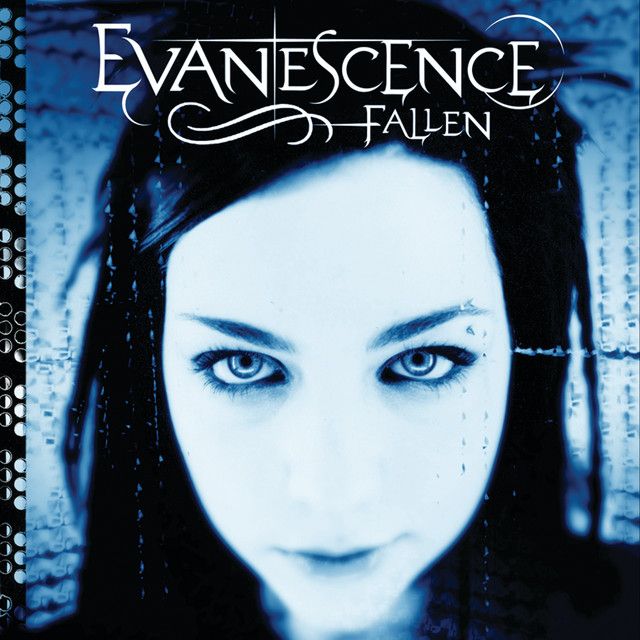
57. Evanescence
Fallen
[Wind Up; 2003]
Hailing from Little Rock, Arkansas, Evanescence made waves within their local scene, releasing several demos and EPs before major label Wind Up came calling. Fronted by vocal powerhouse Amy Lee, Fallen introduces the band’s unique musical style, a seamless marriage between contemporary metal and classical music. Tension between songwriters Ben Moody and Amy Lee results in a compelling coupling of guitarist Moody's du jour nu-metal alongside Lee's higher aspirations of gothic fancy. Reaching a peak on "Bring Me to Life," the dueling impulses collide spectacularly, with guest vocalist Paul McCoy's clenched fist grunting providing ballast to Lee's emotive wails, much to her dismay and radio’s delight. Enchanting church choirs and pianos pull tracks together, such as the devastating piano ballad “My Immortal” and the overwhelming fight for self-control in “Haunted.” Themes of Christianity are also touched upon, particularly in “Tourniquet,” which centers around a desperate plea to a higher power for salvation from self harm. Lee’s spellbinding artistry and Moody’s interests in the mainstream helped the record’s commercial performance, scoring a number 7 spot on the Billboard 100. A not-insignificant portion of the record’s resonance is owed to its female perspective, something that was only occasionally explored in the nu-metal scene but explored evocatively here with millions of young women responding in kind, propelling the album to evenual diamond sales. Fallen presents a larger-than-life tale of battling life’s greatest challenges, solidified by Lee’s soul-stirring vocals and unflinching melodrama; ultimately delivering an unforgettable narrative of love, loss, and an erosion of the self. — Paris Murrow
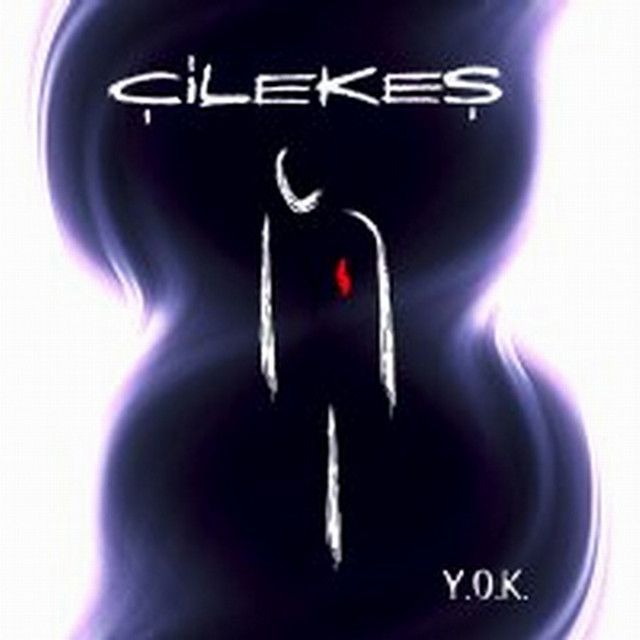
56. Çilekeş
Y.O.K.
[On Air Müzik; 2005]
Y.O.K. is an abbreviation for “Yalnız Olma Korkusu”, which can be translated as "Fear Of Loneliness." Understandably, a bunch of guys can feel lonely making nu-metal music in a half-middle-eastern, half-European country. Modern Turkish history can be read as a duel between Middle Eastern influences and European ideals. This is what many Turkish rock bands sound like, and Ankara band Çilekeş’s Y.O.K. is no exception.
In a letter to Robert Hooke in 1675, Isaac Newton made his probably most famous statement: “If I have seen further it is by standing on the shoulders of giants”. When you make nu-metal, a relatively new and inherently American music genre, you don’t have too many giant shoulders to stand on. Y.O.K.’s success lies in the fact that they’ve chosen the right ones: Deftones, Korn, Linkin Park, and even Dredg exist alongside Turkish and Arabesque musical contributions. Melancholy and anger are always there, as Y.O.K.’s real value stems from the harmony of heartfelt emotional expression and musical prowess. Çilekeş had the chance to support Deftones in their one and only Istanbul concert. You should give them a chance, too. — Emre Alper
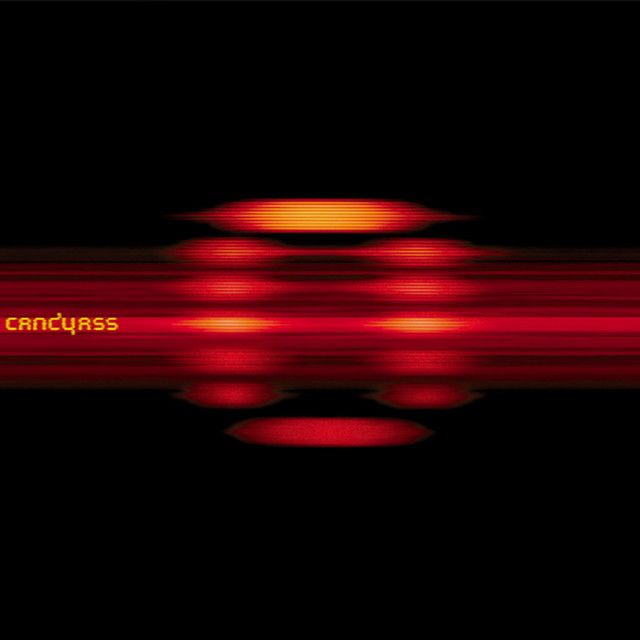
55. Orgy
Candyass
[Elementree; 1998]
There comes a moment during the intake of certain synthetics when you stop asking yourself if you’re feeling it and start really feeling it. As the world around you sharpens into sheets of snowy static you manage one last sober thought; “Oh shit there it is.” That surreal feeling is what the very beginning of Orgy’s 1999 psychopanopticon opus Candyass sounds like. The industrial wallop of “Social Enemies” is the bumpers on your brain falling down and the bowling ball that is your mind ricocheting out of the lane.
Candyass delivers on the promise that was Korn’s 1998 disco demolishing “Got the Life,” vacuuming as many chic euro styles as one band possibly can (New Order, Gary Neumann, The Human League, David Bowie) and running it through a nu-metal filter to produce something that still sounds utterly unique. Where other nu-metal albums would be content to riff, this whooshes. “Dissention” features the album’s clearest bounce riff, but even then it’s blown out and surrounded by the kind of electronic drums that could only come from a kit made of octagonal pads. “Social Enemies,” one of nu-metal’s all time great album openers, is a post-apocalyptic cover band trying to put Nine Inch Nails songs back together for a zombie rave. “Stitches” anticipates electroclash and witch-house while stridently rocking harder than both.
Frontman Jay Gordon has a mastery of Hollywood psudeo-speak and utter disdain for those who would use it. Already 30, he’s old enough to be over the party scene while suddenly famous enough to be catching his second wind. Where his peers moaned about being stars in the dope show, Gordon seemed to actually enjoy it. “Hold back your virtues,” he tempts, “You’re fearless in motion.” Gordon’s optimal way to walk off the buzz is with friends (“Walking with the deadbeats down the street”) while strange chemicals make their last stand (“I’m infinite”/“I want everything”) “Blue Monday” cleverly flips a line from New Order’s 12-inch classic (“How does it feel to treat me like you do?”) into an angst-fried chorus that pivots the song from sleek professionalism to goth throwdown.
Inevitably, there’s the morning after. After Candyass’ bountiful pleasures have exhausted themselves “Dizzy” is that feeling that descends as you finally depart the afters to lay down in bed; heart hammering, birds twittering, alcohol re-fermenting in your stomach as normal people start their days: “You’ve made a mess of everything you’re a mess a fucking mess.” — H.K.
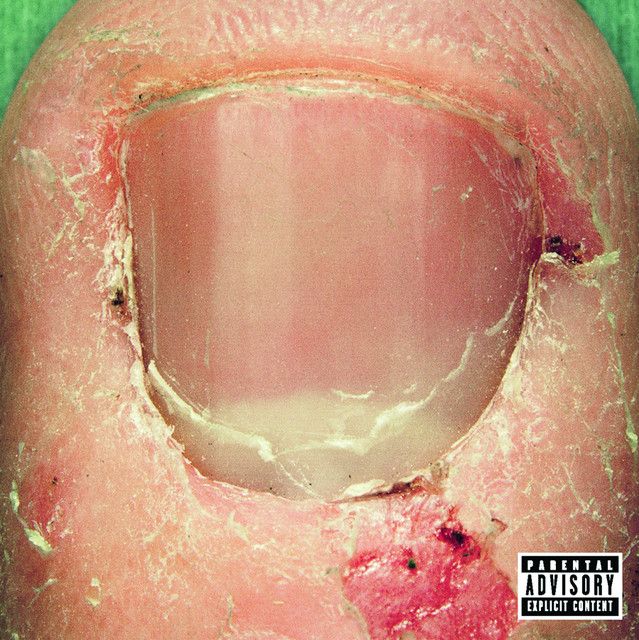
54. Skrape
New Killer America
[RCA; 2001]
It’s time to face facts; Staind ruined everything. When the Springfield, Massachusetts four piece’s power ballad “It’s Been Awhile” scaled the rock and pop charts all of the hard-hitting, piledriving nu-metal acts that had been signed in the wake of Korn and Limp Bizkit’s success were yesterday’s news. Pity for Skrape, whose debut New Killer America couldn’t possibly have been more out of step with the times. Its neon bright technicolor sound, highlighted in marker with airy synths and industrial samples, brought together the unlikely fusion of “Pantera and The Cars,” as described to us by their former drummer Will Hunt. Singer Billy Keeton’s sideburned Flordiaman rasp pairs nicely with drummer Hunt’s headset mic, whose Morgan Rose-style outbursts power songs like “What You Say” and “Isolated” to higher heights than their misery-slinging peers. Maybe America didn’t get it but Japan heard this one loud and clear as the nation that embraced bands like Polysics and Mad Capsule Markets had their ears pricked by the band’s synthesizer, leading to greater success there than domestically, and culminating in a triumphant performance at Summer Sonic festival in Tokyo. “We love your country Japan,” gruffs Keeton before adding, in the harshest Florida accent possible, “ARRI-GAHT-TOE.” — H.K.
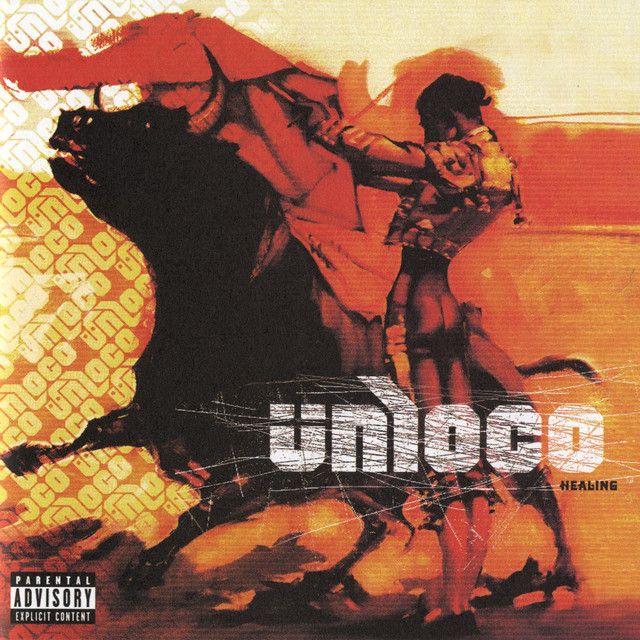
53. Unloco
Healing
[Maverick; 2001]
On a literal basis, Ünloco’s Healing is factory standard nu-metal. Abounding with lyrics about the pain, lyrics about being used, and lyrics about the pain of being used it’s easy to miss that over a tight 45 minutes, the whole becomes much more than the sum of its parts. Healing is excellently produced— thick guitar tones, meaty drum sound, elegant touches of spring reverb, and filler-free sequencing make for a rock-solid front-to-back listen. Even the lyrics reveal themselves as effective vehicles for clear, direct singing and screaming from Joey Dueñas rather than attempting any profundity. It’s the kind of album the genre deserved more of— a good one without any higher aspirations than being just that. — H.K.
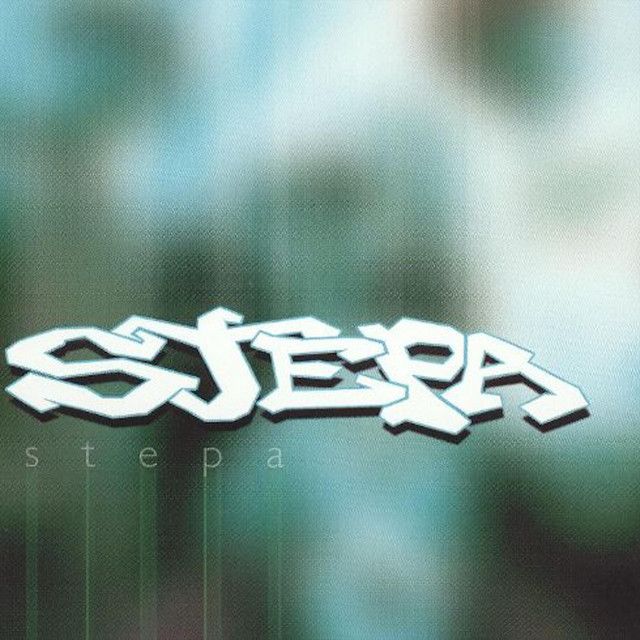
52. Stepa
Stepa
[Locomotive Music; 2002]
Stepa’s self-titled debut is one of nu-metal’s most precious secrets. Passed around in .zip files and Google drives before finally making it to streaming services in early 2022, Stepa is an Interscope bankrolled effort that ended up buried, its major label origins revealed by songs as accessible as the genre’s most successful records while standing well outside of them. An extended psychedelic meditation on innocence close enough to taste but far enough away to be understood as gone, Stepa is filled with fantastical aquariums, Rubik’s Cubes, and eye candy intermingling with LucasArts SFX and 7-string guitar. “Confusion, simple brain, stupid frown on a pretty face,” singer Blake Beckman ponders on “Free” like a child staring with wide eyes at the adults around him. “When’s- it- my- turn- to explode / Ha ha ha!” he shrieks on “Mountain,” unfinished thoughts lost in excitement ("I feel so happy I could! / I feel so happy I could!") like a child whose second serving of mozzarella sticks just touched down. There’s trauma here too, rendered in panicky distant dream logic. “Spaceships and Airplanes,” another seemingly perfect pop-nu-metal glimmer that becomes darker with successive listens, is about the death of Beckmann’s brother in a car accident. “Let him go! Free and strong!” he wails through the breakdown before consoling, “I am with you wherever you are right now.” Trafficking real tragedy in the kind of innocent angst nu-metal provides, it’s a deeply touching moment, the beating heart at the center of Stepa’s curiosities. — H.K.

51. Deftones
Diamond Eyes
[Reprise; 2010]
On February 28th, 2010, Deftones fans eagerly flocked to the band’s official website to hear their new single, "Rocket Skates." Excitement and relief were palpable among their dedicated followers; the single came at a time of uncertainty about the band’s future due to bassist Chi Cheng’s tragic accident, and many speculated it could be the end. The release of Diamond Eyes is a resounding “no” to that inquiry. The auditory discontent that plagued their self-titled and Saturday Night Wrist releases is gone, replaced by the exact middle ground between Chino Moreno’s Robert Smith and 80s new wave inspirations and Stephen Carpenter’s eight-string heavy metal riffs. The record is a sonic reflection of unity brought forth by adversity and loss, and the result is an ethereal, atmospheric body of work that reminds us why Deftones are one of the best bands of their generation. Though it lacks the innovation of their '90s run, Diamond Eyes brings forth something fans hadn’t seen before: a refined, mature version of the band out of chrysalis, confident in their artistry, their relationships, and the future. — Jasmine
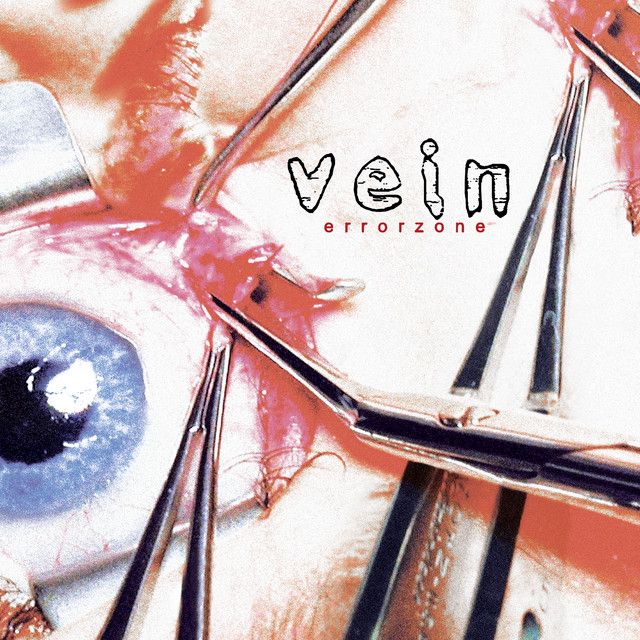
50. Vein
Errorzone
[Closed Casket Activities; 2018]
Errorzone is the fucking truth and my flag is not solitary. Vein offers a meticulous and resounding production: the sound of maglev trains colliding at full force, imbued with emotional hatred, distilled to waveform. From “Broken Glass Complexion” to “Doomtech” and “Quitting Infinity,” it’s consistent songwriting that brings forth a canvas well-versed with Glassjaw, Slipknot and Orgy. “Virus://Vibrance” is a completely batshit way to launch: breakbeat cuts and 7-string dive bombs into a horrorcore adjacent shrill. Errorzone knocks with the weight of a thousand stars, armed with the chunkiest snare I’ve heard in years, dangerous math riffs, and flowers to regrow after the bombs go off. — balloonxm
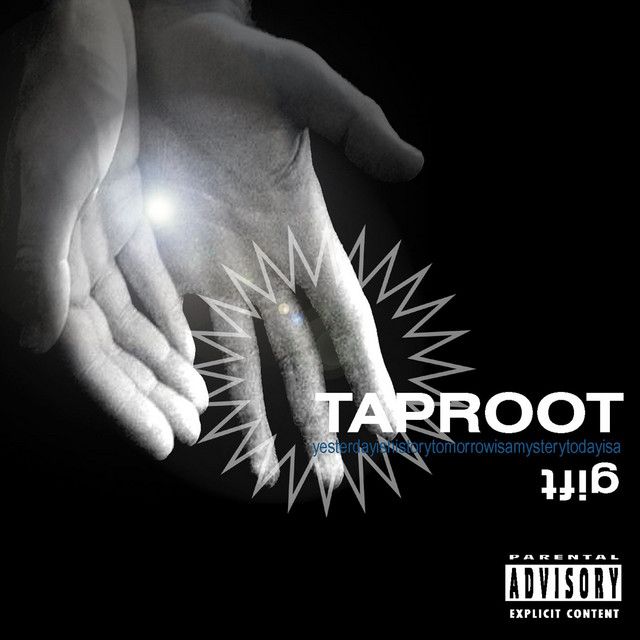
49. Taproot
Gift
[Atlantic; 2000]
Upon formation in 1997 in Ann Arbor, Michigan, Taproot quickly brought in fans with their electric live performances. After gaining an Atlantic record deal with the help of fellow nu-contender System of a Down, the band released their first album Gift. The record was recorded in only six weeks, as most of the songs had been written years prior. Stephen Richards’ unique groaning vocal style is on full display and utilized in a variety of styles, including raps, screams, and gravelly growls, along with traditional melodic singing. Mike DeWolf and Phil Lipscomb string together a collection of heavy-knit riffs, while Jarrod Montague focuses much of his attention on the snare drum. Struggles with mental health and the woes of life while working to overcome these challenges and growing as a person inspire much of the lyrics, awarding the album a chilling, yet deeply personal atmosphere. The band scored places on the Mainstream Rock chart and the U.K. Singles Chart with “Again & Again,” a track with a captivating hook and a chorus that is hard to forget. “1 Nite Stand” brandishes the initial heaviness that the band shied away from in subsequent releases. The early development of many of the tracks and the band’s distinct style, as well as a tracklist full of heavy hitters, grant Taproot a stellar debut with Gift. — Paris Murrow
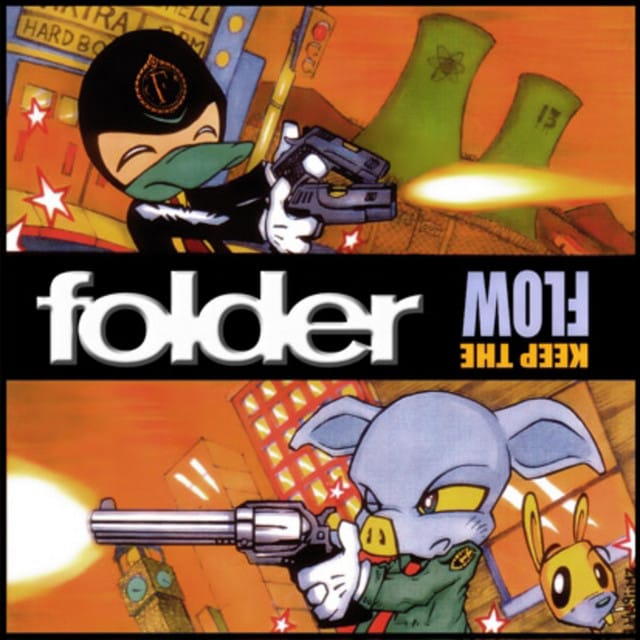
48. Folder
Keep the Flow
[Silly Productions; 2001]
You're reading that correctly. Folder's 2001 studio effort Keep the Flow came out on a record label called 'Silly Productions.' And Keep the Flow is so irresistibly silly I'm not sure it could have come out on anything else. Hypothetically the album is in English but it's near impossible to tell. An Italian band clearly utilizing their second language, Keep the Flow is 45 minutes of gibberish (From "W.I.K.", I think: "We're literally kids! We're literally kids! HOLD IT DOWN FRIKS!") that flies by with such zeal you'll never want to figure out what they're actually saying. And when Stuck Mojo's Bonz cries out "FOLDER!!" and Folder frontman Mana answers back with an equally enthusiastic "STUCK MOJO!!" on "Drastic" it sounds like a pair of best friends executing a perfect Dragon Ball fusion dance on top of their school's jungle gym. — H.K.

47. Skillet
Collide
[Ardent/Lava; 2003]
After P.O.D.'s right song ("Alive") right time (9/11) triple platinum smash Satellite a mini gold rush happened to Christian nu metal. Bands like Project 86, Blindside, Thousand Foot Krutch, Pillar and Demon Hunter all made their way to the national stage to various levels of success. Before they became Three Days Disgrace, Skillet were happy-go-lucky god pop that followed the change in tides to 2003's Collide. A distinctly post-Linkin Park nu-metal effort, Collide fixes the band's overbearing optimism with a level of clenched fist angst that even Chester Bennington might have flinched at. The Jesus fetishism is still in force ("Your love / My cage / My prison so pleasing") but tempered by a frustration so thick it starts sounding like doubt. "Why do I have to beg / when all that's left / is a memory / forsaken?" pleads lead singer John Cooper. If God answered we can't hear it and I bet Cooper can't either. — H.K.

46. Blindspott
Blindspott
[EMI; 2003]
Released on July 13th, 2003 in New Zealand, Blindspott’s self-titled debut album went platinum in a week on an island of only 4 million people. To a young Kiwi, this was the CD you were ditching 8th period to go get and Blindspott rewarded your efforts in kind. Blindspott is a firmly post-Hybrid Theory nu-metal effort, not just in composition but in the idea that a good rock record needs to hit from front to back. If any one thing sets Blindspott apart from the million other scream/sing/scratch/rap bands front-loading their albums like there was no tomorrow it’s that here you’re never far from a ringer. Even if ballads like “Blank” or “Plastic Shadow” lose you there’s a “S.U.I.T (So Us Is This)” or “Lit Up” on deck to jolt you back to attention. That the whole record is twined up with a cohesive atmosphere and instantly hooky melodies is just icing on the pavlova. — H.K.
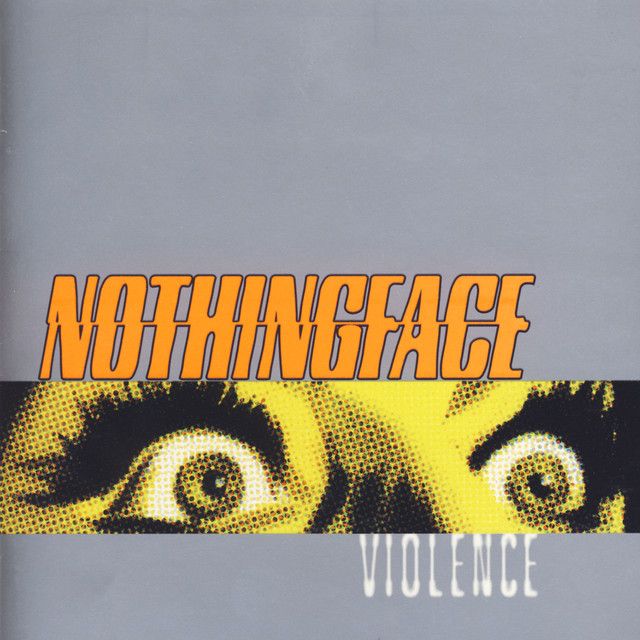
45. Nothingface
Violence
[TVT; 2000]
D.C. darlings Nothingface returned three years after their sophomore triumph An Audio Guide to Everyday Atrocity with another success: Violence. The band themselves described the record as "the soundtrack for the end of the world," a sentiment reflected in the hatefulness ingrained into every track. As with their previous releases, vocalist Matt Holt delivers grunts and growls on top of his trademark grunge singing style with scratchy, pummeling instrumentals to match. The band’s stellar songwriting abilities persist; sinister, vivid lyrics are expertly crafted for the listener’s immersion. Up to this point, the band’s work had frequently been compared to other bands. Pacifier was criticized as resembling Korn’s style too closely, while An Audio Guide to Everyday Atrocity was pitted against Pantera. Violence marked the band’s decent into a dark-sided sound, considered by some to be the best nu-metal the genre has to offer. Despite a disappointing commercial performance, critics hailed the album’s original sound and unflinching vitality, scoring a spot on CMJ’s "Best Loud Rock Albums" of 2000 and receiving four out of five stars from Kerrang. Violence is a prime example of a band growing and playing upon their strengths over time. Combining the elements that worked in their earlier releases with genre and identity developments leads to a high quality release—one of the best in their discography. — Paris Murrow
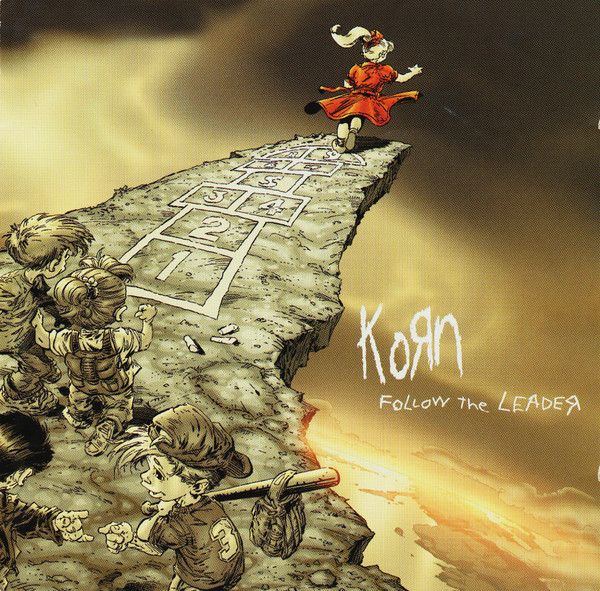
44. Korn
Follow the Leader
[Immortal/Epic; 1998]
Follow the Leader is as innovative as “Got the Life” and as regressive as “Kameltosis,” as epic as “Freak on a Leash” and as putrid as “All in the Family,” as necessary as “It’s On!” and as extraneous as “Earache My Eye.” It needs to be all of these things at once to fully communicate the tidal wave of Coors Light and inspiration Korn was riding into 1998. It is, in short, Peak Korn. To promote Follow the Leader Korn embarked on the Korn Kampaign: a private jet expedition around the country, a long trek to radio stations and meet and greets, culminating with a march on Toronto in a literal tank. The message was clear; rock has entered its post-sellout era and Korn sells. A contemporary interview with Spin Magazine finds the band debating whether or not to cut the 'Biohazard breakdown' from “Freak on a Leash” for radio. Korn unanimously votes in favor. “I want a bigger house!" chants Fieldy. He got one. Follow the Leader sold over 6 million copies in the United States alone. While those numbers are easy to accept nearly two and a half decades after the fact, Follow the Leader is still one of the weirdest multi-platinum albums ever made, rarely indulging in anything resembling a conventional melody or chorus. In sound and form, with a daunting hour runtime, Follow the Leader sprawls like the suburbs American teenagers wandered with it spinning in their Discmans and car stereos. Like many peak-CD blockbusters Follow the Leader would be a better record with some edits but, then again, it would lose that peak-CD time and place magic if were any shorter. It needs to be too much, too long, too everything because that’s the point. “We did more partying than we did recording,” reflects Munky in the band’s 2002 home video Deuce, sounding momentarily remorseful before concluding, “But that’s okay because not our money.” — H.K.
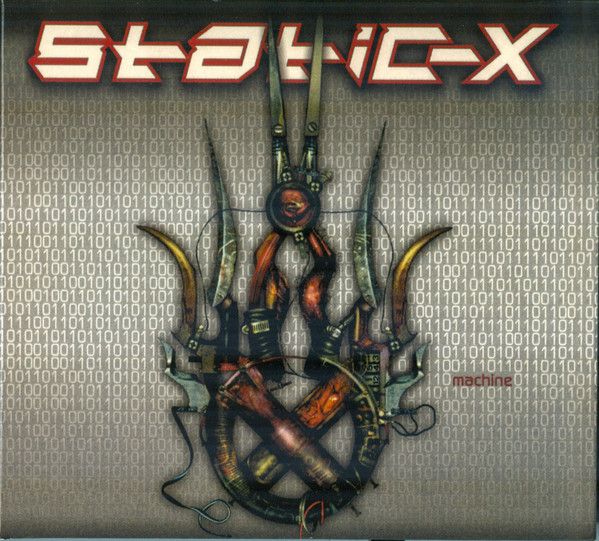
43. Static-X
Machine
[Warner Bros.; 2001]
After a year on the road supporting breakout debut Wisconsin Death Trip Wayne Static had come to a conclusion; “I hate this!” That exclamation, from Machine’s “This is Not” is the centerpiece of an album about absolutely torching your way through hell at maximum speed. Machine sounds like highway signs and white lines whizzing by day after day after day. New parking lot, new venue, new city, new state. Same VHS tapes and same bunk waiting for you at the end of the night. Hell, “...In a Bag” is literally about how you can’t even shit on the bus. So when Wayne Static observes with horror “This is not my home / this is not my life / this is not me” what is there to do? While Machine doesn’t innovate on the 4/4-lunk-industrial of Wisconsin Death Trip, it brings its strengths into greater focus while shearing away what didn’t. The gross sex jams have been excised in favor of a song cycle about feeling like a cog inside a larger cog inside a machine that powers an even bigger machine. Static-X’s music is so simple it helps that Wayne has specific targets of ire to obliterate here. Problems are objectives to overcome with brute force (“Structural Defect”), de-evolution (“Machine”), or unfeeling aggression ("Cold"). The music, meanwhile, pummels forth with unceasing force and fury but occasionally breaks into something truly surprising. When “Otsego Undead” concludes with twinkling spirals of synth arpeggio it’s a moment of quiet wonder that sparkles in the air like mid-day snow. Then the song ends and it’s back on the bus. — H.K.
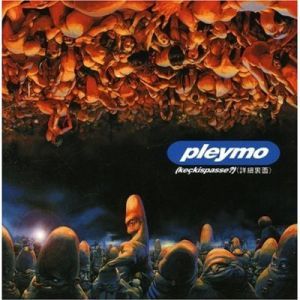
42. Pleymo
Keçkispasse?
[Wet Music; 1999]
Nu-metal is as thoroughly American as genres get, only a country as twisted and ugly as ours could dominate a genre that does the same, but though we produced the majority of nu-metal classics, we also were the first to get burned out on it. By 1999, it was easy to feel like nu-metal was unraveling into a pile of cliches— pointlessly angsty music made by millionaires. If you lived overseas, however, nu-metal was still the cool foreign import. Long after it became a stateside joke nu-metal bands were logging hits and selling out tours abroad. On debut Keçkispasse? French sextet Pleymo sounds ecstatic at the prospect of making straight-up-and-down-no-denying-it nu-metal music. From the happy hardcore explosion “Yallah” to the charmingly boom-bap “Soukaripa” you get a sense of community from Keçkispasse? - of friends certain that with enough effort, aplomb, and zeal they can make this happen. Every bounce riff (and there are so many bounce riffs), scream, screech, and breakdown sound joyous. Angsty millionaires? In 1999 the best nu-metal on earth was being made by broke Frenchmen. — H.K.
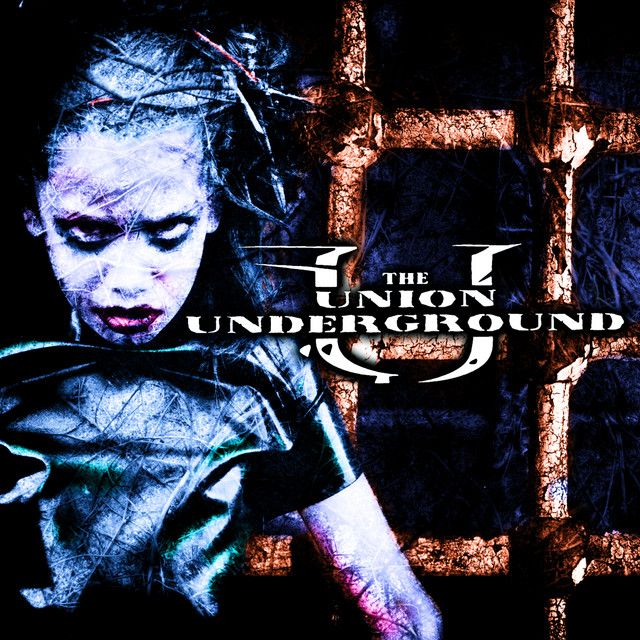
41. The Union Underground
An Education In Rebellion
[Columbia; 2000]
"I'll bet my bottom dollar this band will be around 10 years from now," crowed Columbia/Portrait Records A&R John David Kalodner to Hits Magazine in September 2000, "Which is more than I can say for you." While not exactly a 'Led Zeppelin' level musical prediction blunder, neither the band in question nor the record label they were signed to would even make it to the halfway mark (Hits Magazine, meanwhile, still going strong). But bet his bottom dollar, John David did. The Union Underground and their debut An Education in Rebellion, were amongst the most extravagantly financed nu-metal bands in an era full of them. Like Columbia label mates Stereomud; The Union Underground were thrust into an immediate 'go big or go home' situation and assured they weren’t about to go home. Thus, Rebellion is flush with unearned rockstar confidence, the kind that grated at the time but now feels pleasurably inhabitable. Arriving at the dawn of the decade after grunge exploded much of An Education in Rebellion delights in dancing on its grave. The opening lyric (“Load up on your friends, man”) manages to misquote the first two lines of “Smells Like Teen Spirit” at once. Dime store Alice in Chains harmonies and cliches about needles and damage done abound but, unlike the era’s other shameless Kurt Kapitalists, every track is upbeat, punchy, to the point with great choruses and sticky hooks. The only song that even threatens to become a ballad (“Revolution Man”) kicks into gear right at the first verse. An Education in Rebellion never wallows, rarely whines, and is even optimistic at times (“Bitterman” is specifically about not being a bitter man). Hell, opening track “Drivel” boogies, a feature that few - if any - other nu-metal songs can claim. As The Union Underground’s only album to date, An Education in Rebellion demarks a time when nu-glam-grunge could have been a thing had it not drowned in those boomtown years when every label was trying to launch their own nu-metal act. — H.K.
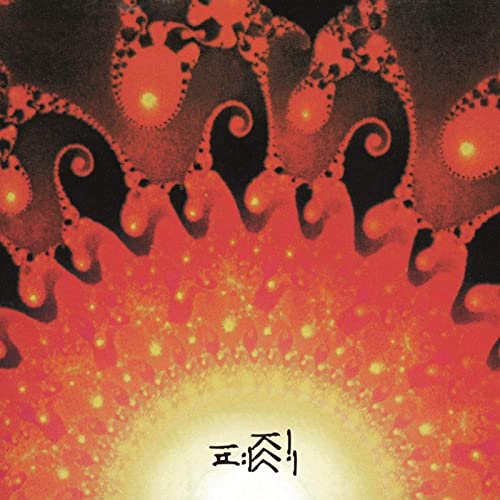
40. Seo Taiji
Ultramania
[Bando; 2000]
An impossibly young man sprints through an airport as hundreds of fans pursue him. Girls are reduced to tears as he takes the stage at a massive arena. Pyrotechnics explode. The crowd shrieks as he launches into… nu-metal? It’s 2000 and Seo Taiji is South Korea’s biggest pop star. Following the end of pioneering K-pop idol group Seo Taiji and Boys, Seo Taiji (the titular 'boy') immersed himself in guitar music. Following an adept alternative rock debut he created Ultramania, an album of straight-up balls-to-the-walls nu-metal. This pivot has no parallel in popular music. Imagine Jordan Knight departing the New Kids on the Block to make funk metal and pulling it off. Tracks like “Orange” and “Ultramania” are all mild youth rebellion anthems but jacked up on a nu-metal explosion that sounds like the Ross Robinson/Max Martin team-up of your dreams (or nightmares). The album’s two '02 Remake' tracks are the clearest examples of how K-pop became K-metal. “Come Back Home” trades the original’s dusty hip-hop beats for a true Korn makeover replete with guitar squeals and clattering bass while “For You” is transformed from a drippy love ballad into an uptempo nu-pop-punk sprint. And for helpful time-and-place illustration, Ultramania comes with two live tracks that feature an audience of young girls screaming with an intensity more akin to The Beatles at Shea Stadium than any of the hulked-out grunting you’d hear on an average night of the Family Values Tour. — H.K.

39. Carajo
Carajo
[Universal; 2002]
Carajo is alive with a passion for rebellion. Each of its 12 tracks is a fist of triumph punched high in the air. Opener “Resistiendo con ideas” goes “Shouted love in the form of a song! Invent our place and express ourselves!” Another line, from the anthemic “Sacate la Mierda”: “The economy stole our lives [...] And how hard it is to keep hope when food is not enough!” A rare nu-metal power trio; Marcelo 'Corvata' Corvalán sings with the intensity of a militia member passing out rifles on the front lines while punctuating tracks with his joyful shouts and whoops. Guitarist Hernán "Tery" Langer puts on a masterclass of nu-metal riffage (peep “Conquistador”) and drummer Andrés "Andy" Vilanova keeps things bouncy. The result is righteously heavy. In its final seconds “Sacate la Mierda” deploys a brutal downward key-change because, goddammit, A# was just not going hard enough. — H.K.

38. My Ticket Home
Strangers Only
[Rise; 2013]
My Ticket Home often gives the impression that there are more than four musicians in the group. The metalcore styles of debut To Create a Cure were formidable but conventional. Strangers Only needs no such excuse. It is a sickeningly powerful eclipse of sanity by songwriters at their most passionate, way ahead of anyone else doing even an ironic reevaluation of nu-metal in 2013. Lead vocalist Nick Giumenti was made for howling over a wildfire of shrill instrumentation while backing vocalist Derek Blevins' more conventional cleans punctuate songs like “Keep Alone” with sturdy hooks. The album concludes just as bloodthirsty as it starts, with “Kick Rocks” - “Scream until it’s all gone / Bullshit poser, who are you?” inquires the anamorphic voice of distorted hatred. Strangers Only offers a serene catharsis rarely matched by its peers. — balloonxm and H.K.
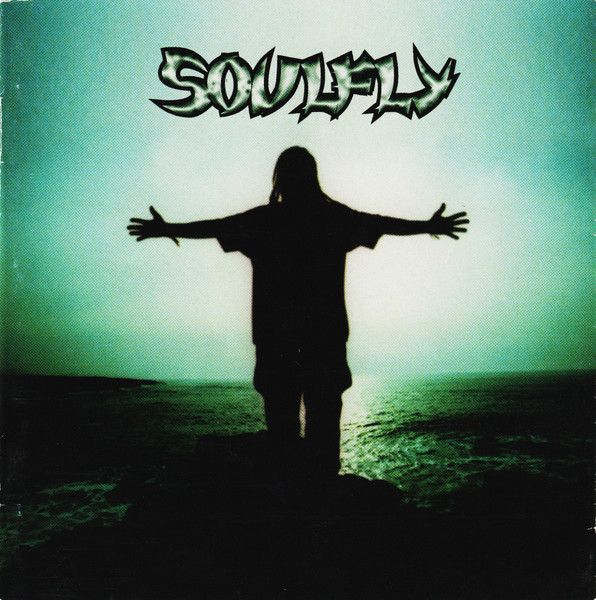
37. Soulfly
Soulfly
[Roadrunner; 1998]
After a decade with groove metal legends Sepultura singer Max Cavalera was suddenly unemployed, quitting his own band over managerial disputes. His debut album as Soulfly functions as both a finger to his old bandmates and a look to the future- a future as bright and open as the album cover. Across 70 unwieldy minutes, Cavalera succeeds at his stated goal to “find a better way,” coupling his distinctive tribal styling with a triumphant freedom displacing Sepultura’s intense lumber. Much of Soulfly chatters with jungle ambiance and distant drums but where on Roots they menaced, here they invite. Soulfly could have been a bitter slog, instead, it overflows with gratitude for Max’s buddies in Limp Bizkit, Deftones, and Fear Factory pitching in, and for the opportunity at a fresh start. — H.K.
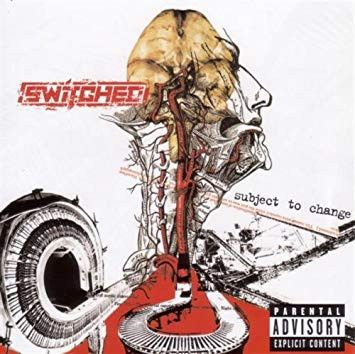
36. Sw1tched
Subject to Change
[Immortal; 2002]
For all their anti-pop posturing Slipknot had some incredible pop instincts. The sturm-und-drang of “Wait and Bleed,” “My Plague,” and “Left Behind” may have packed the mosh pit, but their million-dollar choruses are what sold plastic. Cleveland, Ohio’s Sw1tched must have noticed this when plotting their debut Subject to Change. Re-imagining Iowa as produced by Mutt Lange, Sw1tched excised the 7+ minute excursions and freaky-deeky SFX to make room for fat hooks and bone-rattling bounce riffs. Slipknot had three drummers? Sw1tched get it done with one, and when they compliment him with a single conga on “Spread” it’ll break your neck. — H.K.
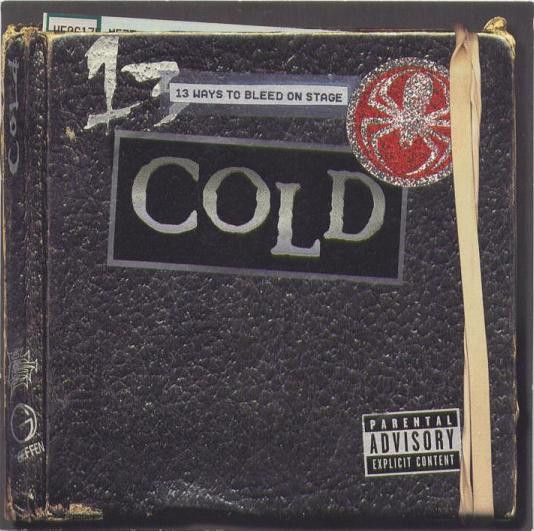
35. Cold
13 Ways to Bleed On Stage
[Flip Records; 2000]
'Leave me alone' is one of nu-metal’s all-time touchstones. The desire or demand to be rid of someone’s presence is a sentiment that has powered entire careers but if other nu-metal bands just wanted to be left alone, then Cold made music for people who got their wish and were surprised nobody came back to get them. Scooter Ward, one of the few post-grunge frontmen to find an interesting approach to the yarl, sings like a man with his head in his lap, hoping in equal measure that nobody bothers him and someone asks what’s wrong. Songs like “End of the World'' and “Sick of Man'' owe as much to Massive Attack as they do Ministry while “Just Got Wicked” and “Send In the Clowns'' remind that this band can rage as hard as they mope. — H.K.
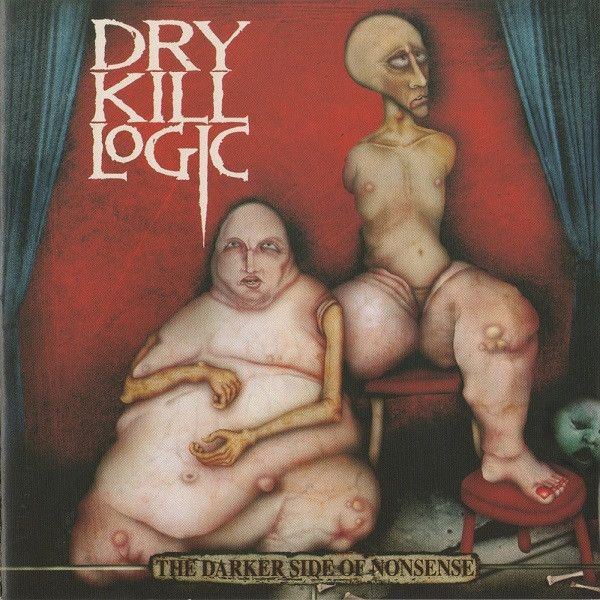
34. Dry Kill Logic
The Darker Side of Nonsense
[Roadrunner; 2001]
Following the smash success of Slipknot’s debut (and, to a regrettably greater extent, Nickelback’s) Roadrunner Records, flush with cash and influence, snapped up some truly excellent nu-metal bands, one of whom, Dry Kill Logic, found a fresh spin on the drop-tuned metal attack that was big at the time by twining it with a little wink. From the opening track “Nightmare” carving its chorus into a tree for you (“Me + You = Nightmare, I say”) to the prototypical weepy acoustic finale “Goodnight” resolving immediately to “Seb,” (sole lyric: "Seb get the fuck up, the fuck out.") That sense of humor is what keeps an album of such divorced guy energies (“I can see he’s a better man than me / What you want what you need”) from ever getting too bogged down. Helped along by a massive drum mix that showcases thick tom tom drums and a battering kick, The Darker Side of Nonsense goes harder and heavier than the vast number of bands in its very crowded lane. Sure, other nu-metal albums had their songs about the pain, the anger, the hurt, the hating but did any of them have the genius to interpolate a Spice Girls song while doing it? — H.K.
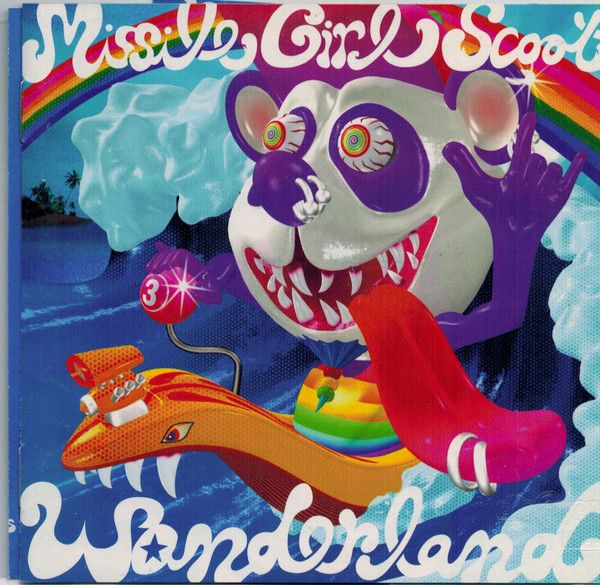
33. Missile Girl Scoot
Wanderland
[Toshiba EMI Ltd; 2001]
Go far enough down the nu-metal iceberg and you eventually start finding bands so obscure that they're not even on websites with twenty download buttons and enough sketchy coding that your own browser has to ask if you’re sure about this. Take Missile Girl Scoot. Unless you own a Japanese Spotify subscription you don’t know and can’t know about them (edit 04/25: until now). Forget Spotify, most of their music isn’t even on YouTube. They're simply not around. Far from the usual kind of avant garde that makes a band obscure, Missile Girl Scoot created nu-power-pop rapcore so bright and bubbly it demands to be shared. Wanderland, their magnum opus, dips and dives between fuzzed out nu-garage on “Get Back,” the playful taunting of “Don’t Rely On Me,” anime end credits balladry on “Everytime It Rains,” and a haunted, minimalist wander on “Thick Forest.” It shouldn’t work all on one album but it does, enough so that you’d swear this is a greatest hits. Rapper U-Ri has a Salt-N-Pepa-esque playfulness to her flow, while singer Junn’s melodies possess an ineffable cotton candy sweetness. Wanderland is never anything less than delightful and you won’t rest till it has delighted everyone you know. — H.K.
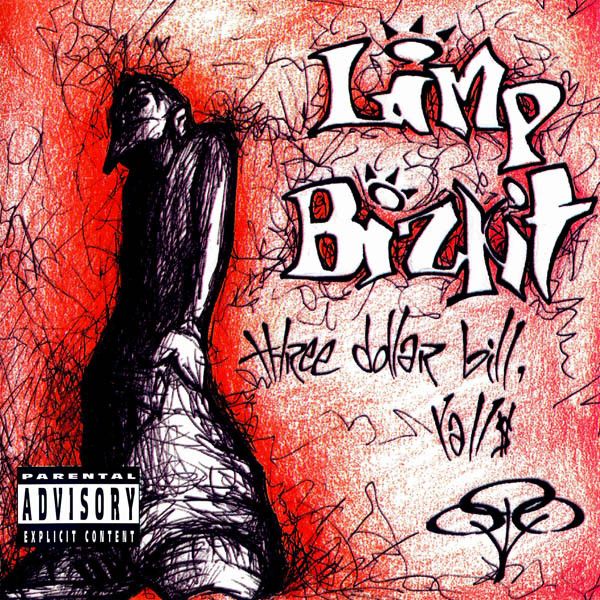
32. Limp Bizkit
Three Dollar Bill, Y’all
[Flip Records; 1997]
Before they’d become the poster boys for record label excess Limp Bizkit were lean, mean, and hungry as hell. Fred Durst, a hustler to the bone, had his band performing in parking lots, paying radio stations to play "Counterfeit" (with a disclaimer of course, no payola here), and recording an irresistibly disrespectful cover of 80s pop classic “Faith” that would, naturally, become their breakout hit. While never some Rakim-level MC, Durst remains an underrated rapper whose enthusiasm and love of the game take him places the conventionally skilled would never go. The flows and layered cadences of “Stuck” won’t be leaving your brain anytime soon while he attacks opener “Pollution” with ravenously infectious energy. Meanwhile, guitarist Wes Borland has a ball finding clever ways of deconstructing the fretboard of a 7-string guitar. The big bounce riff in “Counterfeit” is little more than a-tonal clunks and touch harmonics while skilled flowing taps lace “Sour” and “Stalemate” with dense thickets of clean melody. Together Durst and Borland strike a perfect yin-yang balance — if said yin-yang is tattooed on a drunk Florida Man’s left bicep. When it was time to hit the road in support of Three Dollar Bill, Y’all, the prospect of schlepping from one half-empty club to another wasn’t very appealing to Freddy D. Instead he launched Ladies Night In Cambodia. Why is it 'Ladies Night?' Chicks get in for free. The tour was a smash, “Faith” made it to MTV, and soon Three Dollar Bill Y’all would be platinum. Clever guy, that Fred Durst. — H.K.
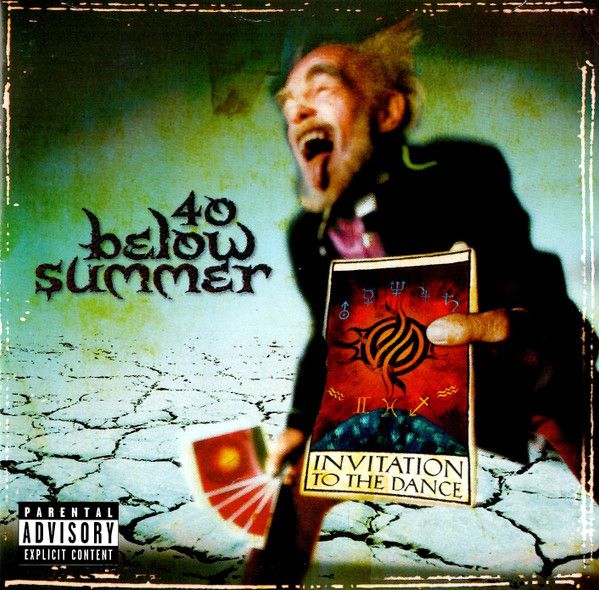
31. 40 Below Summer
Invitation to the Dance
[London-Sire Records Inc; 2001]
After a half-decade of straight jackets, face paint, masks, and murder fantasies the market was starting to turn on nu-metal’s wild side. Linkin Park and Papa Roach were both going multi-platinum singing about ordinary pressures and pain wearing outfits that could have come from any mall in America while Korn and Slipknot were forced to adapt or die. By this token 40 Below Summer were practically a throwback, singer Max Illidge's sputters and howls would have been at home anywhere in ‘95, but the songwriting was unmistakably of its time. Along with bands like Disturbed and Drowning Pool; 40 Below Summer were wedding pre-millennium nu-metal antics with modern rock radio-ready production but 40 Below’s careful craft set them apart. Their debut album, Invitation to the Dance, is all clever songwriting as tense middle-eights resolve to huge choruses, breakdowns veer into thrash, coming together on tracks like “Falling Down,” melding disparate elements into a side-breaking anthem. Less reliant on big bounce riffs, songs like “Rope” and “Electric Smile” have layered choruses that give way to wild fits of shrieking. The tension between chaos and control is cultivated, over and over, until the titanic swoon of “Drown” brings it all to a head. “Stop this life” Illige mutters, “I cannot stop this life” sounding for all the world like a man unsure what’s going to take him out first; his band or himself. — H.K.
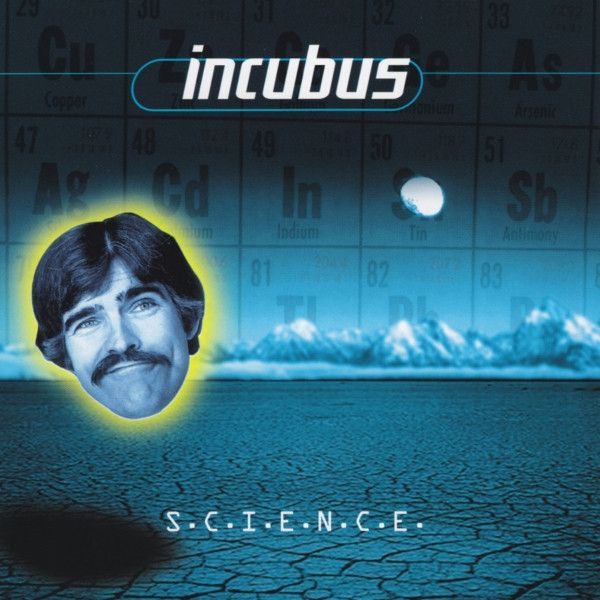
30. Incubus
S.C.I.E.N.C.E.
[Universal; 1997]
Brandon Boyd had all the answers. Witness, dreadlocked and blissed out somewhere in Europe, excited enough about his life that he has the nerve to imply his band’s combinations of turntables and guitars were confusing the masses. Several years after 311 first hired a full-time DJ and a year after Fred Durst poached DJ Lethal for Limp Bizkit, Boyd muses “We’re a little more difficult to understand at first.” If Incubus were ahead of anything it was selling nu-metal up the river. Just three short years after S.C.I.E.N.C.E. guitarist Mike Einziger would crow to Spin Magazine, "We just really turned our backs on it completely [...] [rap-metal] is a very horrible place to be. We don't want to be part of anyone's little bullshit scene." The shame of this was how effortlessly Incubus made this little bullshit scene their own. S.C.I.E.N.C.E. is a funky swirl of half-remembered cartoons, decayed educational film reels, and bonfire jam sessions assembled by those guys in high school who swore they did better on tests while high and actually did. You can practically see the band oohing and aahing at each other as Brandon Boyd explains the central metaphor of “A Certain Shade of Green” or giggling for hours looping “Magic Medicine”s samples. It should grate but it comes together with tight, dedicated musicianship and the wonder of inspiration. Incubus' S.C.I.E.N.C.E. is the shock of throwing everything at the wall and watching it all stick. — H.K.
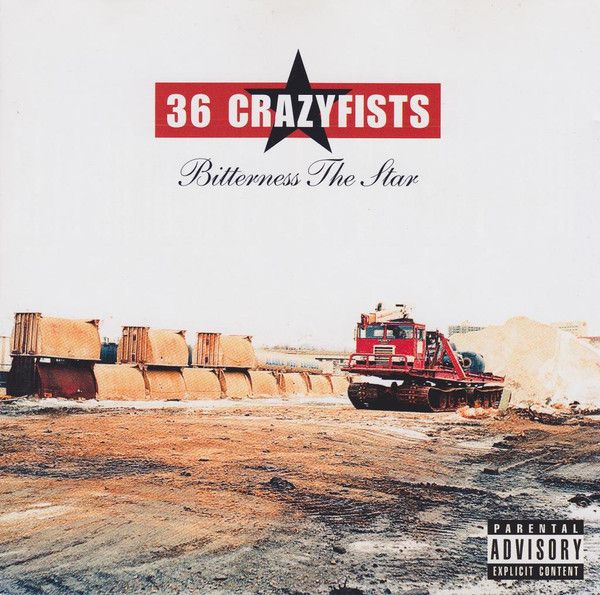
29. 36 Crazyfists
Bitterness the Star
[Roadrunner; 2002]
Post-hardcore’s relationship to nu-metal can be described as, at best, strained and, at worst, quite hostile. The two genres shared elbow room in the late 90s and, during the early 00s, started jockeying for position as record labels wondering which would be the new outlet of choice for angered teens signed bands like At the Drive In, Thursday, Blindside, and Alexisonfire. Refer to any of those as nu-metal and expect to get flamed by aging LiveJournal survivors but stand firm for Anchorage, Alaska’s own 36 Crazyfists. Clearly post-hardcore in many respects (lots of screamy yelling with emo breakdowns) but even more nu-metal in others (low, stringy bass sound; drop-tuned guitars; bounce riffs) their debut album Bitterness the Star is so packed with consistently excellent emoting it plays more like a greatest hits than a proper album. Maybe if Ross Robinson had discovered 36 Crazyfists instead of Glassjaw he could have saved “Adidas rock” instead of destroyed it. — H.K.
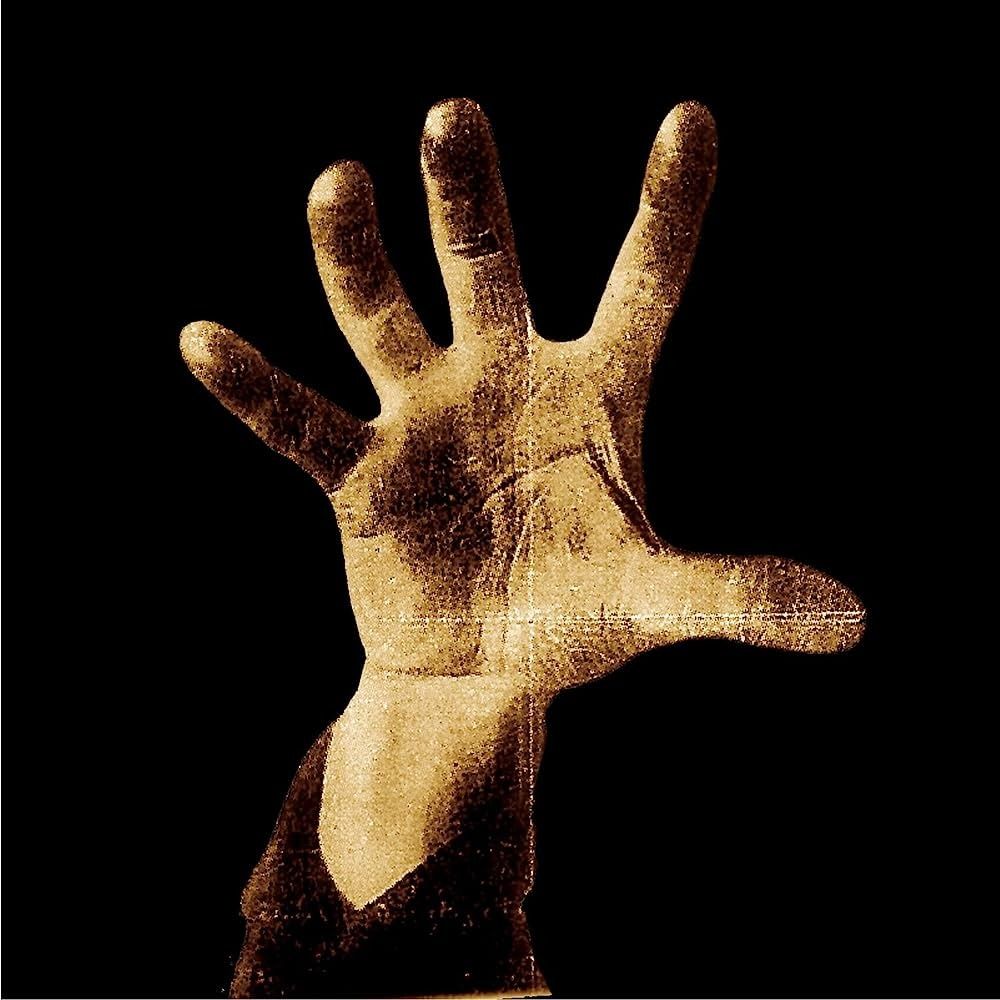
28. System of a Down
System of a Down
[American Recordings; 1998]
Like mischievous imps dancing around our popular culture, System of a Down ingested the sociopolitical landscape and returned it as an absurdist tragicomedy. When “Sugar” breaks down into a jazzy snap or Serj Tankian shoots his voice to a mocking falsetto on “DDevil” (“Stupid people do stupid things smart people outsmart them / Then themselves! Then themselves!”) It feels like being laughed at by someone and laughing with them at the same time. “War?” describes a world where mass murder is ordained by God, building to a haunting refrain “We don’t speak anymore of war” that circles like klaxons sounding in the dark. When System does come down to earth with us on “Spiders'' it is to mourn, hushed and reverent, with a lonesome cry: “Before you know I will be waiting, all awake.” — H.K.

27. Sevendust
Home
[TVT Records; 1999]
A strange thing happened during Sevendust’s star-making set at the infamous Woodstock 99 – a rainbow. Witnessing this awe-inspiring display of natural phenomena, the band’s singer, Lajon Witherspoon, asks the massive sweaty brawling moshing crowd to look at the rainbow. Actually, he demands it. “Look at that fuckin’ rainbow y’all!” Witherspoon whoops with glee, “Everyone look at the rainbow!!” It was a perfect moment – and maybe the greatest pit call of all time – for a band who crafted battle cries for the bench press on record and displayed a hard-won easygoing generosity in person. Their peak, 1999’s Home, followed that triumphant Woodstock set with the same confidence a heavy metal band needs to demand a legendarily violent crowd bear witness to a rainbow. With a voice like (the singer formerly known as) Terence Trent D’Arby on Ozzfest, Witherspoon sings with a radiant passion buttressed by backing vocalist Clint Lowrey’s post-grunge conviction and drummer Morgan Rose’s adrenaline-spiked outbursts. It’s an incredibly underrated and effective triple vocal attack. When they bounce off each other on airtight bangers like “Reconnect” and “Waffle” you can hear the brotherhood in their voices. So open were their hearts that when Skunk Anansie’s Skin and Deftones’ Chino Moreno make guest appearances, Sevendust is happy to cede the spotlight to them and gets two of their best ever songs in return. — H.K.
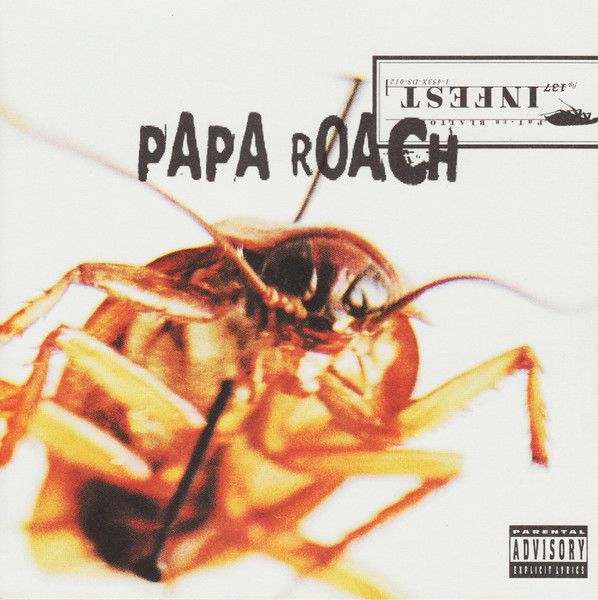
26. Papa Roach
Infest
[Dreamworks; 2000]
The first lyric of the first verse on Papa Roach’s major label debut Infest is “My name’s Coby Dick! Mr. Dick if you’re nasty!” A bizarre moment on multiple fronts— first, Coby Dick is not lead singer Jacoby Shaddix’s name and second Infest is not an album that asks you to be nasty. It asks if you’re traumatized, reassures you you’re not alone and begs you to hold tight till the next chorus. Bolstered by an undeniable lead single and a friendly MTV, Papa Roach were a nu-metal breakout right as that phenomenon was becoming scarce. The plainspoken messages of songs like “Last Resort” and “Broken Home” are about finding the shortest path to catharsis and taking it. Shaddix’s rap delivery is never less than right up in your face, begging you to get your shit together and live to see another day. An unstoppable side-A secedes to a near conceptual side-B, wracked with the nervy paranoia of their hometown Vacaville’s empty lots and baked pavements. Songs like “Revenge” and “Snakes” are stories of youthful recklessness wreaking real consequences while “Thrown Away” and “Binge” are the downward spiral reaching bottom. But before the album can end disparagingly, Papa Roach pull themselves to their feet with hopeful reggae closer “Tightrope.” And sure, its 'Ras Trent with a wallet chain' skank is an overreach but they reach for it anyway, with an open heart and passionate eyes ready to help you scream your way to safety again. — H.K.
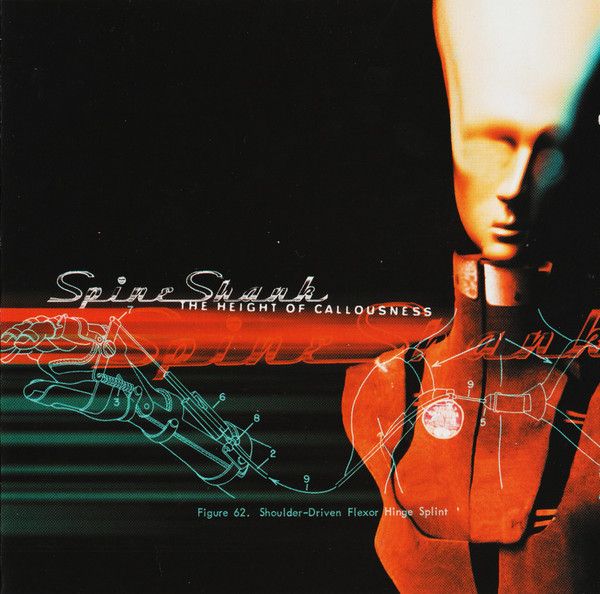
25. Spineshank
The Height of Callousness
[Roadrunner; 2000]
If adolescence is about drilling big gobs of gnarled hormonal muck from your chest and throwing them at whoever is around, then discovering Spineshank’s The Height of Callousness during that tender era is like someone handing you an industrial strength boring machine. Imagine a remake of Keanu Reeves runaway bus thriller Speed but it’s Nine Inch Nails at Woodstock ‘94 and if the crowd stops moshing the stage explodes. Johnny Santos screams, pants, fumes, and howls like he’s speedrunning puberty. His opening roar, “COME AHHHHHHN!” sounds both like an invitation to get the fuck up and a personal plea to get this shit over with. Songs like “Synthetic” and “New Disease'' are hard enough to make Fear Factory faint and hooky enough to make Roadrunner cut checks while “Asthmatic” could have been the opening credits to the greatest action movie Vin Diesel ever made. Yet for all its whip crack and thunder The Height of Callousness is about confronting the things you don’t like about your environment and aspiring to change. Santos dispenses with poetry in favor of just hashing shit out; “The contradictions you live / Have canceled out the truth / The desperation you show / Is just the focal point,” goes a particularly straightforward stanza from “Malnutrition.” Eventually becoming a good man means understanding the quality of being honest and having strong moral principles. Asserting your moral righteousness. Being whole and undivided. But sometimes you’ve gotta tear all that shit down and scream “Fuck integrity!” When you do, The Height of Callousness will be there. — H.K.
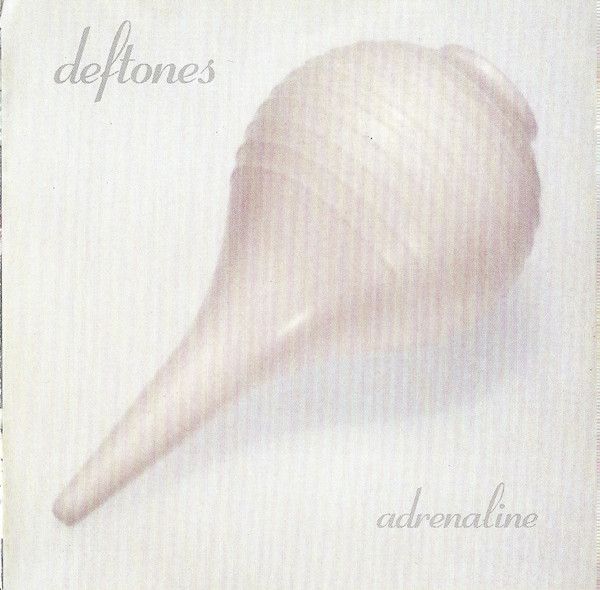
24. Deftones
Adrenaline
[Maverick; 1995]
If Deftones are the Radiohead of metal then Adrenaline is their Pablo Honey— the footnote debut preceding the true classics. At a glance this makes sense; far from the polished efforts to follow, Adrenaline is a weird, squirly little record. The vocals, recorded live into one handheld Shur microphone, are fresh scrapes on bare skin. Moreno would rapidly become one of nu-metal’s most distinct melodists but here he’s feeling his way forward, stumbling through streams of consciousness, mutters, raps, and painful shrieks. Yet, it’s never less than a thrill to hear him clawing his way toward his own distinct style in real-time. You’re in the rehearsal room right with them, feeling the passion of knowing they're onto something good and the frustration of not being there yet. And while its songs aren’t making any “Outer Space” YouTube compilations anytime soon, Adrenaline has its own distinct atmosphere. Heat waves radiate off the California malaise of “Bored” while twin ragers “Root” and “Engine No. 9” are sweaty basement shows, bodies thrown against bodies. Then there’s closer “Fist,” pointing the way forward. A near wordless, formless jam it proceeds with quiet post-punk guitar touches, cultivating two minutes of patient build before Moreno unleashes a melodic wail that slices through the speakers. It’s a breath-catching moment, one that portends all greatness to come. Deftones would ascend to higher heights but the exposed nerve of Adrenaline is unrepeatable and essential. — H.K.
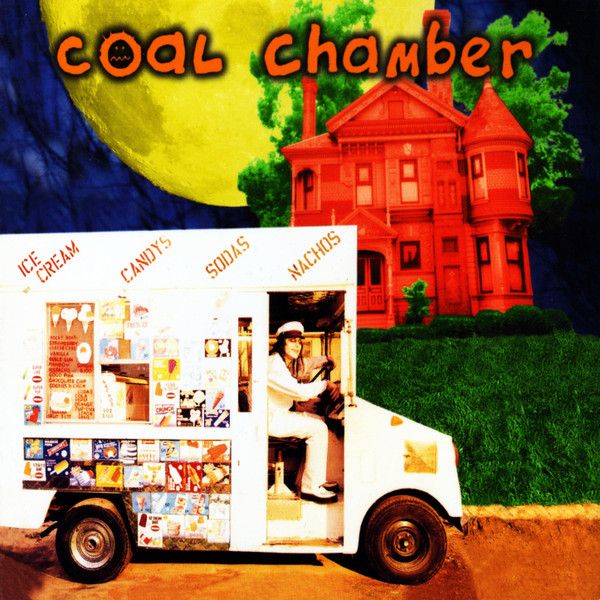
23. Coal Chamber
Coal Chamber
[Roadrunner; 1997]
Coal Chamber is a groove. Not lyrics, not songwriting, certainly not melody - just groove. Chiefly, whatever drummer Mike Cox could summon and the rest of the band could get on board with. The guitars rarely move beyond the first three frets, the bass is a weedy blurt, the singer a grunting maniac. Coal Chamber is nu-metal reduced to little more than bone and broth. So why? What makes this a classic? Well, the aforementioned groove is deep. Deep enough that vocalist Dez Fafara understood his job was more hypeman than frontman. His lyrics are toasts (“Me loco!” “Big truck!” “So hypnotic!”). Sussing for meaning would be like parsing Mike & Ike candies for nutrition. Released in 1997, Coal Chamber headed up nu-metal’s glammier LA scene. The band did their part, dressing like Halloween store managers fired for boosting merchandise, and made themselves mainstays of metal mags in the process. The hardscrabble success of Coal Chamber would clear the lane for similar Whisky A-Go-Go workhorses like Static-X, System of a Down, and Orgy. Another wing of the nu-metal movement was open for business. — H.K.
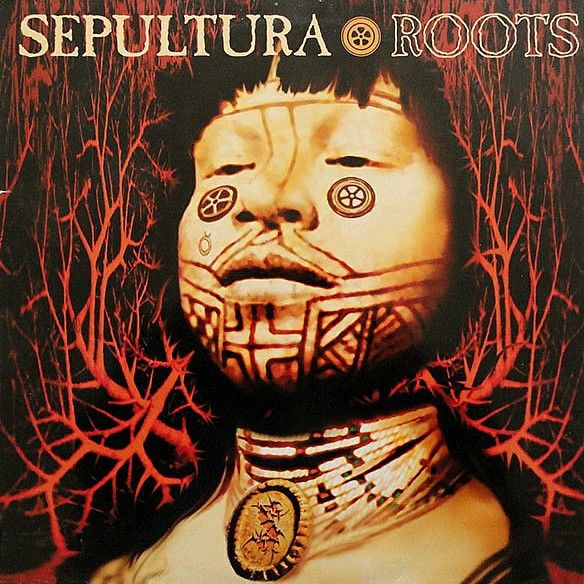
22. Sepultura
Roots
[Roadrunner; 1996]
With 1996’s Roots Sepultura accomplished what Anthrax, Tool, Nine Inch Nails, Faith No More, Rage Against the Machine, and Ministry either couldn’t or wouldn’t; make the leap from being proto-nu metal to nu-metal. 1993’s Refuse/Resist was almost there, the riffs thrashed less and bounced more, groovy enough that they started to lift up instead of beat down, while the solos got simpler and more 'wah'-pedaled. Following the success of Refuse/Resist, Sepultura decamped to Brazil with nu-metal messiah producer Ross Robinson in tow for guidance. There they found drums. Drums so resonate they dedicate an entire 13 minutes (“Canyon Jam”) to them sounding off into the night like tracer fire and it somehow feels necessary, a finale of quiet reflection to conclude an album that is otherwise exhilaratingly brutal. Anthems like “Roots Bloody Roots” and “Attitude” are dangerously powerful, with singer Max Cavalera’s war cries either compelling you to topple the government or push your squat max at the gym. This sense of adventure, of bravery, made Sepultura into something like a global phenomenon, attracting admirers from all tiers of the music scene. Witness a young Björk, looking like she’s about to explode with excitement at the prospect of catching their set at a festival in Belgium. “I really love their energy,” she gushes, “It seems a very honest energy.” — H.K.
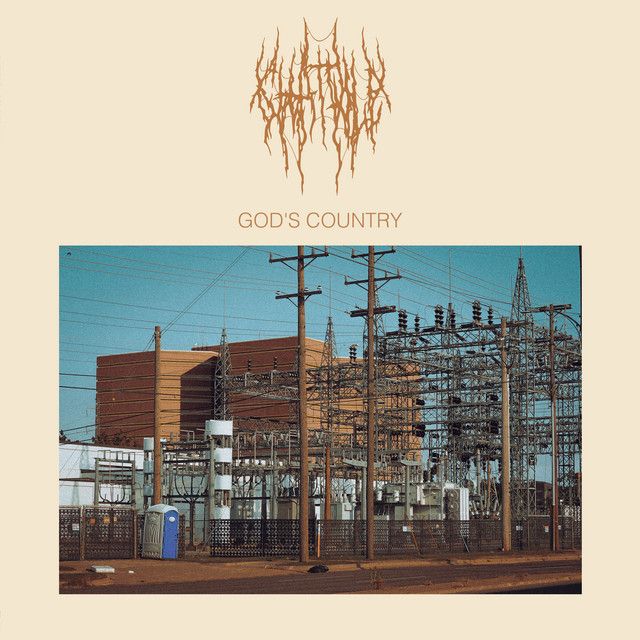
21. Chat Pile
God's Country
[The Flenser; 2022]
God’s Country resonated because it was heavy, yes. Because it brought back nu-metal dynamics and comprehensible riffing to a genre lost in the wilderness of shiny drum presets and too-polished vocals, for sure. But it also resonated because it mines humor from total darkness. One of nu-metal’s greatest strengths was in its biggest acts embracing the silliness. They wore clown makeup, gave albums disgusting titles, staged battle raps on their biggest records, and blew boats up on MTV. Chat Pile’s God’s Country isn’t silly per se, but it does manage enough humor to keep itself out of a doom spiral. There are a million sober, despaired ways to write about the perfectly solvable and hopelessly persistent American homeless epidemic, just plainly asking “Why do people have to live outside?” is better. “grimace_smoking_weed.jpeg” - which imagines something as miraculous as Korn covering Slint’s “Good Morning Captain” - is a trip through a horrifying psychedelic experience that you have to spin as comedy later to save face. “Purple man! / Stop coming into my room! / Stop looking at things! / That aren't meant for you!” God’s Country is bleak; terrifying; kinda of funny; and, no matter how much they protest to the contrary, nu-metal. — H.K.
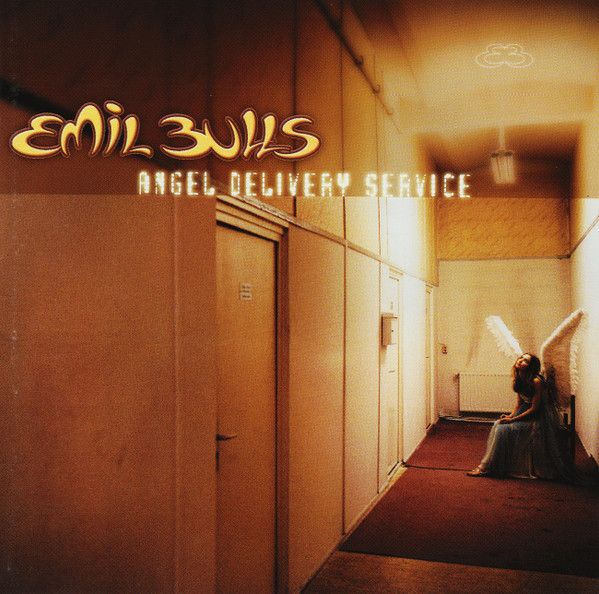
20. Emil Bulls
Angel Delivery Service
[Island; 2001]
There’s a reason people grow up embarrassed about their time as a nu-metal fan, this is embarrassing stuff. Nu-metal has an occasionally deserved reputation for being misogynistic; petty men making petty songs about being denied by the women they mistreat. However, on a musical level, it can be quite honest. Nu-metal's misogyny is shrieked and wailed in adolescent temper tantrums barely disguised by melodic or poetic remove. Though this approach may not completely absolve songs like “Nookie” or “Down with the Sickness” of their crimes it does go a ways at justifying their existence (and enjoyment.) Hailing from Munich, Germany; Emil Bulls’ major label debut, Angel Delivery Service, is one of the most misogynist albums the genre ever produced. Every one of its 13 tracks is dedicated, at least in part, to seething at some poor woman who invoked the wrath of lead singer Christoph Van Freydorf, who goes by - I shit you not - 'Christ' for short. When he implores a demon girl to “shake your ass for me” on “Smells Like Rock n Roll” or brags about giving a “queen” with “perky breasts” the cold shoulder on “Chickeria” you’ll be in awe at the obliviousness on display. Does 'Christ' really not understand the common denominator here?
Like Weezer’s incel-opus Pinkerton before it, Angel Delivery Service runs cover for a maladjusted white man’s screed at a world of women that have the nerve to not want to fuck him concealed by faux sensitivity and difficult-to-deny pop instincts. But where Pinkerton had music theory chops and sky scraping guitar solos, Angel Delivery Service has bounce riffs and turntables. A powerful triple guitar attack and firmly thwacked bass guitar backed up by a drum kit made of trash cans propel Angel Delivery Serivice’s most loathsome moments heavenward on irresistible breakdowns and choruses. When the aforementioned and intensely problematic “Smells Like Rock ‘n Roll” or “Chickeria” drop into primally satisfying bounce riffs you’ll beg god above to forgive your rhythmically banging head.
While Pinkerton’s sale was in its sincerity, Christoph van Freydorf takes the opposite tack. There are enough nudges and nods to self-awareness across Angel Delivery Service you have to wonder if Freydorf is in on his own joke. At the end of the sickeningly sexist “Style School” he sings “You little creep, it's not good to be like me” A fourth wall poke at you the listener for partaking in such obvious filth, signing off with an irresistible wink: “Furthermore I’m just a singer in this band.” During anti-music industry screed “Hi, It’s Me Christ” (that nickname again) he calls out “Drawing board suckers / German hip hop wimps / And company bastards” while making sure to exempt his own record company (“Of course my label Island not included”) from the airing of grievances. Power ballad “Monogamy” has the near refreshing audacity to just declare the obvious; Christoph would like to fuck other people now. Over a Diane Warren-level string section Christ moans, “It's about time to face the facts, our relationship sucks [...] After six years of sex with you I'm blurred. Oh, even a beauty can bore.”
Compelling psychodrama “Resurrected” finds Christ finally fulfilling his nick-namesake, retreating to have a chat with himself, a “dinner tonight” with his id, ego, and superego. While there he does some soul searching and decides it’s time to become even worse. “I see myself giggling with this chick while me gets drunk with I.” The man is splitting himself into Freud's psychoanalytic theory and taking the opportunity to flirt with himself. So, after a desperate Saturday night rave-up (“Tomorrow I’ll Be Back Home”) and a rock bottom hangover (“Wheels of Steel,”) our anti-hero reaches his inevitable dark night of the soul with finale “Quiet Night.” A hollow core of rinky drum machines and acoustic guitar accompany Christoph twisting and turning in his sheets, stumbling towards an epiphany. “I’ve had enough now” Yes… “Tired of sex'' Go on... “Tired of alcohol” Getting there... “I’ve gotta get myself re-arranged” So close! As “Quiet Night” whirrs to a stop you might have convinced yourself that Christ was finally going to grow up and leave such childish things behind but…
Just when you think the curtain’s down, the stage is clear, and the lights are up— encore. The album’s true closer is nothing less than an 80s pop cover. And not just any old 80s pop cover but that unrequited love classic “Take On Me” by A-Ha. “Today isn’t my daye-eee to find you shying away,” chides Christ, “I’ll be coming for your love anyway.” You can practically hear the smirk on his face. How easy it must have been to get away with it all. — H.K.
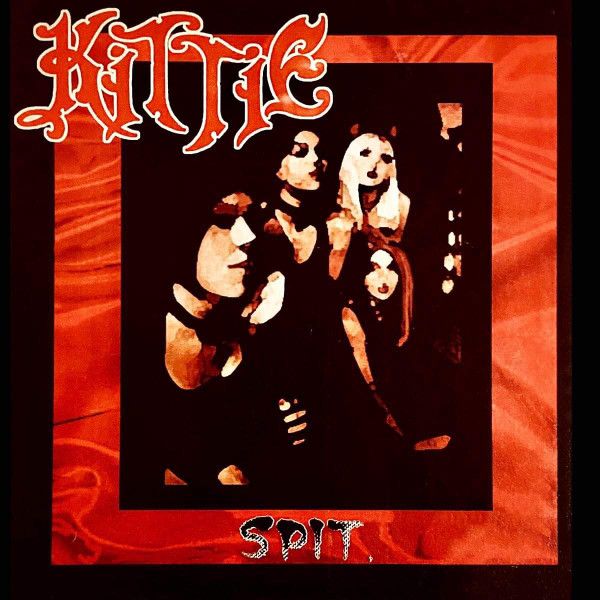
19. Kittie
Spit
[Artemis; 1999]
Kittie were Bikini Kill by way of The Craft, a real-life version of the Hex Girls from Scooby-Doo. They seemed to strike the nu-metal scene in 2000 with a sound so untrammeled all anyone could do was claim them to be the anti-Britney and move on. Producer GGGarth Richardson, no stranger to getting tight takes out of his bands, recognized that Kittie's appeal was in their raw passion. Instead of the Protool’d to perfection sound that was becoming dominant in nu-metal at the turn of the century, Spit has a first-take immediacy that will make you want to jump up and start your own band. The playing is loose and the recording is rugged in a way that summons originators like Adrenaline or Korn’s self-titled except where those records were thrashing about to define nu-metal, Spit is the product of four girls reverse engineering what made those early nu-metal releases so special. In this sense, Spit is the first 2nd wave nu-metal album. Where their forebears cited Faith No More and Ministry as influences, Kittie were fans of other nu-metal bands, eagerly embracing the enthusiastic amateurism of their predecessors while striking out on their own lyrically.
While their compatriots had to grapple with the pain inside, Kittie had to contend with the pain outside. “What do you see in me? / I can't go out at night / Answer me” fumes Lander on “Raven.” The chorus, “Get away from me! Stay the fuck away from me!” could have come from any album on this list yet here the raw physical threat, the danger of being a teenage girl in a world of lecherous men, is unmistakable. “Choke” is even more straightforward as Lander and guitarist Fallon Bowman team up to directly call out an aspiring pedophilic creep ("There's only one word that describes you / and that's 'hypocrite'") Morgan Lander - an outspoken and prodigious leftist even then - takes a song like “Paperdoll,” which would be another tongue click at a shallow female in the hands of an all-male group, and instead wields it as a pained statement of empathy as she watches another woman fall to patriarchal pressures. Lander wrote the lyrics to the bruisingly literal “Do You Think I’m A Whore?” when she was only in her late teen years, already feeling it necessary to attempt some kind of reckoning with those that forced the titular question into her brain.
Friendship is where Kittie finds their shelter. Their 2001 home movie, Spit in Your Eye, is a document of how close these four were on the road together; playing pranks and gushing over each other in private interviews. It looks like a blast, one of the least dramatic rock docs ever made. Even in Spit’s darkest moments, that binding passion keeps things from ever getting dour. This is victory. No creep could keep them down or discourage them from following their dreams. No matter how many condescending interviews, gross comments, or scoffs from their aggro male peers they had to endure Spit is living proof that Kittie will have the last say. — H.K.

18. Mudvayne
L.D. 50
[Epic; 2000]
Every genre of metal that passed through the halls of nu was better for it. Consider prog; a deathly serious and complex genre known for a fascination with Fibonacci spirals, numeric code, and interminable album runtimes. Now consider L.D. 50; Mudvayne’s nu-prog odyssey. While L.D. 50 certainly is a lot of those things at times, its nu-metal DNA allows the music to stay loose and keeps it from ever collapsing into monotony. You want number patterns? The riffs on “Nothing to Gein” alternate four and five bars. This was determined, not for music theory reasons, but because they add up to nine, which is a lunar number, and serial killer Ed 'Gein' (get it?) performed his grave robbery at night. If this sounds like it wouldn’t make for a particularly good song, well… you’re just gonna have to hear it for yourself, words have finally failed me.
Nu-metal’s reputation as (mostly) unsexy music is more than earned across L.D. 50. If any fucking is going on to L.D. 50, it is of the biological variety, single-celled organisms consuming each other in the primordial stew. This is truly ugly music; a cacophony of disgusting howls and slimy moans issuing forth from Chad Gray. As his grunts and groans emerge from the intro and into the commencing cry of “Dig,” it is as if he’s birthing himself from his mother’s swollen egg sac. Whenever Gray breaks into an unmistakably Maynard-inspired croon it feels near parodic and never lasts, there’s another squeal or death rattle on its way.
If L.D. 50 does have a central element preventing it from fully flying up its own ass it’s Ryan Martine’s unfettered zeal for playing bass. In L.D. 50’s linear notes Martine thanks his parents for reminding him “that life is humorous and fun,” a succinct descriptor of his bass technique. Cover to cover Martine is a dervish of creative chord voicings, spindly runs, and near-parodic levels of slap. While the rest of the band charges forward, foaming at the mouth, Martine is slapping himself through the clouds. The runs on tracks like “Pharmaecopia” and “-1” trace circles, dip, dive and hover; granting levity to the gnashing and grinding within. It’s the kind of zest that makes a record as diabolical as L.D. 50 go down easy. At least, as easy as an album that goes this perversely hard possibly can. — H.K.
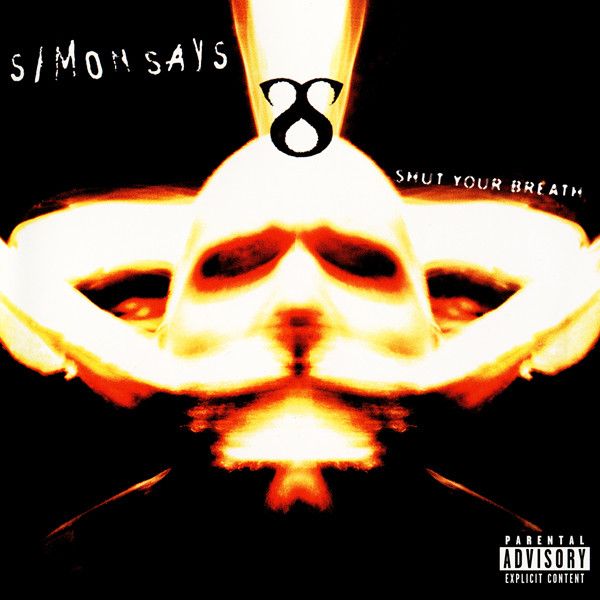
17. Simon Says
Shut Your Breath
[Hollywood; 2001]
Following the success of debut albums like Hybrid Theory, Infest, The Sickness, and Godsmack record labels lost sight of the long game. No more development deals, break big or hit the bricks. 40 Below Summer, Boy Hits Car, Element Eighty, Flaw, Apartment 26, Ultraspank, Stereomud all got dropped after promising debuts became less promising follow-ups. Even relatively successful bands like TRUSTCompany saw themselves out on the street after their sophomore record went bust. And that was if you even got to make album two (Pressure 4-5, Professional Murder Music, Injected, Twisted Method, Relative Ash, Deadlights, Factory 81, Crossbreed). Or, for that matter, if you got an album one (Dry Cell, Rumblefish). Sacramento, California four-piece Simon Says’ story follows. Signed in 1998 for a cool couple million their 1999 debut Jump Start bricked thanks to confused marketing and a sound that lacked a firm 'x factor.' But instead of attempting to summon the same pep for album two, something unique happened. Their sophomore album, 2001’s Shut Your Breath, is a commercial failure about how fucking infuriating it is to make a commercial failure.
Shut Your Breath is an album made by dedicated, impassioned strivers with can-do attitudes and eager spirits getting pressure washed off the side of the music industry like so much bilge and sea foam. Jump Start was a bouncy blast of optimistic energy, a band severing ties and looking to the future, this is that same band returning from the future shipwrecked and wraithlike. “I’ll make you an offer a million starving men could not refuse,” seethes Franks at the album's outset, “I’ll break down every fucking living cell in your body.” Sheets of despairing guitar feedback greet “Tourniquet” like sleep-deprived eyelids hoisting themselves open in front of a computer monitor. “Blister” summons up the heat needed to make a hit single but expends it burning with bitterness; “You’ll beg to be a part of it, you’ll cry when you can’t handle it” warn Franks, a lyric that could be Shut Your Breath’s inky heart.
Not that this struggle has exhausted the band. On the contrary, failure has rarely sounded so mighty. Drummer Mike Johnson in particular is simply staggering, turning in precision hits and fills with a wallop worthy of Dave Grohl or John Stanier. These creative impulses are so contradicting - how can an album this burnt out and defeated be so violently alive? - that Shut Your Breath should feel like a triumph, a miracle of perseverance, but it doesn’t. For all its accuracy, precision, pop instincts, and power Shut Your Breath is a failure. A failure so total you couldn't even stream it for decades, you'd have to find the CD or track down a zip file. But it is good, fuck it is so good. From “Tourniquet”: “Uninspired yet motivated, losing track of the days.” Here we are, locked up in this studio that we’re somehow paying for out of our advance, left for dead, out of ideas and well into the 11th hour, but we’re going to make the best album of our careers anyway because fuck you. The resonance it has with the modern age is palpable; this is the sound of the unpaid internship going nowhere, the dream gig working you to death, the degree paying for nothing except the salary of someone you’ll never meet. Shut Your Breath is the howl building in the back of the throats of everyone that did everything right and watched it all come out wrong. — H.K.
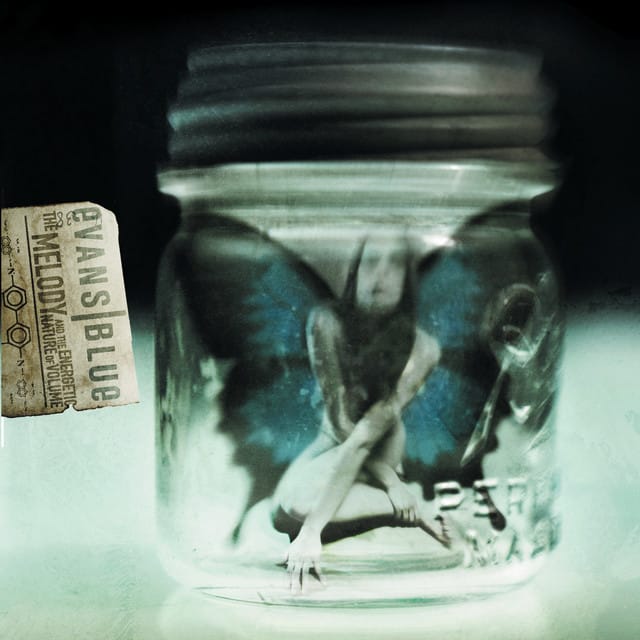
16. Evans Blue
The Melody And The Energetic Nature of Volume
[Hollywood; 2006]
She. She screams in silence. She says I don’t know if I’ve ever been good enough. She cries her life is like. She said I know what it’s like to be dead. All the things she said. Songs with ‘she’ must outnumber the ones with ‘he’ by a significant multiple. Modern rock rapscallions The 1975 have at least 20 examples. For your average male fronted rock act, placing words into the mouth of a generalized “she” is a way of inhabiting the female perspective without actually considering her body or mind. At best it’s a sincere effort towards sympathy, at worst it’s a cheap feint at depth.
‘She’ isn’t simply the first word on Evans Blue’s debut album The Melody and the Energetic Nature of Volume; it is the center, the focal point, the girl in the glass jar with butterfly wings. Every song is bearing down on her, clawing and scraping from under the door. Many post-Tool alternative metal albums are about the desire to possess, to own an unnamed ‘she,’ The Melody and the Energetic Nature of Volume is the first to really grapple with it. It is desire without much lust, little sex, plenty romance, a promise and a threat. It is, in this way, unique from the alternative metal and emo it shares space with. Lead singer Kevin Matisyn’s words are like extremely private journal entries by someone struggling with an unreciprocated desire; an urgent and desperate need to keep what’s inside, inside.
Never vague for vagary's sake, Matisyn’s lyrics are deep enough to assure more is going on beneath the surface but never so impenetrable that you’ll be digging out your Fibonacci Spiral to better understand it. What you will be doing, however, is pouring over the lyric sheet and the linear notes. You will watch interviews and you will scour Reddit threads to get what’s going on here. Other alternative metal tracks wield their misogyny like weapons but all across The Melody and the Energetic Nature of Volume, Matisyn sounds like he’s wrestling with dire thoughts and emotions he does not want to feel. The way he delivers the final “lifeeeee” on “Dark That Follows” it feels like he’s retching his guts out to cleanse himself of a bitter sickness. It’s hard to figure whether or not this constant ‘she’ is even real (from "Quote": 'We never talk,' unquote, and that's when I don't answer / Don't you dare ask why"), though on closing power/murder ballad “The Tease” (“Hold your hands into the sky / Pray for mercy”) you’ll hope the answer is no.
As nu metal cloaked within a radio ready hard rock disguise The Melody and The Energetic Nature Of Volume is excellent, as metatext it is brilliant. Unlike most nu metal records, as straightforward a genre as has ever existed, The Melody only gets deeper upon close inspection. What separates it from its chauvinistic peers is the presence of an actual female voice, both in the form of Tara MacLean, who offers vocal counterpoint on multiple tracks, and in the songwriting voice of Sarah McLachlan, whose “Possession” is revamped into a lusty hard-rock gallop with the perspective shifted from the stalked to the stalker. This female vocal accompaniment means ‘she’ is represented and taken seriously as a character. Matisyn never comes off as misogynist or hateful, merely someone wrestling with seriously dangerous impulses that frighten him. He strikes as the kind of person who could still be walked back from the brink if only someone would interfere. The uncomfortably intense poetics of lead single “Cold (But I’m Still Here)” (“I’m your martyr / Will you be my gangster?”) make more sense in the context of the record than in isolation, a pitiful man’s pitiful appeal to ‘her.’ “I’d love you til the day that I die” isn’t a new sentiment for alternative metal but few bands dare to be this sincere, this afraid, of it.
What truly lifts what would be a set of remarkable but familiar instrumentals into something epic is that lead vocalist Kevin Matisyn. Across all 11 of The Melody’s tracks Matisyn weeps, cries, screams, growls, whispers and belts with the do-or-die conviction of a grown man who has nothing left to lose. Not for one second does he simply sing with the arch, above-it-all sneer that Maynard James Keenan pioneered. Instead he thrashes about in the dirt, pathetic and mewling under the heat lamp of agony that comes from a vacant void where reciprocal love should be. He wails the titular phrase of “Stop and Say You Love Me" with the vulnerability of a child reaching out for their mother. On the astonishing “Beg” a tumble of distant observations becomes a chilling blurt of honesty on the chorus, a rushed confession dumped upon someone not likely to feel the same, before washing out to sea with an exhausted, devastating closing refrain of “For how long.”
But how is this nu metal?
Fair question. No turntables, no rapping, no silliness. How is this nu metal? We don’t have much in the way of contemporaries so we'll have to try and trace the lines through nu-metal’s boom years (1999 - 2001), last hurrah (2003), death (2004) and finally the release of this record (2006). We pick up the thread from Maynard’s successful attempt at contemporary competition with A Perfect Circle’s Mer de Noms to bands like Karnivool, Hurt, and Mudvayne who were alchemizing alternative metal seriousness with nu-metal bounce. Then, as we exit nu-metal’s peak we have bands like Breaking Benjamin, who recognized their labelmates Evans Blue were turning in something significant, and Three Days Grace mopping up what’s left into radio ready dynamics. While much of The Melody and The Energetic Nature of Volume is relatively standard alternative metal stylings, Evans Blue knows how to throw a twist, a turn that keeps you off guard. The bounce riff that erupts a minute fifty into “A Cross and a Girl Named Blessed” alone should be enough to stamp their passport to nu-metal valhalla, even in the absence of DJs or rapping, but beyond that who could have imagined Sarah McLachlan could riff this hard except a nu metal band? Maybe more poignantly though is that if we don't acclaim this album, who will?
This was it. The great artistic leap forward for mainstream modern alternative music. The kind bands like Blue October or 10 Years could only gesture at and nobody noticed. The Melody and the Energetic Nature of Volume peaked at 106 on the Billboard Albums Chart and sold around 200,000 copies domestically. Hollywood rushed a follow up record out the door not even a year later; the uneven but similarly bracing The Pursuit Begins When This Portrayal of Life Ends that, despite an initially higher chart position, sold far less than its predecessor. Ultimately, Evans Blue were too heavy for emo, too vulnerable for metal, and not dumb enough for radio rock. The group was dropped and Kevin Matisyn was fired. Evans Blue proceeded to hire the devastatingly bald Dan Chandler to take his place and lead the group into a brave new frontier as the most generic anguish rock band to possibly exist. Three albums later Evans Blue are, as of this writing, basically defunct.
Yet, The Melody and the Energetic Nature of Volume remains; one of a kind and desperately underrated. If the post-nu metal doldrums managed to produce at least one classic this is it. The Melody is a hand holding yours with an intensity that suggests a loose grip would throw them off the Earth completely. It is a leg bouncing up and down too rapidly. It’s the urgent truth loudly revealed at a crowded party. It is a heart beating too hard. It is a pair of eyes staring straight into yours, daring you to look away for even a second. It is the dark that follows. It is the promise. And the threat. — H.K.
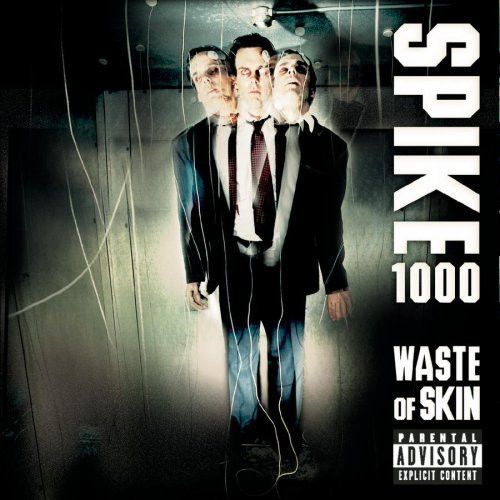
15. Spike 1000
Waste of Skin
[Columbia; 2001]
Bakersfield CA’s Spike 1000 formed in 1990 and released their major label debut album in 2001. That means, in the time it took them to get one album out they saw Bill Clinton elected, friendly neighbors Korn signed, Clinton reelected, Korn go multi-platinum, AND Bill Clinton’s impeachment, just for their major label debut album to drop in the same quarter as 9/11. In its wake the record industry and radio assumed the American appetite for heavy music would be demolished, so they all but abandoned it. This is how - at the peak of its popularity - Slipknot’s Pledge of Allegiance tour was postponed, System of a Down banned, Fred Durst on TV singing “Wish You Were Here“ (in a somber black cap of mourning), and bands like Spike 1000 buried.
Columbia Records certainly wasn’t going to try and break new heavy acts and thus, after a decade of chasing their moment, Spike 1000 gets wasted by a much bigger one. But that debut album, Waste of Skin, is not to be missed. Created by an already road-tested band, it has the confidence of a greatest hits and the urgency of a debut. A completely filler-free collection of anthems for the alive and pissed, Waste of Skin twists 60s blues rock and 90s riot grrrl around a bass sound stringy and writhing like a fish struggling to free itself from a hook. Shannon Harris' voice is a battle axe; cleaving the skulls of shitfaced manwhores in two with ease. Never succumbing to unhinged screaming, Harris instead traffics in cool confidence only raising her tone to make her point like she’s keeping cool for your sake not hers, espousing the type of feminism that erupts from having to deal with shitty men far more than you read about them. When she declares in “Manwhore,” “Let me tell you you’re fighting me for no good reason,” it distills so much solidarity down to a handful of stern words.
Strength is the operative word here. Spike 1000 sounds tough as nails from the nu-metal throwdown “Measure Me” to roaring power ballad “Take Me Over”. Only on finale “Prime” does the guard slip. A song about trying to impress bored A&Rs at label showcases (“I don’t wanna be as you hex me / she sits judging me”) the band falls away for the chorus; “Here- is my prime” delivered in a gasp, ten years of striving all to beg for a shot on a stage. Then the meekness falls away and it becomes a roar; “Here- Is my prime.” In that second you can hear Shannon Harris shed the moment and become the movement. The 90s, nu-metal, Columbia Records, first week sales- none of it exists or matters. Here is her prime. — H.K.
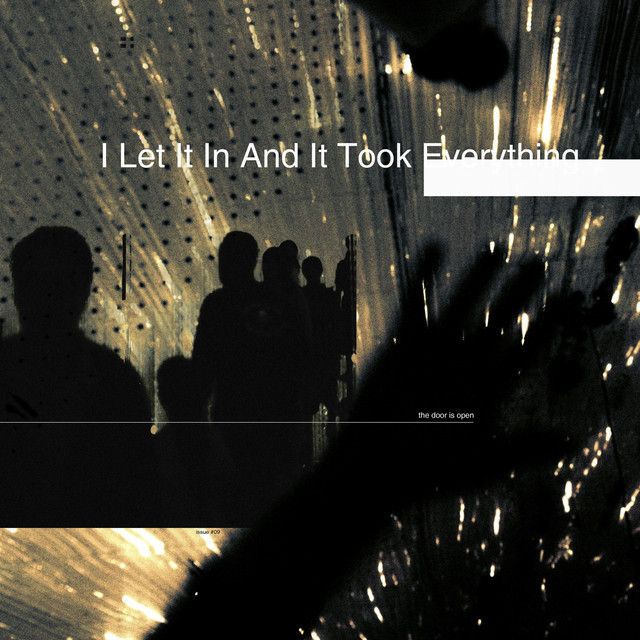
14. Loathe
I Let it In and it Took Everything
[SharpTone; 2020]
Stop me if you've heard this one before: "Deftones... but with shoegaze influences..."
It's a combination now so cliche as to have its own sub-sub-genre but when Loathe released I Let it In and it Took Everything in 2020 it felt like the advent of something brand new. But while its progeny would happily bite the album's White Pony worship, they were no match for its body rending heaviness.
With two lead vocalists at the helm, Kadeem France and Erik Bickerstaffe, Loathe consider both Mick Gordon's Doom soundtrack and the heavenly melody of The Smashing Pumpkins in equal esteem, flipping between the two like a lightswitch click. "Two Way Mirror" soars from a pile of ash and bone to streak across the sky like a comet, so undeniable even the man himself had to pay homage. "Screaming," arguably the albums crowning achievement, gallops and rocks with a seriously impressive drum beat and easy melodies that would be at home on a record by future tour mates Chevelle. "Heavy is the Head That Falls with the Weight of a Thousand Thoughts" imagines Deafheaven if they dropped some of their post-rock pretensions and just, like, went for it man. All of this inside a bass heavy production that sensations pulling open the doors of hell and broken up with majestic ambient interludes that feel as necessary as the songs proper.
I Let it In and It Took Everything was released on February 7th, 2020. One month later the entire world came to an end. The COVID-19 panic shuttered the doors of venues worldwide and locked us all up in our homes. Millions dead. Whenever they get around to making a documentary on the subject Loathe better be on the soundtrack. Songs like "New Faces in the Dark" and "Is it Really You?" became dream catchers above our lonely beds, listened to in solitude while frantically cleaning every inch of the house in fear of an invisible killer. Those early days of unity in the face of disaster vanished as we were left to fight with each other online and in the streets. We were at odds, one side calling for justice while the other wolfed down horse paste. I Let it In and It Took Everything became the shelter in place to hundreds of thousands all around the world, not just because it soothed the pain but because it vented it too. And when the world finally opened up again its influence spread even faster than the virus, with hundreds of bands following its lead into, and through, the darkness. — H.K.

13. Snot
Get Some
[Geffen; 1997]
Formed in 1995, Santa Barbara five piece Snot were harder, faster, funkier, funnier, and simply better than the rest. Their debut album - 1997’s Get Some - was to be the start of a grand career. Instead, it would prove a triumphant finale. Like Ric Flair putting on Jim Carrey’s Mask, lead singer Lynn Strait is a madcap microphone menace, rarely singing and instead roaring with a phlegmatic intensity so thick you can feel it hitting your ears. No power ballads here, this is pedal to the nu-metal; expertly splitting the difference between hardcore punk and Coal Chambered nu. The wildly funny “Deadfall” is literally a plot recap of the 1993 movie of the same name (Chorus: “Who sent ya? Sam-fuckin-Peckinpa!) “Mr. Brett” is a rapid-fire duet with Lunachick’s Theo Kogan, telling off some punk-rock lifer, a fun counterbalance to “I Jus Lie”s gross sendup of scumbag Southern California living.
Strait may drink and fuck like he’s 19 but the consequences of his late 20’s self are never far from his mind. On “The Box” he considers the years between his childhood dreams and his current attempt to “grab the brass ring.” The titular “Box” referring to the solitary confinement of prison where Strait draws parallels between a prisoner anticipating the electric chairs and the sum total of his own death march. “There got to be something else / The blame I place on myself,” he hollers, “Behind tired eyes / The demon's stir.” It’s a moment of tragic resonance, a man destined for his own accidental automotive electric chair writing about what it may mean to die abruptly.
Lynn Strait was in tragically good company when a car accident claimed his life in 1998 at the age of 29. But unlike other 90s musical martyrs, he left nothing behind that suggested this end was inevitable. Instead, the music Strait graced us with is so unbelievably, vividly, alive that there’s no way to grieve when it’s on. Strait wouldn't have wanted it that way either, he’d want you to live it up for him. Snot were one tiny flash in a pan but they were one of the spiciest flashes around. They wanted heaven, hell, and the handbasket our world was heading there in— Get Some is Snot curling its fingers around all three before fate snatched it away. — H.K.
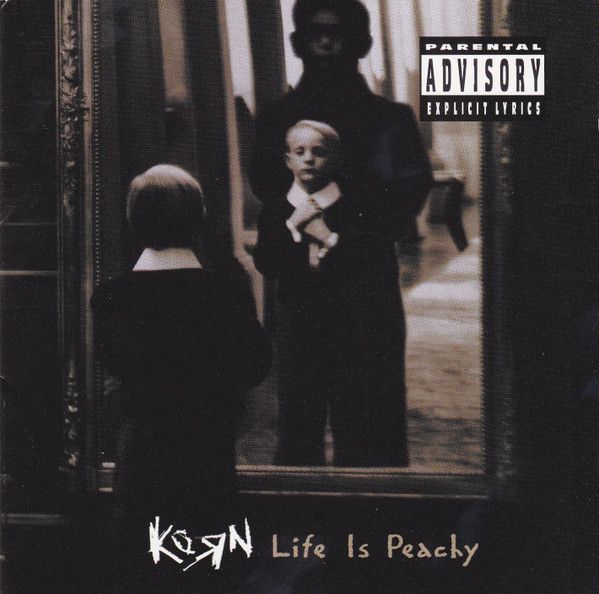
12. Korn
Life is Peachy
[Immortal; 1996]
In 1996 when Korn and Ross Robinson reunited at the Indigo Ranch to begin work on what would become Life is Peachy there was a positive energy in the air. No more determined amateurs, by 1996 Korn’s debut was speeding towards gold, contemporaries like Deftones and Coal Chamber had put out their debut albums, and dozens more of what would soon be known as nu-metal bands were getting snapped up by major labels in a sudden post-Cobain era. Korn were at the head of a massive breaking wave and decided to use that opportunity to get nice and weird with it.
What makes Life is Peachy Korn’s strongest full-length isn’t simply its consistency, clarity of sequencing, and straight-up viciousness; it’s how fun it is. Before the rest of their career on wax would be consumed by ‘the pain’ and/or ‘the hating,’ Life is Peachy finds the Bakersfield boys in a pretty damn good mood. Opening with 49 seconds of wordless scatting, goofing on War’s “Lowrider,” inviting Chino Moreno to cover Ice Cube's “Wicked.” Even when it doesn’t totally work (“K@#*%!”) it helps to balance the album’s more straightforward bangers. Which, by the way, are really really great.
“Good God” features one of Jonathan Davis’ best vocal performances, with a right up to the microphone intensity that sounds like he’s crawling through the speaker to scream in your face. When “Swallow” breaks down to an irresistible “Fuck yes” and then again for a quick “whoo,” it's thrilling, a Live Jonathan Davis Reaction to such impossibly heavy music. “A.D.I.D.A.S.” overcomes its decrepit subject matter through some shockingly developed pop instincts, its compact 02:34 runtime, and slick MTV breakthrough music video anticipating more straightforward pop nu-metal groups to come.
Home videos from the era showcase the band’s pre-fame-hangover good vibes; guzzling beers and riding each other’s energy up at Indigo Ranch. It’s almost painfully nostalgic in retrospect, five Bakersfield losers who just caught the world’s ear milling about on a California summer's day, standing between the uncertainty of their debut and the pressures of A-list fame to come. All of their dreams were coming true, nothing to do but chug some Coors Light and make the best music of their lives. — H.K.

11. Nothingface
Skeletons
[TVT; 2003]
IIlya Kamilsky’s poem We Lived Happily During the War concludes;
In the street of money in the city of money in the country of money, our great country of money, we (forgive us)
lived happily during the war.
Released the year we invaded Iraq, Nothingface’s Skeletons is about trying and failing to live a happy life in the great country of money, during the war. Skeletons is politics colliding with the personal; when the awareness of how the world works starts to break down your ability to function within it soundtracked by a vengeful nu-metal firestorm.
“Machinations" sets the scene: a protagonist in a mental hospital waiting to be lobotomized for the dark government. “Let’s start a new nightmare” whispers lead singer Matt Holt between guitars that stab like cuts in an Alfred Hitchcock thriller. “A patsy is useful, a window with a view.” Trapped in a place where you “read Catcher in the Rye one hundred and ten fucking times” before being “brainwashed and programmed.” In previous album Violence Holt was in perfect concerto with the rest of Nothingface in their pursuit of vengeance, here they turn on him, digging around his brain with jump scare guitars, middle-eights of tinkling cabaret bells, and a gentle threat; “Be patient we’ll be calling you.”
In 2003, you still had to work to stay informed, doomscrolling wasn’t a thing, nor were the social media platforms that made it so horribly possible, yet Matt Holt sounds like he’s been locked up in a basement swiping through whatever miserable tweets would have been coming out of the early Iraq War anyway. Whether raging at corporate rock radio (“I Wish I Was a Communist”) record label politics (“Big Fun at the Gallows”) or a runaway military-industrial complex (“Ether”) you have to acknowledge he’s making some points while also wishing he’d log off for his sanity’s sake too. Singing like a demon and writing like the only man on earth who can see them, Holt infuses nu-metal angst with real fury. “Here Comes the Butchers” is, literally, righteously vengeful against a catholic church that exists to protect a global cabal of pedophiles. “Who do you control? You can't control your own priests,” roars Holt while the band whips up a thunderstorm of nu-metal passion around him. “Can’t fool the world again! The book is fucking dead!” These moments of fury burn hot enough to singe but when Holt does his damndest to set his weapons down it just might move you to tears. On “Patricide” Holt uses nu-metal’s common lingua franca of pain and hate to interrogate his own depression. (“Anger holds my hands, keeps me in seclusion, a prison”) while “Scission” finds solace inside an underground mass grave of catacombs recognizing it’s “not far to go.” When “Incarnadine” suddenly becomes an acoustic ballad, thinking about the effort it must have taken for Holt to sing pretty is so heavy it cracks your heart in two.
Skeletons is a GW Bush-era album that doesn’t have the smarm or self-congratulatory airs of other distinctly Bush-era releases like American Idiot or the Rock Against Bush compilation. Instead, it sounds both weary and fucking infuriated that it has to exist at all. Matt Holt died in 2017, he didn't even live to see the end of it. Songs like “Beneath” and “Ether” are as vividly catchy as anything that was actually on the radio at the time but they're too misanthropic, too nu-metal, to be played on any Clear Channel radio station. And Nothingface knew it. So as Skeletons hurdles to a close on “All Cut Up” Holt screams at us, TVT Records, his band, and America; “Are you satisfied!?” Three times then bang. Finished. — H.K.
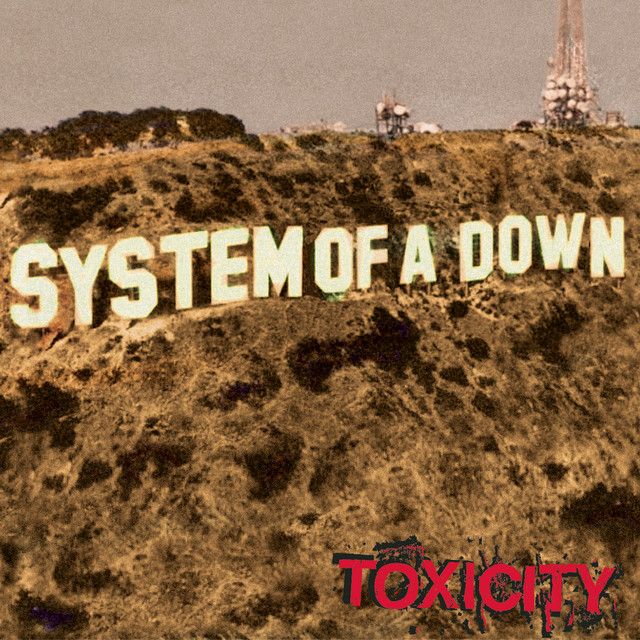
10. System of a Down
Toxicity
[American; 2001]
DUN…
System of a Down’s sophomore album Toxicity was released on September 4th, 2001 and would be the number one album in America the very next week. Something else happened that week that you may or may not have heard about. That other event is now inseparable from Toxicity’s legacy. Here was a stridently political band releasing a heavy metal album exactly one week before an event so devastating that it was assumed it would annihilate America’s appetite for heavy metal and political bands alike. Instead, Toxicity went triple platinum, each single peaking higher than the last. Add up the YouTube views for the music videos of those singles - uploaded several years after the album’s release - you reach an eye watering two billion and counting. Not only did America, and the rest of the world for that matter, need Toxicity they never stopped needing Toxicity.
DUN DUN DUN DUN DUN DUN DUN DUN DUN DUN DUN DUN DUNDUNDUNDUN…
The fake out opening of “Prison Song” sets you on edge, the gap of silence between the first chord and the remaining seeming to grow every time you turn it on. The first verse begins; “Following the rights movement, you clamped on with your iron fists / Drugs became conveniently available for all the kids.” This was not music to be misinterpreted. Tankian needs you to know that America’s prison system was coming for you as much as it was coming for any so-called criminal. “All research and successful drug policy show that treatment should be increased / And law enforcement decreased while abolishing mandatory minimum sentences,” goes the song’s proto-woke breakdown. It’s bracingly straightforward. Even Rage Against the Machine’s firmly anti-police “Killing in the Name” could be stripped for the adrenaline rush of its “Fuck you I won’t do what you tell me” refrain, System of a Down correctly ascertained they didn’t have room to be poetic. But despite that lack of subtlety, “Prison Song” is far from deathly self-seriousness, as lines like “Nearly two million Americans are incarcerated in the prison system” are somehow able to coexist with Daron Malakian proclaiming “I buy my crack, my smack, my bitch right here in Hollywood!!” in a Queen style theatrical vocal affection.
Toxicity is perhaps best appreciated as a series of vignettes twirling around “Prison Song” and the three singles “Chop Suey!” “Toxicity” and “Aerials.” It’s easy to get hung up by the perceived slightness of “Deer Dance” or “Science” on their own, but together they weave a rich tapestry of Los Angeles disillusionment, their dry grooves soundtracking the claustrophobia of living in an endless city surrounded by mountains. Songs like “Bounce” and “Shimmy” torch like brushfire sweeping across bone dry California hills, filled with energy and potential before being hushed back to nothing. Meanwhile “ATWA” drifts over the sprawl in beautifully off-kilter harmony, wistfully watching it pass by.
But it’s those three singles that stand the tallest, like downtown LA skyscrapers making focal points in the mire. “Toxicity” has become the album’s de-facto party starter, a deathless karaoke classic you can also play at your wedding. Its furious rhythms collide against each other with brute force, signing tense peace treaties during the verses before going on the offensive in the choruses. “You! Now that you own the world, how do you own disorder??” demands Tankian, less the bemused observer he was on System of a Down and now the furious protester being hauled from the courthouse. “Aerials” finds the band at their most meditative and darkest, its ruminating on life as a river sounding like the deepest wisdom over baroque strings and Daron Malakian’s aching guitar crescendos collapsing into a vicious breakdown. “When you lose small mind / you free your life” they cry out together, like prophets bringing down lighting and fire to make their point.
And then there’s “Chop Suey!” Twenty years of radio saturation and the exhausting strip mining of its eccentricities for meme fodder can’t rob it of its power. Like “Smells Like Teen Spirit” before it, if you can somehow absorb it in a vacuum, free from cultural omnipresence, it will knock you flat on your ass.
Only two days after the 9/11 attacks Serj Tankian would pen and publish “Understanding Oil” to the band’s website. A seriously well considered essay, it reasons that we must understand why the terrorists did what they did and how the 'war economy' will only propagate the root causes, declaring, in all caps; “IT’S TIME TO PUT OUR NEEDS FOR SECURITY AND SURVIVAL, ACHIEVED ONLY THROUGH PEACE, ABOVE AND BEYOND PROFITS.” The essay was quickly snatched offline by the band’s label and the singer was accused of justifying the attacks. Two decades later and we continue to fail our Mother Earth, the war economy is still a fatal tumor upon our nation’s limbic system while we shimmy shimmy shimmy to the break of dawn yeah because we don't know what else to do. How deeply are we now living inside the future Toxicity warned us about? 14 years after having its songs blacklisted from Clear Channel and the band labeled terrorist sympathizers, a Toxicity deep cut - the one about group sex - would feature prominently in a children’s movie. — H.K.
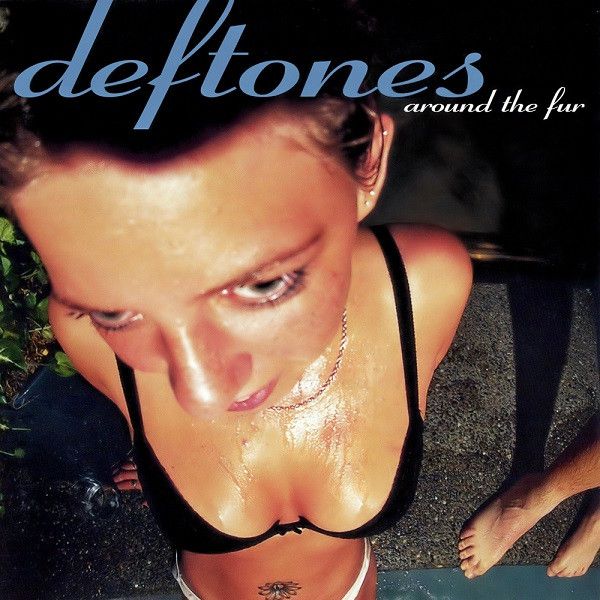
9. Deftones
Around the Fur
[Maverick; 1997]
Along with prog and nerdcore, nu-metal has earned its place amongst the least sexy genres of music ever made. If effective sex jams need enough atmosphere to allow erotic energies to flow, nu-metal runs right up in your face with screeching, weeping, wailing, howling anger while the band batters away at the ugliest chords you've ever heard. Grown men pouring their guts out in violent ways does not make for sexual music and when nu-metal bands do attempt to write sexual music the results are somehow even more gruesome. And yet there is the exception that proves the rule: Deftones. Not only do Deftones make intensely sensual music, they're one of the sexiest rock bands in history. From the title track of their demo Like Linus, you could hear lead singer Chino Moreno fumbling towards an elongated moan technique that would resonate from Ozzfest to strip clubs around the world. On sophomore album Around the Fur, the transformation is complete.
Though they’d later disown it, Around the Fur’s cover photo - a bikini clad woman sitting by a pool, photographed at an angle distorting her into alien proportions - clues you in before pressing play. Around the Fur ratchets back the pitter-patter rap stylings of Adrenaline for an array of sensual whispers and wails. On “Mascara” Moreno flicks his words around like a magician manipulating playing cards. “I feel soon I will sink into you. What do you think?” he murmurs. But Moreno can’t disentangle his seduction from violence. Moreno would later write about how angry he was during this period, and despite spending most of the record letting that anger simmer, when it’s time to pull the lid off ("Around the Fur," "Rickets") you’ll feel the heat.
Meanwhile, guitarist Stephen Carpenter leans into his power chords with such equal rage and grace that they become turn ons. If the riff on “My Own Summer (Shove It)” was played at a more genre-appropriate 91 BPM, it would be another bounce riff for someone to sing about their girl problems over. But here, at a patient 72 BPM, it menaces and tenses like a viper. On “MX” Carpenter, along with bassist Chi Cheng and drummer Abe Cunningham, lock into a groove that pummels you from left to right, up and down.
What Deftones did better than any other nu-metal band was world-building. Around the Fur takes place in its own universe, where the unfathomable beauty of “Be Quiet and Drive (Far Away)” can coexist with the shrieking temper tantrum of “Lotion.” Where the deeply nu-metal “Headup” can eat from the same table as the disturbingly sexy “MX," wherein Moreno offers some poor unsuspecting woman these flattering compliments: “You’re so sweet / Your smile, your pussy and your bones” before taking a moment to consider girls, money, new clothes, and “thirty nights of violence.” Two stanzas later he shoves her over the railing. “You make it so easy." What a charmer. — H.K.
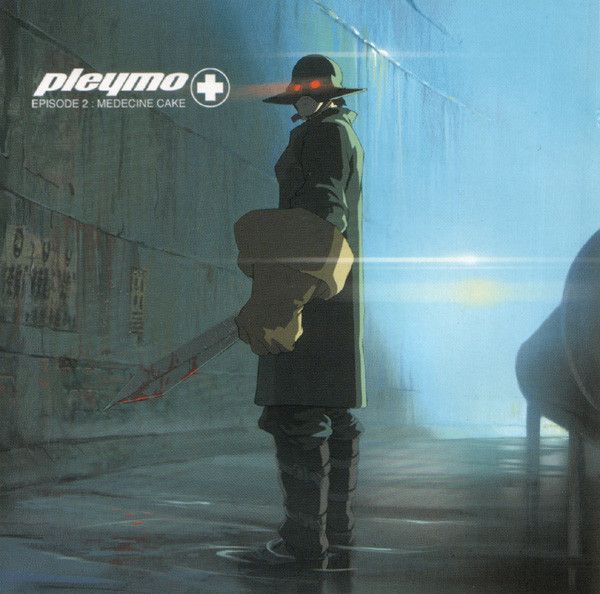
8. Pleymo
Episode 2: Medecine Cake
[Epic; 2002]
The year was 2002 and American nu-metal was hitting the skids. Linkin Park and Papa Roach had infested the pop charts, Fred Durst was unavoidable, Korn were losing their touch, Deftones a non-issue, and Slipknot becoming exhausting. Americans were already getting weary of this particular brand of angst and then 9/11 came along and mopped up whatever was left of America’s appetite for destruction. Nu-metal was living on borrowed time. However everywhere else in the world, nu-metal wasn’t just culturally relevant, it was cool. While Americans were smothered by drop-tuned angst mongers, the rest of the globe was desperate to receive the next foreign import, anything to break the monotony of shiny euro-pop and watery sods like Coldplay and Travis clogging up the airwaves.
Fontainebleau, France sextet Pleymo’s approach to nu-metal (“neo-metal” or "crossover" in France) was one of unabashed enthusiasm. After their raucous debut Keckispasse? landed them a deal with Epic Records, they dove into their sophomore effort with a new layer of expertise. Speaking to French magazine Rock Sound in 2001, frontman Mark Maggiori is frank about the pressures of being vaulted to the forefront of a new wave of French heavy metal and how what happened next would either open or shut the door for their generation. As such, Pleymo upholster their debut's Limp Bizkit/Korn/Deftones pastiches with game-tight updates of Meshuggah and Slipknot. Songs like “Ce Soir C'est Grand Soir” and “Muck” pull off head spinning feats of time signature trickery and off-keel accents like Olympic runners passing batons in lockstep, the physical feat obviously impressive but no strain is visible. In fact, for the entire duration, Pleymo never sound like they’re having anything less than a blast.
If Slipknot's Iowa was the question, Episode 2 is the answer; pulling the same weight and intensity but trading the homebrew meth and horror movie vibes for MDMA and anime. There isn’t a shred of angst, the only time it feels anything other than pumped full of joy is the gorgeous sunset over Neo-Tokyo that is “Star FM-R,” a moment of reflection that aches with nostalgia like an end credits sequence from Naruto. While every other band was making songs about the hating, the pain, hating the pain, and the pain of hating; Pleymo were waxing rhapsodic about what a sick filmmaker Stanley Kubrick was (“It's my tribute to a master of his art. I think he was the one there's not many of his kind”) and sketching out characters and concepts that make the album’s visual universe huge. Ostensibly a concept album, Episode 2: Medecine Cake’s plot is mostly inscrutable but serves as thematic binding for the album. References to a Dr. Tank can be delved into or ignored — what truly matters is how fucking hard it all goes. What binds Pleymo’s excitable drop-b metal experiences to our modern age is a production that favors thick nightclub ready bass resonance over AM/FM radio sonics. Fabrice Leyni, fresh off producing French hardcore heroes Suprême NTM’s self-titled blockbuster, brings a bass-first intensity to Episode 2 that adds gravity and bounce to the classic nu sound. The deft drumming and fierce bass work of “United Nowhere” and “Compact” is especially felt through the heavy yet roomy production.
As “World” comes to a close, Dr. Tank preaches to a crowd of applauding aristocrats; “The neo-metal scene is a fad for stupid teens. Three chords are enough to play!” It’s a sly moment, a bit of meta-critique in a genre that was more likely to agree with the sentiment than fight it, but for a band so love with nu-metal the very existence of Pleymo's Episode 2 is the greatest refutation one could ever ask for. — H.K.
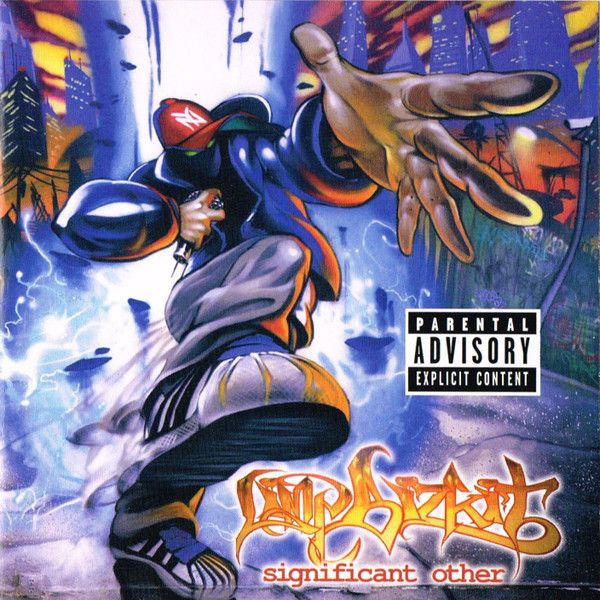
7. Limp Bizkit
Significant Other
[Flip/Interscope; 1999]
Generational griping is corny - every generation thinks they did everything better than the next one - but we may have to acknowledge that Gen X got the experience of being a 13-year-old boy exactly right. If your interests were aligned with America’s marketing departments then pop culture was your oyster. Wrestling, video games, music, Saturday morning cartoons, breakfast cereals, and cable TV all existed to serve you radically xtreme programming at all times and no one band was more ready to please this demographic than Limp Bizkit. Here they were; the WWE theme song-ing, breakdancing, turntabling, dirty word-slinging gods of your adolescent life and nobody was more stoked by the juvenile excesses than Fred Durst. Look no further than the iconic, MTV dominating music videos of this era: whether skateboarders are busting sick tricks over his head, an army of ladies are pursuing him, or he's trading flips and kicks with Method Man the overriding feeling radiating from Durst at all times is that he is so fucking amped that this is happening. The man becomes the moment. For a glorious second, an average white boy in a backward red cap was everything and everywhere.
Durst’s performance exists in the space between being enough of a grown man to know there’s always going to be a bill to pay and a world that’s offering him enough money to potentially never care again. When he runs through the people and places he’s thankful for on “Show Me What You Got” he’s not full of grace as much as he's consolidating his rolodex, rattling off names like the “cc” field on a CEO's Christmas email (“To The Firm, you always got my back / Korn for the love and the swappin' up of tracks / My brother Cory D, my man Terry Date / We brought it to the plate and you made it sound great!”) His wiser angel is “silent when [he] would choose to speak” (“Re-Arranged”) but off the clock he’s introducing a song called “Break Stuff” with a skit of himself… well, breaking stuff. The chorus of “Nookie” doesn’t even have an explicit version, it’s just “you can take that cookie and stick it up your YEAH!" as if Durt can’t believe he’s getting away with “nookie” and doesn’t want to push his luck. Or maybe it’s because he knows that it’s funnier to say “YEAH!” instead.
If you pick up a guitar in the right tuning, you can make sounds that resemble Wes Borland's riffs - anyone who’s strummed a drop-tuned guitar once or twice in their life has stumbled upon the opening chords of “Break Stuff” - but upon closer inspection you realize you’re far from the truth. Significant Other is the album that sold a million tab books. Dig the intricate, shifty tapping on “Re-Arranged” or the suddenly complex riffing that “Break Stuff” becomes on the bridge. Borland might know how to play his role but that role is far more than just setting the scene for Fred’s antics.
Behind Wes and Fred’s yin and yang is one of nu-metal’s most rock-solid rhythm sections. Bassist Sam Rivers is an irresistibly creative force in his own right (I mean, “Re-Arranged” alone…) while John Otto’s forceful wallop was taking ‘em to the Matthew’s Bridge long before Fred made it official. Throw in DJ Lethal’s old school hip hop turntable expertise and you have a band powerful enough to briefly convince the world that Fred Durst was a musical genius instead of a guy clever enough to lock down the best band in town.
Due to its perfect opening four track run, Significant Other has picked up the reputation of being frontloaded. While it’s an understandable impulse - certainly nobody is skipping their way straight to “No Sex” - missing out on the surprisingly elegant “Don’t Go Off Wandering,” the irrepressibly bouncy “9 Teen 90 Nine,” or the infectiously fun “N 2 Gether Now” would be a shame. Sure, if you trimmed one or two tracks from Significant Other you'd have a 'better' album but you’d lose what makes it such a perfect embodiment of the moment. This isn’t just Limp Bizkit at their peak but the entire CD-crazy record industry racing towards the apex of its ‘you had to be there’ ceiling. When selling a plastic square meant packing every second of the disc within, even if that meant ceding the end of your album to Matt Pinfield and Les Claypool.
There was only one moment in time when a doofy dude from Jacksonville, Florida could grab the world’s ear and wallets. That time is gone. After defying gravity by turning around a follow-up album the very next year, 2000’s Chocolate Starfish and the Hot Dog Flavored Water (which remains, to this day, the fastest selling rock album in Soundscan history) the bubble had to burst. Wes left the band, a nationwide search for a new guitarist went nowhere, Fred tried to pick up the guitar himself, and by the time they hired the plenty talented in his own right guitarist Mike Smith it was too late. The resulting album, 2003’s Results May Vary, is the house lights coming on and everyone heading home; a turgid collection of post-grunge whining and misogyny. Even after reuniting Bizkit’s original lineup several years later they would waste time fruitlessly chasing relevance, briefly signing to Cash Money and chunking out awkward power ballads. Limp Bizkit seemed to be slumping into the irrelevance their critics always wished for them.
But just a few years ago, something remarkable happened. Fred Durst, the eternally boyish avatar of 90s recklessness, donned a silver wig and deemed himself king of the “Dad Vibes.” The resulting album, impeccably titled Still Sucks, finds the band at peace with their legacy and enjoying each other’s company with nothing to prove. Even better, fan reception was near-universally positive, the new songs are as well received as the old ones at shows. Despite it all Limp Bizkit figured out how to age gracefully. As David Bowie said in his seminal 1971 single “Changes”; “Time may change me, but you can’t change time.” Fred Durst paraphrases that same lyric on Significant Other but with one important caveat added to the end; “So fuck it.” — H.K.
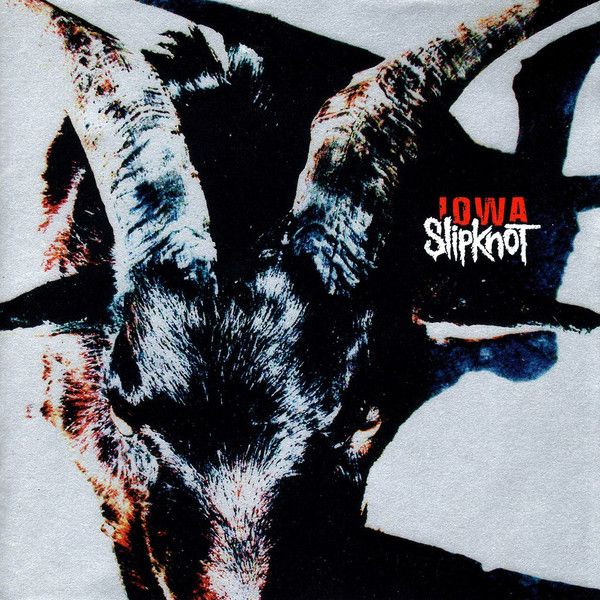
6. Slipknot
Iowa
[Roadrunner; 2001]
“Heavier than Iowa.” This has been the inside straight on every Slipknot album to follow. The new Slipknot album is going to be the one that makes Iowa look like child's play. The band has tapped into that essence again dude and they’re gonna do it, it’s going to be heavier than Iowa, Corey burned his fedora and Clown isn’t doing NFTs anymore bro this is gonna be it. But it never is. Nothing is heavier than Iowa.
In ZA/UM’s 2019 role-playing game Disco Elysium, the end of the world is manifested as a great rumbling sub-bass emitting through a tiny hole in the earth that can be, after passing the right skill checks, sidechained against a disco beat to create a true hardcore sound. That’s Iowa. The end of everything sidechained against a B-tuned guitar, the greatest metal drummer of his generation, and a severely misanthropic frontman. The title of Iowa’s first proper song “People = Shit” doubles as the album’s modus operandi. “Noises, noises, people make noises people make noises when they're sick,” observes Corey Taylor on “Disasterpiece” like someone just stepped out of a time machine and let him scroll Twitter for an hour. It may scan as teenage edglording, but it’s all derived from the most adult form of angst: hating the shit out of your coworkers. The band, fully in throes to the drug and alcohol addictions they had avoided so strictly while crafting their debut, were at each other’s throats throughout. Producer Ross Robinson literally broke his back during the sessions and kept coming to work anyway because he wanted to get it over with as much as they did.
Taylor once likened Iowa, Slipknot’s home state, to a “non-stop shit eating fest” and to get out of there they had to “make the loudest noise possible.” If that’s their debut, then Iowa is the even louder noise they made to keep themselves out. From the abrasive intro into the gauntlet-throwing first song, to the melodic single to the amorphous closing dirge; Iowa is nearly a song-by-song response to the challenge of their debut. Incredibly, it clears every bar set by its predecessor. Whether or not these songs are 'better' is debatable but they certainly go harder. “People = Shit” out sickens “(sic),” “Left Behind” catchier than “Wait and Bleed,” “Iowa” more desolate than “Scissors.” The whole band sounds like they’re manning stations in a B-52 bomber that’s being fired upon from all sides. Mick Thomson and Jim Root’s drop-B guitar onslaught chatters and whirls like twin chainguns while Paul Gray and Joey Jordison’s rhythm section keeps the apparatus in motion with a solemn confidence.
While North America was about burned out on nu-metal, England was watching Britpop eat itself alive and hungry for the next thing. Stateside, Iowa peaked at number three on the albums chart and would be referred to as “a god-awful gaggle of Korn-fed, mask-wearing Midwesterners” by Entertainment Weekly. Meanwhile, in England, Iowa impacted like a meteor, debuting at number one with the NME heralding it as so good it “could almost restore your faith in humanity.” It would wind up ranked as their sixth greatest album of the year, one behind Jay-Z’s The Blueprint and well ahead of Radiohead’s Amnesiac. A year later, Slipknot would shoot their live concert film Disasterpieces at the London Dockland Arena to a sold-out slavering crowd of thousands. The Iowa world tour saw them not only packing houses across the globe but doing it while sharing stages with bands they had inspired like American Head Charge and Mudvayne. The word was out, Slipknot were a global phenomenon. Nu-metal had lots of great music yet to come. Slipknot too. But nothing would be heavier than Iowa. — H.K.

5. Linkin Park
Hybrid Theory
[Warner Bros; 2000]
Hybrid Theory is a perfect metallic wristwatch. The intricate cogs and mechanisms that keep it in time are encased by a flawless glass surface that gives none of its intricacies away. Hybrid Theory is a transmission from a long-ago world in which a metal act wasn’t just competing with the pop acts of the day, it was defeating them. *NSYNC's No Strings Attached, frequently pointed to as the peak of the CD era, sold half of what Hybrid Theory would sell worldwide. So successful was Hybrid Theory that Linkin Park immediately had to fight off the boy-band accusations from their detractors. Yet the comparison is somewhat understandable. Beyond just a fresh faced and unthreatening looking bunch who declined to swear even once on their debut what strikes most immediately about Hybrid Theory is how deeply pop it is; no album has ever synthesized pop music and heavy metal to such seamless extents. Not Metallica's Black Album, not Appetite for Destruction, not Back in Black, nothing. What are modern iconoclasts like Poppy or Rina Sawayama if not visions of an alternate world where “One Step Closer” was recorded by Britney Spears? For the half decade leading up to Hybrid Theory, nu-metal had been conquering Soundscan and TRL but the singles chart remained mostly immune. Neither Korn nor Limp Bizkit had ever broken the top 50 on the Hot 100. Linkin Park changed that by packing “In the End” with zillion dollar hooks and sending it all the way to #2, held off from the penthouse by none other than Jennifer Lopez.
To the legions of teens and tweens who were finally allowed to own a nu-metal record ('Look ma, no parental advisory!') this seemed like the last album they’d ever need. This is as 'all killer no filler' as it gets. This lean efficiency is why it kept moving six figures a week well into 2002. Radio stations played deep cuts like “Runaway” as if they were singles. If Linkin Park hit you at the right age and right time they were a band you could build a life around. Unlike their larger-than-life peers, Linkin Park were their fans. Obviously nerdy guys that were into anime and Xbox and cleaned up their (green) rooms after making a mess. They had a fan club, did web chats, signed autographs, and released a full remix album just a year later, cultivating their own cutting-edge visuals that combined hip-hop culture, graffiti, and Adult Swim.
For a band that made such uncool music their influences read like an indie publication’s best albums of the 1990s list. Shinoda cited Refused’s The Shape of Punk to Come as being essential, going as far as to say “without [that] there is no Linkin Park.” The comparison might seem off at first - stridently political post-hardcore heroes are responsible for your little brother’s favorite band? - but upon inspection makes perfect sense. Until this point, nu-metal was loose and groovy but Linkin Park tightened everything to a fine cinch. They bottled Refused’s 'Can-I-Scream?' energy, grabbed Depeche Mode’s clean melodic sense, and Nine Inch Nails’ dense layers of electronics and synths to buttress their guitar and bass combinations along the way. Jay-Z’s futuristic flow, Black Thought’s internal rhyme schemes and Aphex Twin’s digital sound manipulations get swiped as well. The turntable showcase on “Cure for the Itch” gives way to dusty loops and an aching melody that could make DJ Shadow bob his head. All of this baked into the standard nu-metal formula of downtuned riffs, angst and DJ sfx created a sound that was at once a logical next step and entirely without precedent. It’s staggering to imagine a fusion this dense coming on a debut album, yet here it is. As such, Hybrid Theory works as a sort of musical philanthropy; priming millions of kids to get into acts like Cannibal Ox, Boards of Canada and Far later in life.
Hybrid Theory changed popular rock music forever. In the wake of its incredible sales figures, bands discarded any lingering pretenses of old time rock ‘n roll - let alone the blues - in favor of Linkin Park’s cut-and-paste Pro Tools methodology. Even their forebears like Korn and Slipknot would forsake their earlier jammy stylings for Linkin Park’s rigid structures and pop songwriting. Meanwhile, indie would sprint backwards to revive the garage rock sounds of the 60s and 70s with production techniques that strove for one band in one room recording to tape. Luckily for them, the world conquering success of Hybrid Theory spawned a backlash big enough that you could argue the ripples of Linkin Park's success are as responsible for the popularity of the White Stripes as they are Imagine Dragons. For better or for worse, the line between Hybrid Theory and modern rock bands like Bring Me the Horizon and twenty one pilots is a straight one. Hybrid Theory’s influence is a testament to its quality, even if some of the wrong lessons were learned.
If you can allow an author his indulgence, this was the album for me growing up. Chester Bennington, arguably the finest rock singer of the 21st century, was a songwriter who understood me before I did. From the melancholy lilt of “In the End” to the shattering screams of “By Myself” his golden throat was a conduit of pure angst; flowing directly into the headphones of millions looking for a safe space to explore those first tender feelings of depression and anxiety. A voice that could make an afternoon grounded feel as epic as the end of the world. This longing, for an innocence where the mildest inconvenience could be felt as deeply as death, makes the reality of “Pushing Me Away” ache. Bennington, spent from an album of bloodletting, sings straightforward and pretty, "I lied / to you/ the same way that I always do." “We’re all out of time" raps Shinoda, "This is how we find how it all unwinds," announcing not just the climax of the album but the beginning and end of an era. As the song digs in for that last chorus, it all slides away like a VHS tape in fast forward. For a brief moment, as processed drum loops flicker into silence and a lonely synth trigger is switched off, I communicate with that innocent childhood self again - cradling a discman in the backseat of a minivan staring out the window - then it’s over. — H.K.

4. Deftones
White Pony
[Maverick; 2000]
Tony Hawk’s Pro Skater was released in North America on September 29th, 1999 for the Sony PlayStation One. With its blend of addictive gameplay and iconic soundtrack, it quickly became a runaway smash hit, selling over 300,000 copies in the first year of release. Crucially, the game was such a hit that Sacramento-based recording studio The Plant put the game on a TV in the lobby; which is probably the reason why Deftones’ reality-shifting masterpiece White Pony arrived a few months later than anticipated. Guitarist Stephen Carpenter recounted to The Ringer in 2020; “[Producer] Terry [Date] would give us grief because we were crushing on that all the time. Terry’s like, ‘We’re in the studio, guys. This costs money.’ We’re like, ‘Whatever, we’re playing this game.’”
In much the same way the Sony Playstation brought video games into the third dimension, the addition of DJ Frank Delgado to the Deftones lineup takes the band from 8-bits to 32. By the time this album was released in June of 2000, DJs in metal bands were well-trodden territory, and Deftones drafting their own turntablist must have felt like a blatant sell out maneuver to those trusting Chino and Co to fly the flag for melodically inclined nu-metal but Delgado adds much more than just some wicky-wickeys. As Moreno put it to Launch in 2000, Delgado takes the Deftones sound “from 2D to 3D.’ Songs like “Change (in the House of Flies)” would be unimaginable without Delgato’s ghostly sampled synth wails. His scratching during the breakdown to “Korea” is the closest he comes to a genre-typical turntable solo; only it’s choppy and distorted like someone keeps bumping the needle off the groove. Delgado’s subtle touch clicks the buckle between Deftones’ alternative efforts and their nu-metal firmament, subtly fleshing them out without getting in the way of a band working at absolute peak.
Abe Cunningham stamps his passport to drummer Valhalla throughout White Pony – as delicate as morning dew dropping into a shallow puddle in one moment (“Digital Bath”) then heavier than cannons in the ocean the next (“Elite”). His playing is unafraid to speak softly and carry a big stick. Cunningham’s pendulumate drum fill coming at the end of “Change (in the House of Flies)” feels like the climax of the entire record. Moreno elevates his reputation as nu-metal’s only sensualist, forsaking singing for a series of moans and wails that flit and flicker through the tracks like post-coital secrets. From the murder fantasy of “Digital Bath” to the being murdered fantasy of “Knife Prty” even the most depraved cocaine fantasies of White Pony are a current of electric sex that must travel somewhere across Los Angeles’ rooftops and skylines. When Tool’s Maynard James Keenan appears on “Passenger,” a Cronenbergian sequel to “Be Quiet and Drive (Far Away),” he is coming into Deftones’ universe, not the other way around. It’s the sexiest he’s ever sounded, a man who is used to crooning tales of prison sex and anal fisting simply marveling at the ecstasy of being driven somewhere.
Madonna, meanwhile, wasn’t hearing it. Dismayed by the adventurousness on display, Madonna and her record label Maverick Records were nonplussed by the radio-unfriendly 'classic for the real heads' that Deftones had handed in but put it out in good faith anyway. As the weeks ticked by and “Change” started to slide off the radio while Linkin Park and Papa Roach were cleaning up, Maverik began getting impatient. Singling out the chorus to closer “Pink Maggit,” they convinced Chino it could be reworked into a straightforward rap-rock track and give them the single they needed. The result, “Back to School (Mini Maggit),” so thoroughly blew the minds of everyone at Maverik that, not only did it get the big-budget video treatment, the record was reissued with that song at the top instead of “Feiticeira.”
This was a huge slap in the face to the band’s artistic vision yet it somehow paid off spectacularly well. When that "Back to School" chorus comes exploding back around, freed from its forced rap-rock shackles, on finale "Pink Maggit" it is like God themselves pushing the clouds aside to let magnificent rays of sunshine through. Moreno was adamant White Pony was a full album experience, built to be enjoyed from start to finish, and it’s an incredible exception that a record label intervention as severe as replacing the opening song to the album would help that objective along.
White Pony’s melding of Mogwai and Prince into the firmament of nu-metal represented the outer reaches of the genre’s journey into space. The same year White Pony was released to a moderately successful commercial reception, Limp Bizkit’s Chocolate Starfish and the Hot Dog Flavored Water and Linkin Park’s Hybrid Theory would both ship several million more units. The path White Pony blazed wouldn’t be followed… yet. White Pony and Deftones at large survived the critical mauling of nu-metal at the turn of the decade and now thrive as an increasing number of young acts felt emboldened to namecheck the album as a formative influence. Bands like Loathe, Fleshwater, Split Chain, Thornhill, Bleed, Prodigal and many more have all found creative spaces to employ White Pony’s blend of post-rock, new wave, and nu-metal. The reclamation of White Pony by the indie critical cognoscenti was so total it became cliche to mention just how different and better Deftones are than all those other nu-metal bands they were mentioned with. But they weren’t. That’s what makes White Pony the masterpiece it is. Deftones found themselves at the forefront of a ceaselessly creative scene and simply, elegantly brought all that inspiration together. — H.K.
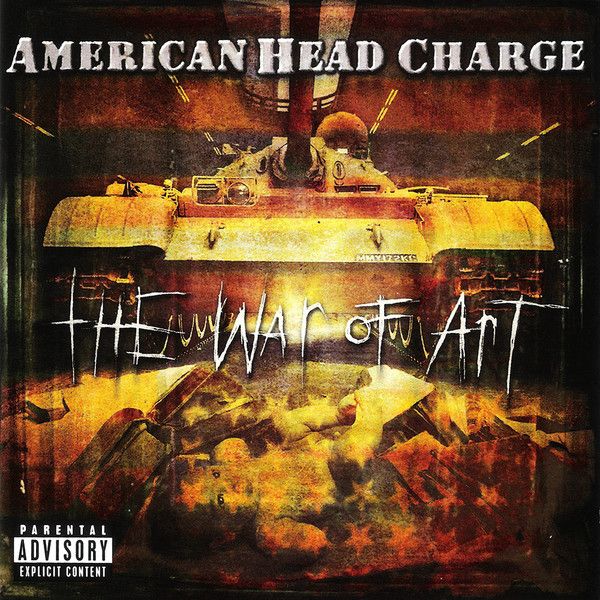
3. American Head Charge
The War of Art
[American; 2001]
'Keys, Audio Terrorism' is how keyboardist Aaron Zilch is credited in the liner notes to American Head Charge’s 2001 major label debut The War of Art. Between the militarism of the band name, the album title, and the cover art, it’s understandable if you find it all too cute by half at a glance. Then you press play. Before anything resembling a musical notation happens, The War of Art opens with four BZZZZTKNKS – like a cassette tape recording of a refrigerator falling into a junkyard played into decay over and over – and then the entire band comes exploding to life. Let the audio terrorism commence. Singer Martin Heacock and bassist Chad Hanks met in an outpatient facility for recovering addicts. Their final assignment was to write and present a song to the class for graduation. This extends to their work in American Head Charge. These songs do not flow forth from inspiration as much as a necessity to avoid falling back to the bottom. The opening violent reaction is a struggle to keep oneself alive, not happy or content. It took nine long months in the studio to create The War of Art and it feels every second of it.
Released on August 28th, 2001; The War of Art follows in the tradition of albums like Dark Side of the Moon, Disintegration, and OK Computer; records that immediately force the realization that the horizon lines are much further away than you thought and rock music can be bigger than you ever believed. Its most relevant predecessor is King Crimson’s In the Court of the Crimson King - another album made by men that sound like they have glimpsed infinity and lived to tell - but where Crimson sounded shaken to their core American Head Charge sound fucking amped. “Song for the Suspect '' laces its second verse with a psycho circus organ that sounds like being trapped in a tilt-a-whirl on fire. The drop riffs of “Pushing the Envelope'' and “Shutdown” with their oh so satisfying 1-0-1-0 riffs, jam a finger through your brain and firmly push your cro-magnon pleasure button. Just before 9/11 was about to sour America’s appetite for direct critique, songs like “Never Get Caught” find AHC at the hilt of some contemporary happenings. Lyrics like “Wrapping you up in an American flag I fuck you for the glory / No complaints from my friends / They keep their fucking mouths shut,” were self-fulfilling prophecies as America descended on Iraq with their coalition of the willing. The key to The War of Art and its relationship to America is that it’s about more and doing whatever it takes to get more without rest. Songs don’t resolve; they burst into flames and skid to a halt as big fat slabs of Nu-Metal Machine Music assigned to sampler pads are slammed all at once.
Rick Rubin’s reputation as a producer tends towards sterling respect or a general sense that he wasn’t pulling his weight. Whatever he did or didn’t do, someone needs to stand up and be counted for this. The War of Art packs an unreal amount of sounds into compact songs without ever feeling like a cluttered mess. Crunches, crashes, bangs, booms, snaps, sirens, squeals, samples, (literal) industrial lifts, whirs, whizzes and the occasional KABOOM! All of it sounds as natural here as a major chord. On de-facto demo album Trepanation, the SFX sat atop the songs. The War of Art bulks up the arrangements considerably, finding space within them to absorb the audio terrorism until it’s operatic enough to imagine Jim Steinman’s Bat Returns to Hell for his Third Overtime Shift. On “Never Get Caught” the demo’s clearly audible dialogue snippets (“Here you are all equally worthless,” “You are the motherfucking anti-Christ”) get mauled until they slot straight in between the guitar and drums. “Seamless” in particular gets a shocking overhaul, from a thin wobbly industrial groove to an elephantine bounce that cracks open to reveal a piano ballad before effortfully plunging back into the riff. The War of Art never for a second sounds less than perfect, amongst the best produced metal albums of all time.
The War of Art is Ministry’s Military Industrial-Metal Complex rock on a post-9/11 Pentagon budget. If The Mind is a Terrible Thing to Taste was Coppola’s Apocalypse Now, The War of Art is the Jerry Bruckheimer remake, maintaining the paranoia and anxiety while adding a hundred million dollars worth of explosions. All over The War of Art are depictions of effort and persistence: reaching, pushing, pulling, tying it up in knots. The phrase “A Violent Reaction” evokes ignition. The sound of “A Violent Reaction” evokes a fleet of 18-wheelers going full tilt all at once. This is big music with big ideas that will make you feel big too. Any future physical activity you might have to accomplish will become easier with this on.
Meanwhile, Cameron Heacock pens lyrics that summon S. Burroughs and S. Thompson in equal measure. “Seamless” reduces sex to grotesque spasms “steeped in my misogyny” inside a “colostomy bag.” “Americunt Evolving Into Useless Psychic Garbage” is battering hardcore thrash with Heacock ramming a dentist drill into his own exposed brain, “it's never time to start believing everything will all work out” he screams. These are lyrics of tactility; rarely is the “pain inside” considered, instead Heacock dwells on the feeling at the ends of his fingers. “Reach and Touch” is illustrative as song title and modus operandi; “So as to reach and touch what hurts me.” Heacock’s obvious vocal debts to Mike Patton are paid in full with an almighty bellow that sounds like nothing less than an ancient god returning to take back his kingdom. When he turns a weary croon to an earth-cracking roar on “Fall” it’ll chill you into silence or inspire you to run through a brick wall.
True to its title, The War of Art is about how making art is hard fucking work. Nine months in the studio finally produced this album, a long time considering how close many of these songs were to finished on Trepanation. It took a lot of coal to keep this machine going. “Nothing Gets Nothing” is that machine finally shuttering to a halt, the violent reaction failing at last. The song doesn’t groove so much as lurch, every beat a great and terrible colossus struggling to put one foot in front of the other. “The less I give / It's easier / The more we give / It's nothing,” croons Heacock before summing one last titanic volley of strength: “NOTHING! GETS! NOTHING!” Smash cut to black.
Powerful people with money were convinced American Head Charge was the next big thing. That tank on the cover is not Photoshop, it is a real tank parked in downtown Los Angeles. When The War of Art stalled out at a measly couple hundred thousand copies sold, Rick Rubin lost interest and the band left American Recordings. A seemingly never-ending run of bad luck followed: the death of guitarist Bryan Ottoson in 2005, a successful Indiegogo campaign followed by the death of bassist Chad Hanks, and finally Cameron Heacock’s arrest in 2018 for stealing guitars from Guitar Center. Googling 'American Head Charge' now means you’re as likely to find two news anchors chuckling over Heacock’s mugshot than his music. The album’s superstar producer Rick Rubin seems to have never mentioned the album again.
The one upside to all that misfortune is that The War of Art is the rare classic that can be taken on its own terms. There’s no uphill battle of legacy to contend with because it has no legacy. No 20th anniversary reissue, no best of the decade lists, no retrospective documentary, no oral history, nothing. This might be the most words ever shed on the damn thing. Thus, The War of Art, a mega budget major label album, has become a hallowed secret whispered amongst the faithful. In comment sections and message boards, those who truly understand agree; The War of Art is a masterpiece.
The America that The War of Art was released into wasn’t ready. Pre or post-9/11, nu-metal was designed to be insular angst-mongering. System of a Down’s proud politicking, Deftones’ lyrical spacities— the exceptions, not the rule. Now that The War of Art’s borrowed dreams of some imagined future have come to pass it is very ready. A place where its sirens and squeals shuddered by thrashed keyboards, Chad Hanks’ six-string bass guitar scraping the bottom of oil wells and Martin Heacock’s 'Mike Patton playing Bane and The Joker at the same time' singing finally feels at home. Legacy? American Head Charge never thought twice about legacy, they simply moved forward because they knew “if we stop it all falls down.” The War of Art is American Head Charge building a wicker monument to their legacy - their superstar producer, the hundreds of thousands of dollars spent, the tank parked in downtown Los Angeles, the band members yet to leave or die or both, the 9/11 that cost them their careers, the country that proceeded to eat itself alive while the entire planet screamed for relief - coating it in gasoline and burning it to the ground. — H.K.
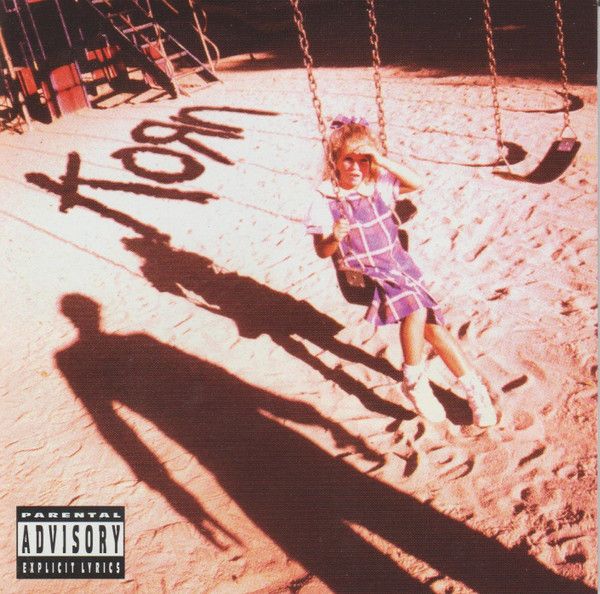
2. Korn
Korn
[Immortal; 1994]
In 1996, riding the wave of excitement freshly stirred around 7-string guitars, dignified ax slinger Steve Vai and guitar company Ibanez produced 7th Heaven, a showcase type VHS tape you’d see looping in local instrument shops. The special features guitarists of incredible skill flaunting their 7-string in all its glory. Complex finger picking, shearing solos, even Wes Borland makes an appearance to flex his dazzling tapping ability. And then there’s Head and Munky of Korn. Where the other guitar technicians waxed over the new ability to use the 7th string as a bass note in new complicated chord shapes, Head and Munky have to explain the first chord used in “Blind” is something they just… made up. Yet, out of every guitarist featured in 7th Heaven, nobody is responsible for more 7-strings sold than those two amateurs. Munky and Head, along with their bandmates in Korn, were the ones stirring that excitement, bringing the 7-string back to life without knowing how to properly play them.
Twenty years later, Head would explain to a crowd at Guitar Center that that opening chord to “Blind” was their 'Mr. Bungle' chord. Mr. Bungle, the brainchild of Faith No More frontman Mike Patton, was the then pop star’s attempt to flip the rule book upside down and translate it to pig Latin. Mr Bungle was nigh impenetrable, totally worthless to the pop charts and too esoteric for even the most seasoned critic to appreciate, but for the members of Korn, it was raw creative material. Great ideas just waiting to be excavated and repurposed to their own ends. That end would be their 1994 debut album, Korn. The first nu-metal album.
Korn is clearly, to its substantial benefit, the work of ungifted people. There are no Kirk Hammett flights of virtuosic guitar soloing here. No Neil Peart-level drum excellence or Freddie Mercury vocal feats. Nor the conceptual superiority of Bowie or the tortured genius of Cobain. Instead what you get is effort; victories notched by sticking with it. Consider how much this heavy metal band risked embarrassment putting such unrepentantly sensitive and (literally) weepy lyrics out there. Amelodic singing runs, sloppy guitars, a bass tone that sounds like being hit in the temple with a drumstick and bound together by a mix as flat as the Mojave. Even previous primal classics like The Ramones still feature understandable chord shapes and melodies, most of the guitar work on Korn is pure noise. By classic rock standards, even metal standards, this shit sucks.
Perhaps its best antecedent would be The Velvet Underground and Nico, another wildly influential avant classic that does sound, quite frequently, like shit. Both records break all kinds of decorum— rules about melody, harmony, structure, and rudimentary musicianship are destroyed in favor of a rabid DIY passion. The bridge of “Need To” is Davis tensely muttering the title to himself again and again then a clenched “Fuck” like he’s trying to finish the lyric but can’t figure out how. The refrain of “Predictable” goes “I’m gonna try, I’m gonna die.” Elsewhere, Davis whips his microphone cable against his music stand at the end of “Ball Tongue,” shrieking with anger. Throughout Korn he’s dragging inspiration out of himself with booze, meth, and perseverance.
Frequently, what’s dragged out ends up being ragged, tortured stuff that isn’t smoothed over with poetics or deft songwriting. From “Daddy”: “You raped, I feel dirty / It hurt, as a child [...] I scream, no one hears me / It hurt, I'm not a liar.” It’s an urgent and uncomfortable search for answers in a pile of trauma. When it breaks down into literal tears at the end, it sounds like Davis is really pushing to get it all out, John Lennon’s primal scream therapy sessions over a funk metal jam running aground. On “Faget,” Davis comes as close as a presumably cis man can to reclaiming that titular slur for his fellow misanthropes, performing allyship in a world where the term didn’t exist. Certainly, “Faget” wasn’t intended to be ammunition for bullies - witness Jonathan Davis recoiling in horror upon learning “Blind” made the tracklist of a Jock Rock compilation - but for the bullied. “I’m just a pretty boy whatever you call it, you wouldn’t know a real man if you saw it,” Davis seethes during the bridge, “It keeps going on day after day son, you’re fake and don’t want none.” Finally, he weaponizes his own sexual confusion and pulls the trigger: “You can suck my dick and fucking like it.” It’s an incredibly potent, moving, fucking devastating explosion that takes on more dimension when another, just as massive, bridge comes barreling through on a single refrain, “All my life who am I?” There’s nothing clean about “Faget” but as a song from 1994 it’s a loud-quiet-loud revolution.
Korn is Korn putting all the pieces in place perfectly for the first four minutes and 19 seconds, wiping the table, then spending the remainder challenging themselves and the listener to figure out how to put them back. What stands out most on Korn isn’t the tiles but the puzzle board behind them; the spaces where the jigsaws are supposed to come together but haven't yet. The ensuing decade following Korn’s 1994 release would see thousands of bands assembling them in ways Korn never could have anticipated but none would have had the chance if Korn didn’t exist. Nu-metal would become dominated by tighter sounds, polished songwriting, rapping, and DJs but little of it would sound quite like the album that made it all possible. For a record as obviously game changing as Korn, it’s too brilliantine, too bizarre, too iconoclastic to be replicated. Instead, Korn served as living proof that it could be done. The door was open for the purely passionate. Being a tortured genius or a music theory major or a beautiful singer wasn’t a prerequisite. You could, in fact, be the opposite of all that and still change the world. — H.K.
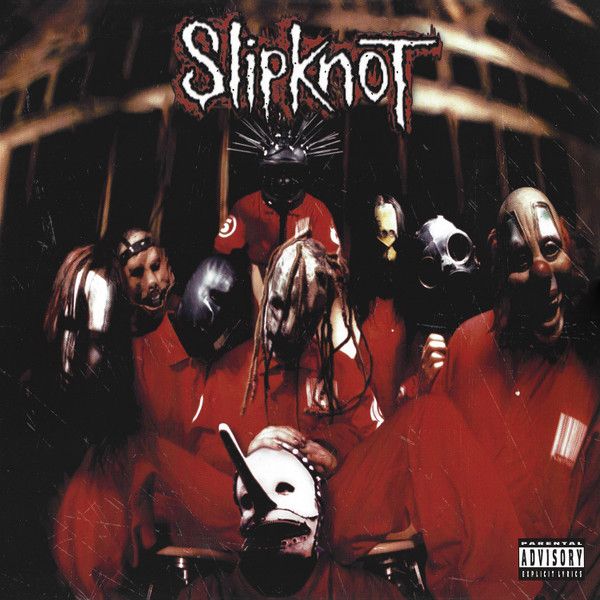
1. Slipknot
Slipknot
[Roadrunner; 1999]
“I need some Christmas in my drink.”
It is April 4th, 1996, and Joey Jordison is so excited he’s ready to pass out. After furiously spreading the word through poster distribution, 200 people had shown up to a Des Moines, Iowa nightclub called Safari where Slipknot were preparing to make their big debut. Finally, after years of assembling the band and spending well over $40,000 on a mere demo, Slipknot had arrived. They pressed through the crowd, their dirty homemade masks eliciting as much confusion as fear, to take the stage with feedback bleeding through the speakers. Before the band could play a note, Jordison grabbed the microphone and demanded of the audience:
“I need some Christmas. In my drink.”
During the holidays, the fervent drummer’s grandfather would hoist his glass of Coca-Cola high and let loose the phrase, “I need some Christmas in my drink.” This was the family’s cue to pass him a bottle of Jack Daniels to spice up his virgin glass of soda. For whatever reason Jordison decided this was how he would kick off the career of nu-metal’s most spectacular band.
“I need some Christmas in my drink!”
Over and over and over he screamed. The audience got nervous. Up there in his cheap Halloween mask, Jordison looked like he was cracking under the pressure. Why this phrase? The purging of childhood demons? A legit request for some Christmas in his drink? Whatever the case, once finished with this strange ritual he sat down at his drum kit and launched the band into the song that would become “(sic).” The Christmas had arrived.
Slipknot’s self-titled debut album is the dividing line between the first and second waves of nu-metal. No more a crusty offshoot of industrial flowing from LA but still too abrasive for total pop synthesis- Slipknot shook nu-metal’s lingering stigma free by simply being undeniably good. So good that its impact resonated well outside of nu-metal almost immediately. Metalcore bands quietly reoriented themselves in its wake while existing thrash and groove metal bands were put on notice. If blockbusters like Follow the Leader and Significant Other had shown that this sub-genre was a unit shifter of the highest order then Slipknot proved conclusively that nu-metal was here to stay. Not just grunge successor but the true punk-and-pop follow-up Nirvana’s Nevermind deserved.
Grunge’s approach to trauma could be - somewhat reductively - described as ‘wallowing.’ Bands like Alice In Chains and Pearl Jam created beautiful, muddy pools of regret. Nostalgia and trauma. Conversely, Nu-metal was concerned with catharsis at all costs. Bands of angsty boys bypassing the 'poetry' part of songwriting and just howling it out. This process is described in the lyrics of “Surfacing,” “Picking through the parts exposed [...] Over and over and under my skin.” In Slipknot’s world, pain is purely physical. Something in the immediate environment is causing this and if it can be reached it can be defeated. The album’s overriding “me vs you” thesis could be just as easily read as an attack on one's self. Singer Corey Taylor is determined to liberate his madness and only one of us walks away. The album's first command is “Enemy, show me what you wanna be,” the demand for your truth is even more urgent than victory.
The grimness of the album is overstated; there’s too much life here for it to be the dark, overbearing tormentscape that it’s often sold as. Taylor, for one, seems to be having a blast with his goofy gangsta persona (“I guess it’s time to bury your ass with the chrome / straight to the dome”) while also surprising with his deftness (Taylor's flow on “Liberate” is solid). All over the record is an unbridled passion for playing; these guys are good and they know it. That energy beams brighter than all the lyrics about hate and pain ever could. Until Slipknot’s arrival, nu-metal had been defined by a sloppy passion, and enthusiasm overpowering accuracy. Korn’s ‘DIY’ approach to guitar technique, Fred Durst’s economical rap stylings, or Coal Chamber’s knuckle-dragging grooves. Meanwhile, Slipknot showed up with a sound that shreds through thrash, bounce, blast, and groove so effectively that it makes a nine-piece band sound as regimented as a platoon. For a band with two percussionists and a DJ, it’s remarkable how nobody sounds like dead weight. Across Slipknot every member has equal importance, muscles activating and resting for each burst of drop-tuned guitar or rattling percussive accompaniment or turntable scratch. But if Slipknot stands shoulder to shoulder there’s one member who leads by a nose: Joey Jordison.
Joey Jordison was Slipknot’s drill Sergeant, pushing the band to be harder, faster, stronger from rehearsal to studio to stage. It was his original efforts that put the band together and earned him the designation of #1 and it’s his mind blowing drum technique that makes Slipknot so untouchable. During the breakdown of “Only One” he unleashes a fill that dispenses with meter - ricocheting between 93 and 84 BPM - before collecting itself and effortlessly snapping back to tempo. On “(sic)” and “Surfacing,” he flips riffs from thrash to bounce with a quick reordering of the drum n’ bass drum patterns that devastate the set metric and lift feet from floor. His blast beats are helicopter blades whipping through the air so intensely they keep the whole apparatus airborne. In short; he was the Christmas in their drink. A slug of hard alcohol that binds the sugar rush together and knocks you on your ass. Producer Ross Robinson was deep enough in his own career to render Joey Jordison and company starstruck while still green enough to approach Slipknot with the ravenous hunger of a junior. Recorded at the same Indigo Ranch that produced Korn only five years prior, Slipknot finds Robinson refining his 'whatever hits hardest' production style into something definitive, a firm middle ground between amateur thrill and professional sheen. A curiously flat for the genre snare is placed into the center of your skull and cranked until it becomes the unstable black matter the rest of the music orbits around. Taylor’s voice is jacked enough to pierce, but with an artful clipping that renders his screams trapped by the booth yet free to roam about your skull. The turntable spinback in “Eyeless” astounds. The haunted forest of car alarms and EKG monitor beeps of “Tattered & Torn” will shear the skin off your earlobes. Slipknot is never anything less than an auditory feast.
Released on June 29th, 1999 Slipknot would become a slow-burn success through the band’s single-minded dedication to touring. Videos abound of the band leveling unsuspecting Ozzfest crowds, transforming skeptical audiences into diehards who accidentally expounded all the energy they were saving for the headliners because of the sheer power on stage. In what could reasonably be called 'a moment,' multi-Grammy awards-winning jazz musician Thundercat singled out Slipknot to Pitchfork of all places as his favorite album of the last 25 years. Yet, despite there being hardly a corner of metal music untouched by Slipknot’s impact it still doesn’t show up often in high acclaim by legacy press. It’s simply too powerful, too bold, too urgent, too alive to be revised and categorized effectively. This two-and-a-half-decade old album somehow sounds like it’s being played live right in your ears every single time it’s on.
Slipknot is a curious pick for an album that demands the title of 'Greatest Ever' because it never insists upon itself. There’s no overriding concept or thematic throughline here; just cylinders pumping forth with the immediacy that powers all of the best nu-metal. Guys with no other options seeing their one shot and taking it. Slipknot exists within its own violent vacuum. Zero nostalgia for its moment or respect for the past; just fuck you all, fuck this world, fuck everything that you stand for. As Taylor states on “Surfacing”; “I am the push that makes you move.” Kinetic energy doesn’t have self-awareness. Slipknot need not concern itself with the millions of guitars sold, the bands formed, or the wrists left un-slashed in its wake. The spark doesn't know it’s going to ignite the fuel that pushes the piston that powers the engine that spins the wheels that makes you move. It just explodes. — H.K.


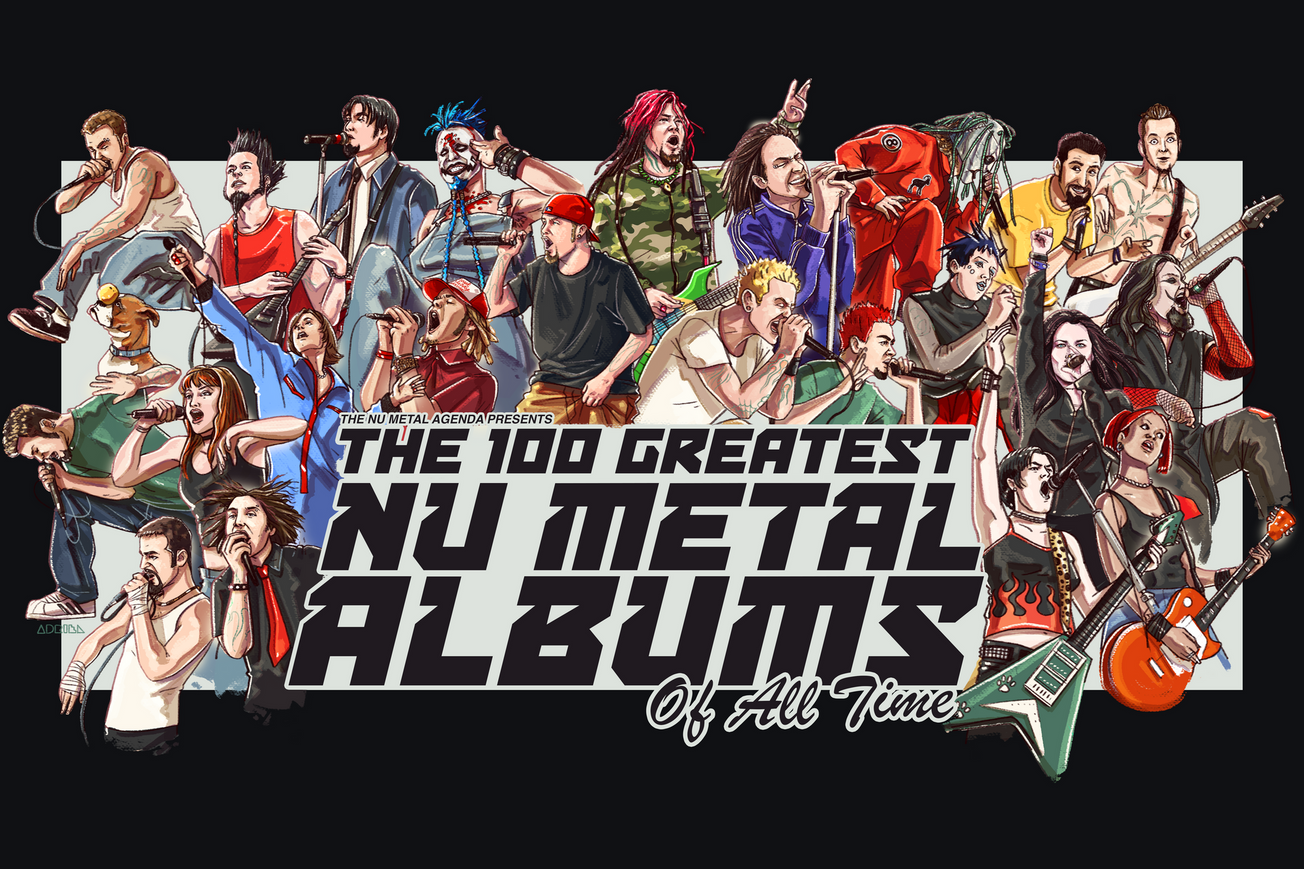
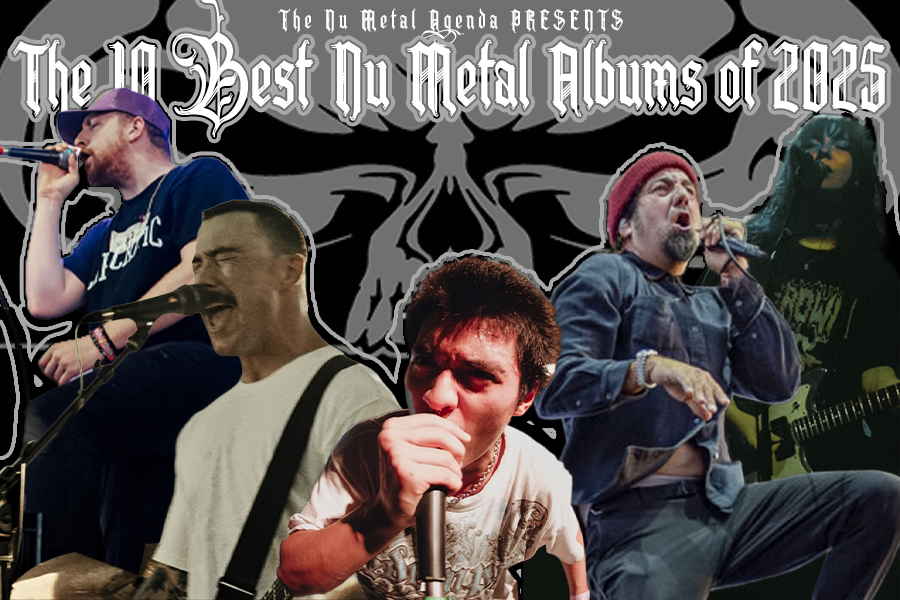

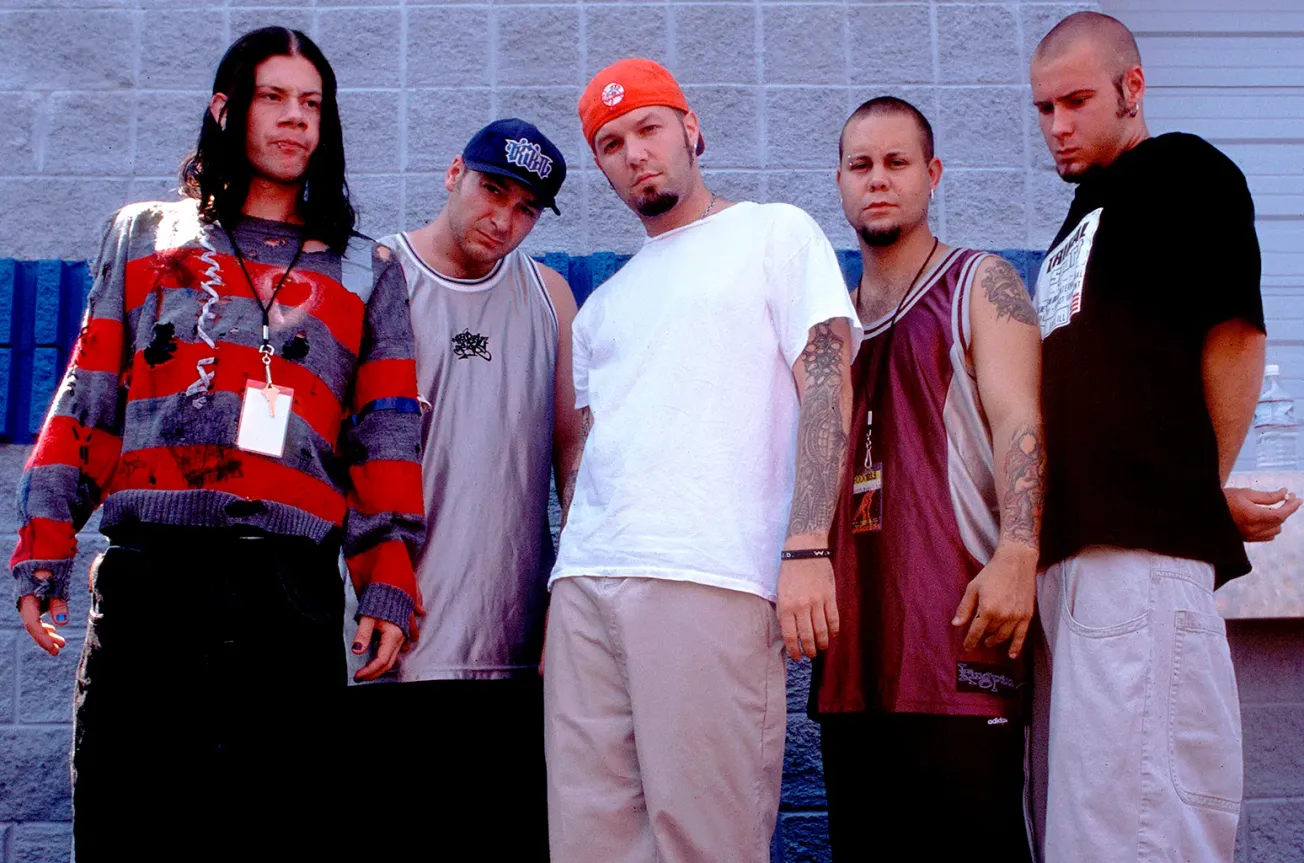

![The Browning Continue To [EVOLVE], Expand Winter Tour](/content/images/size/w1304/2025/12/browning-1000x515--1-.jpg)
